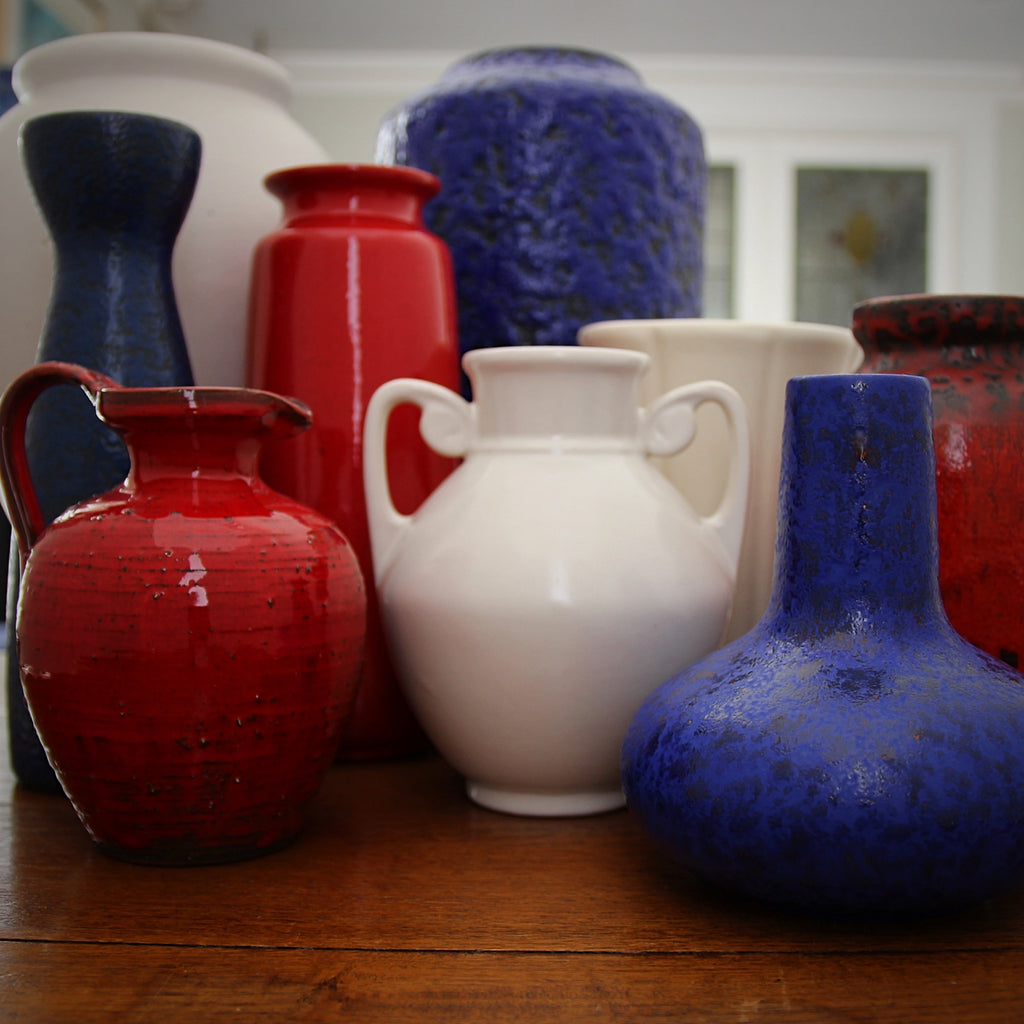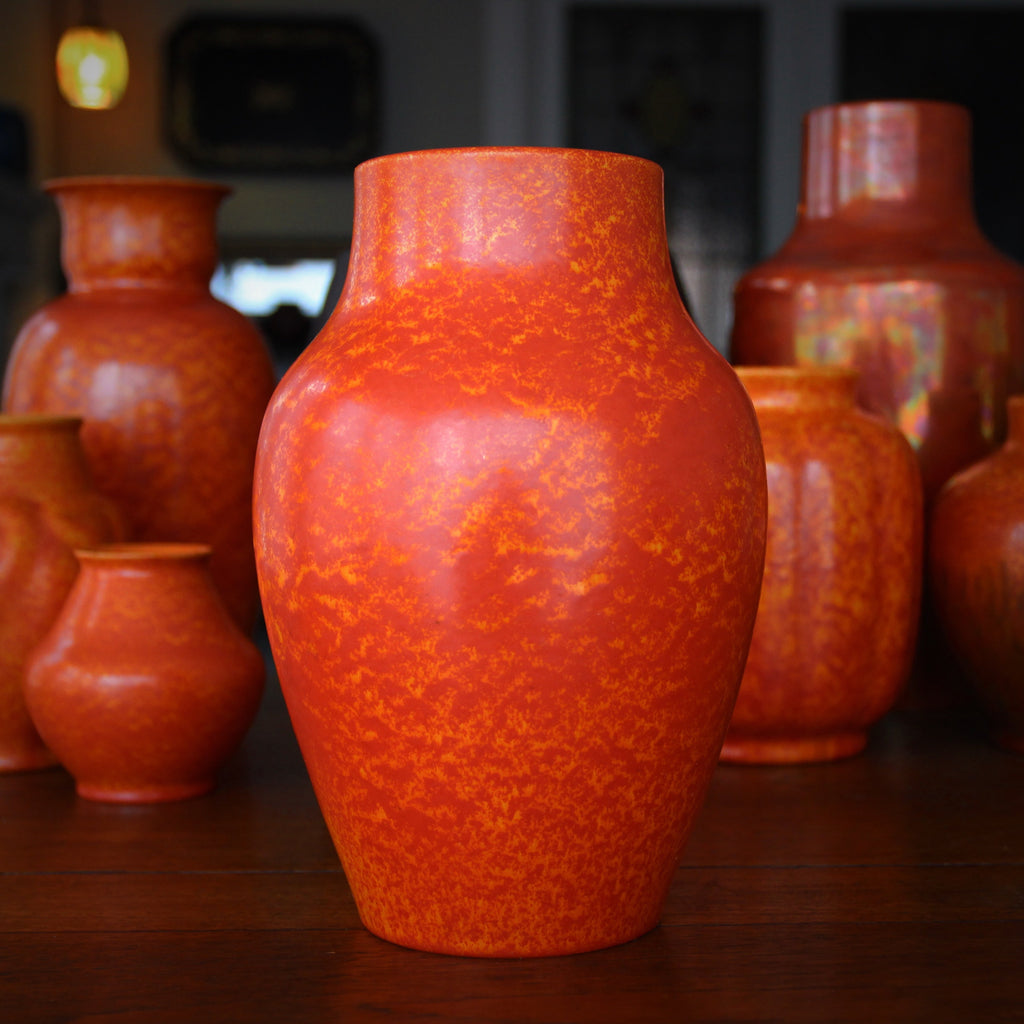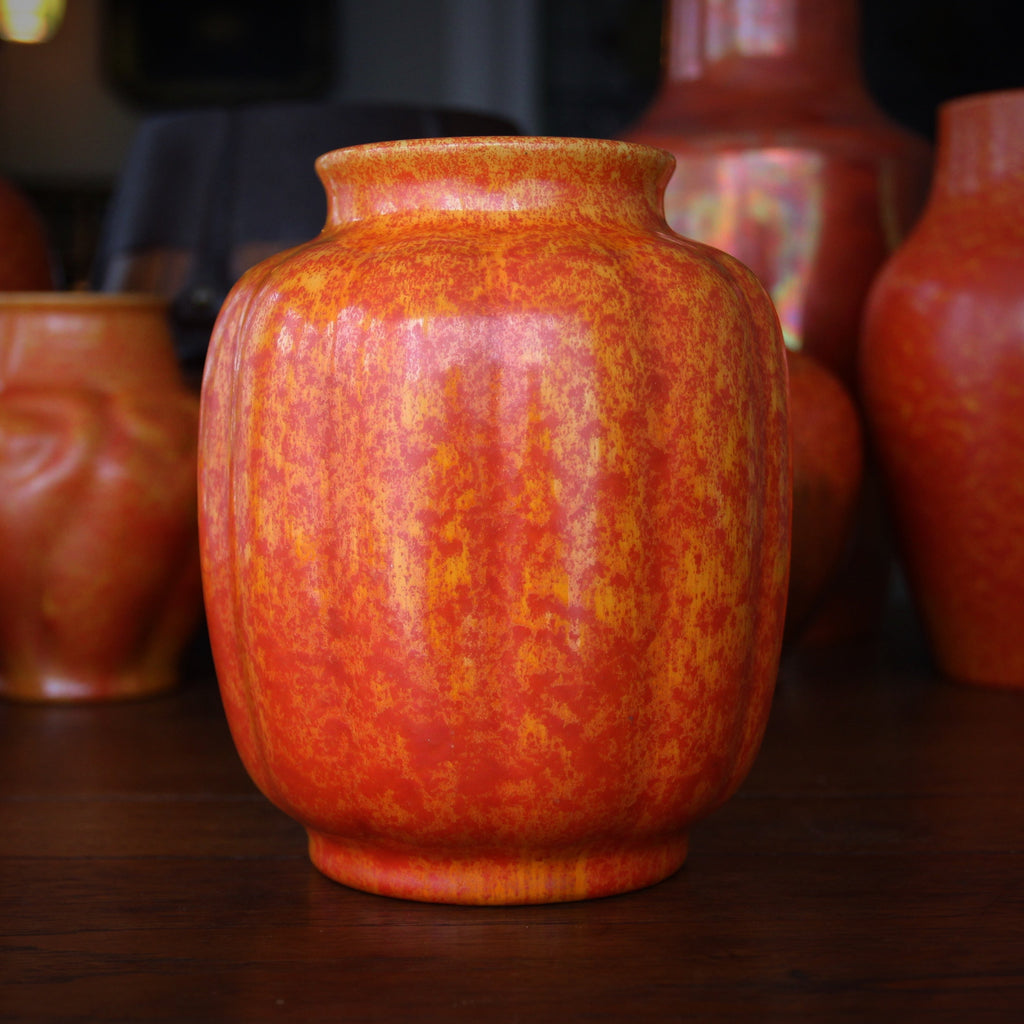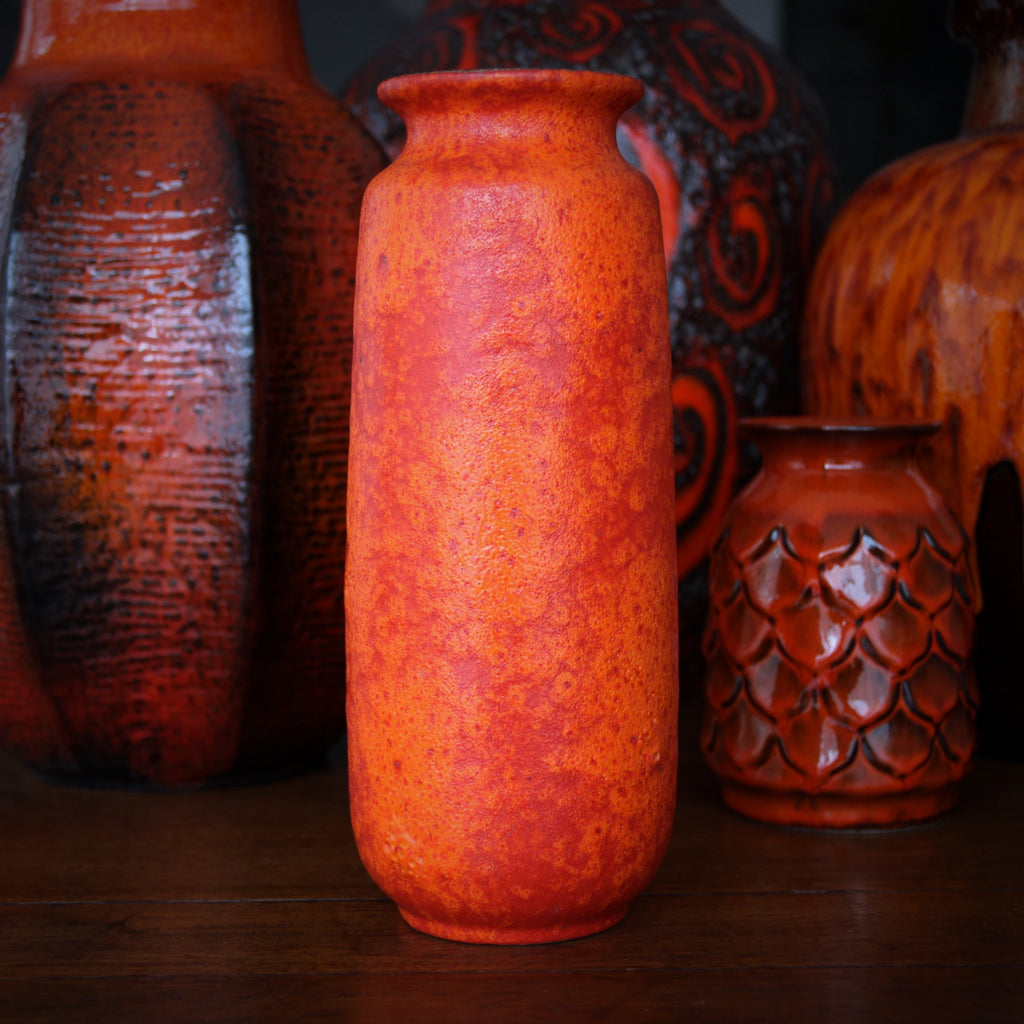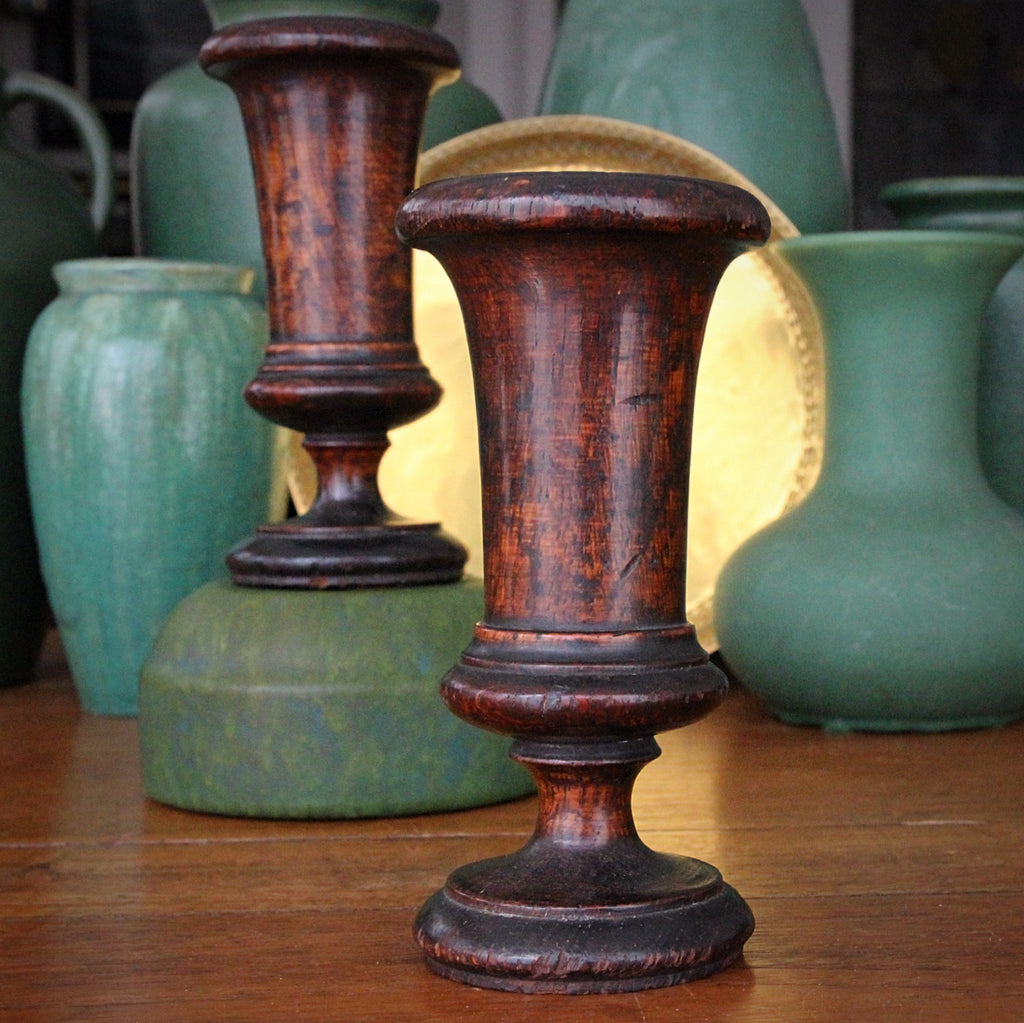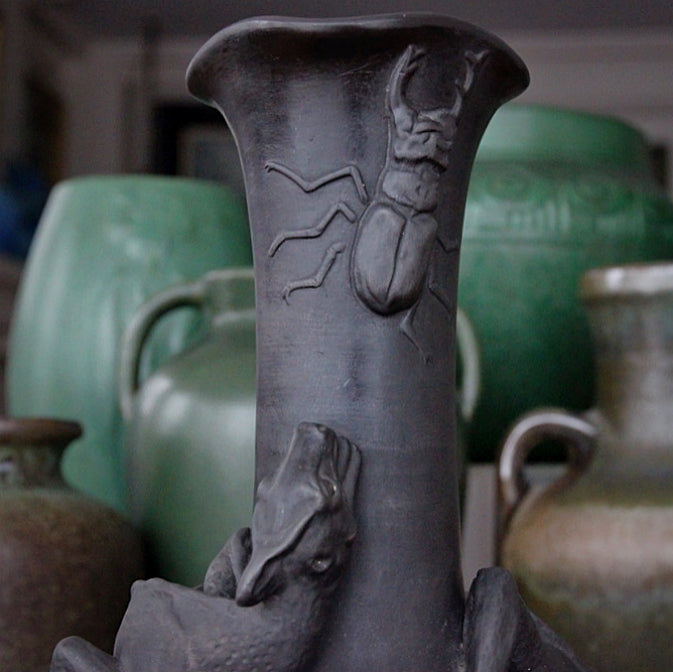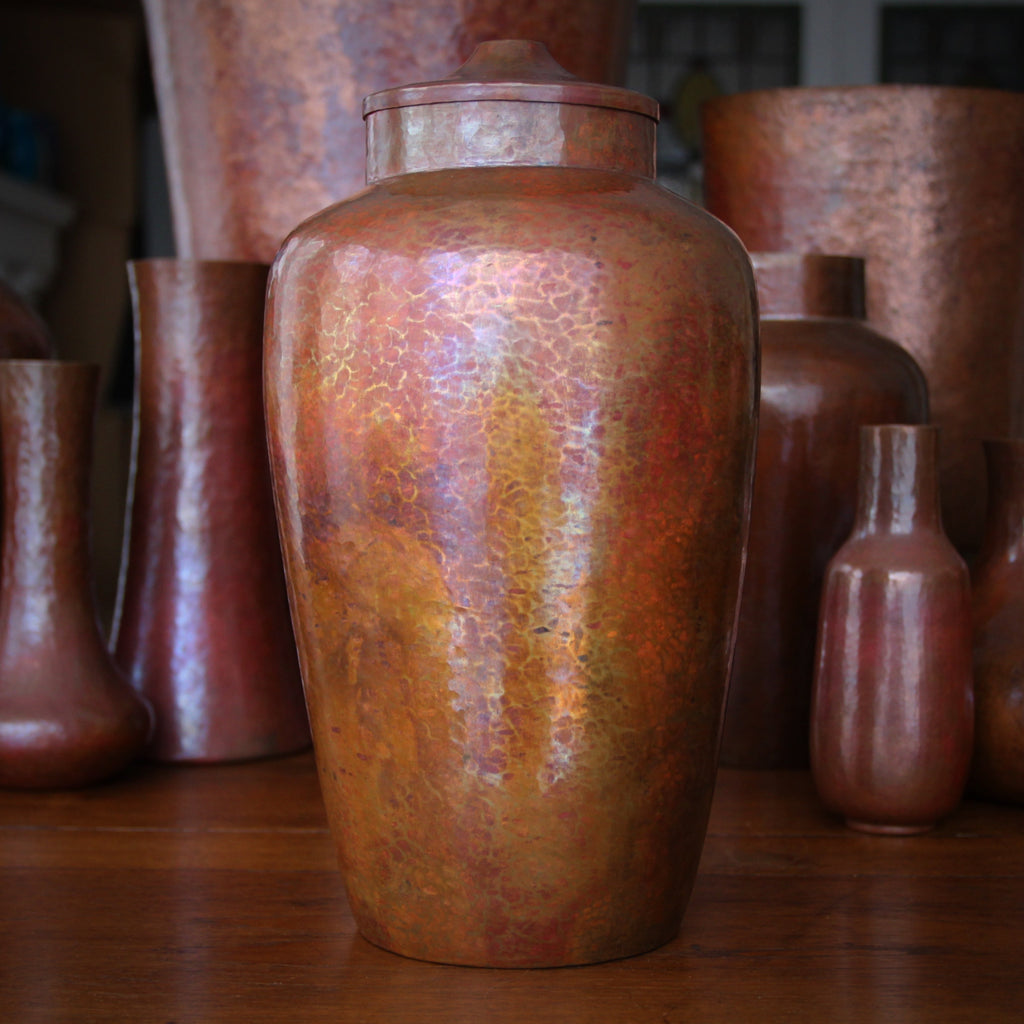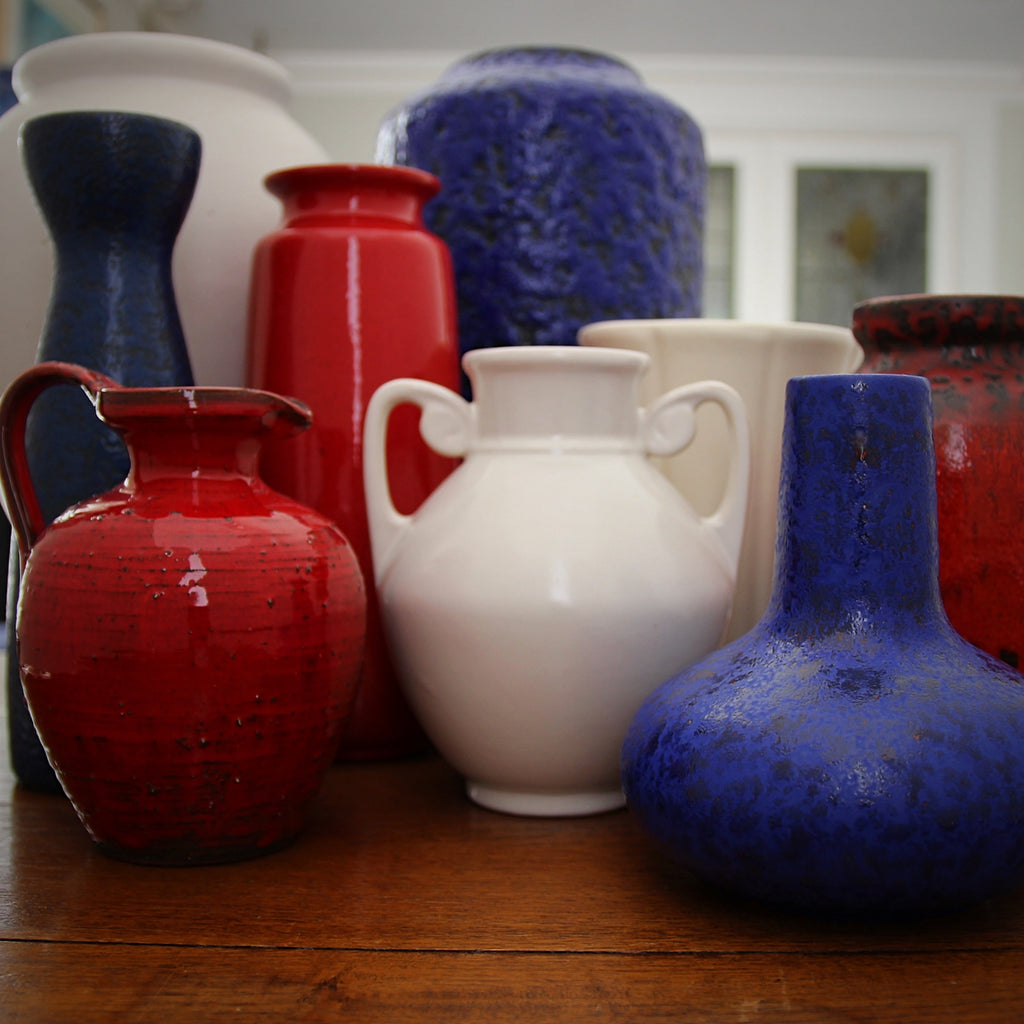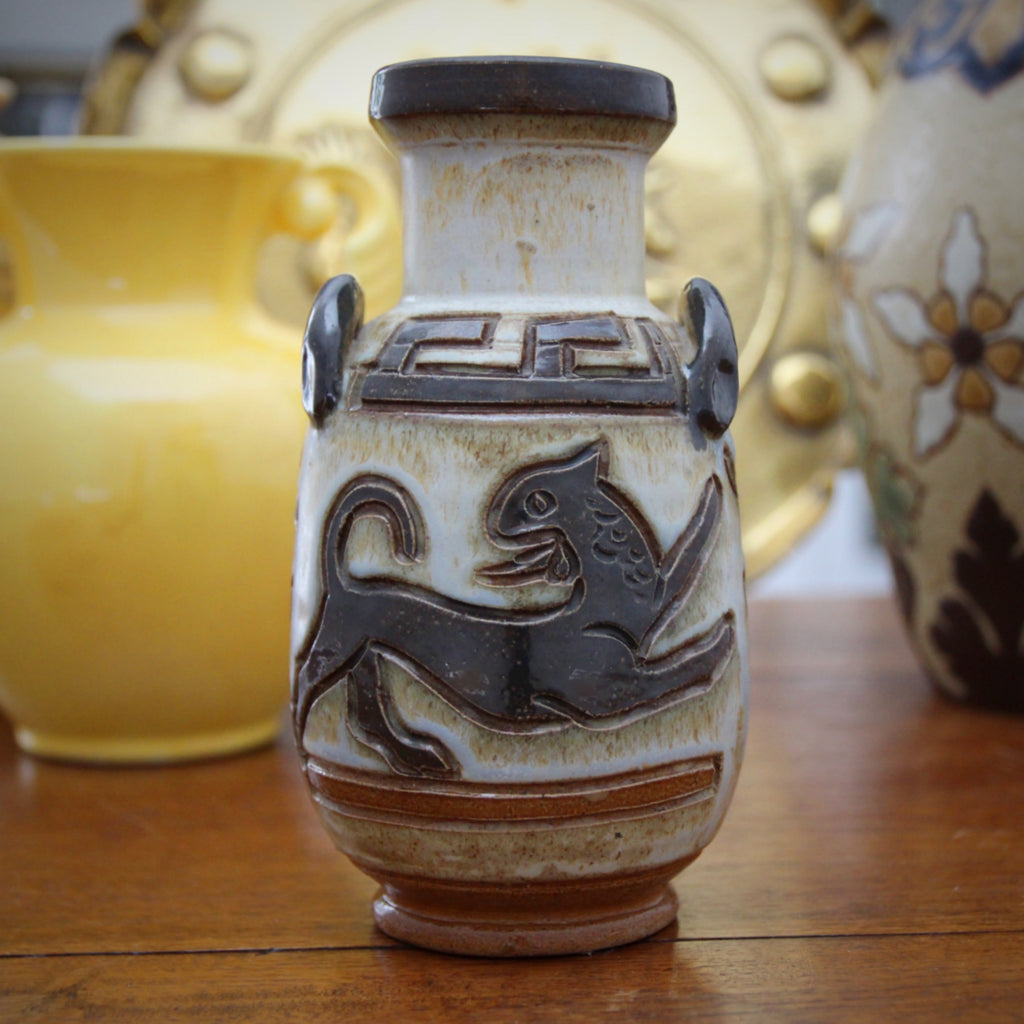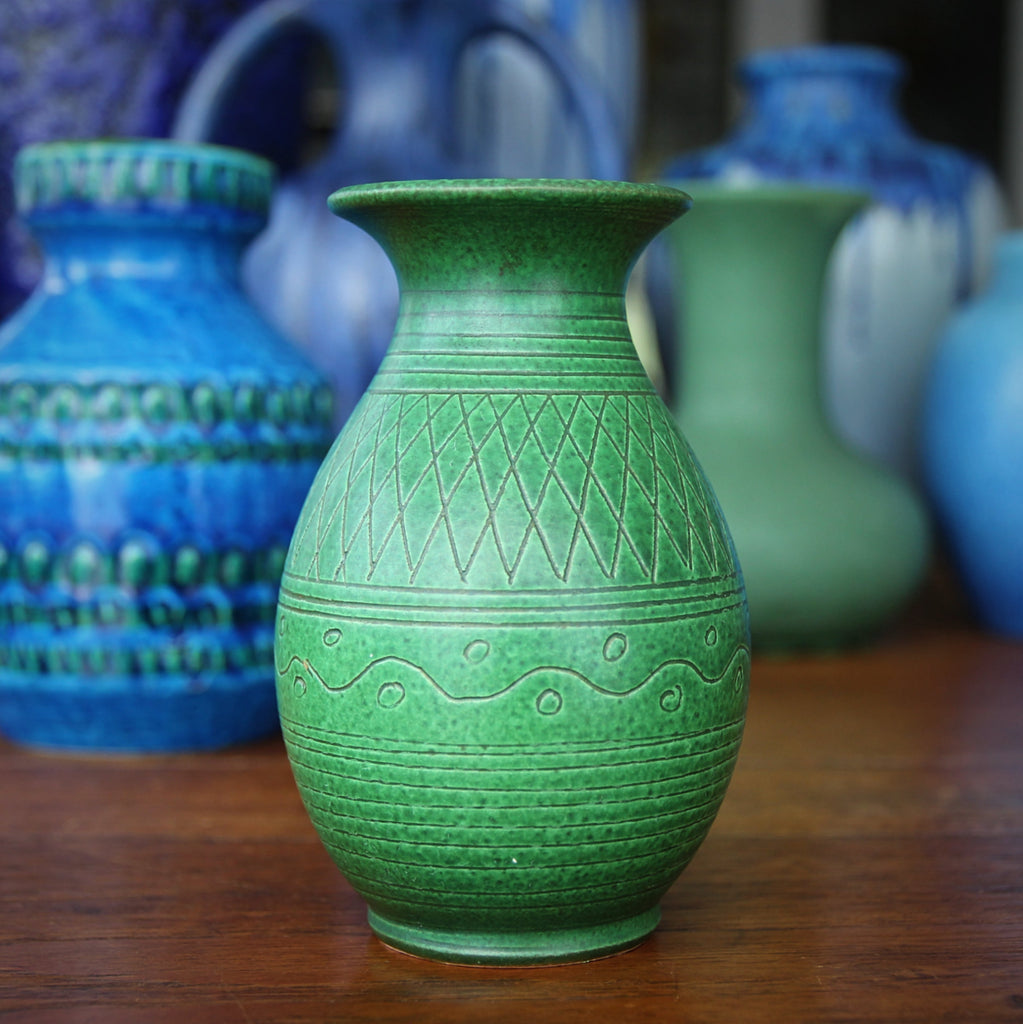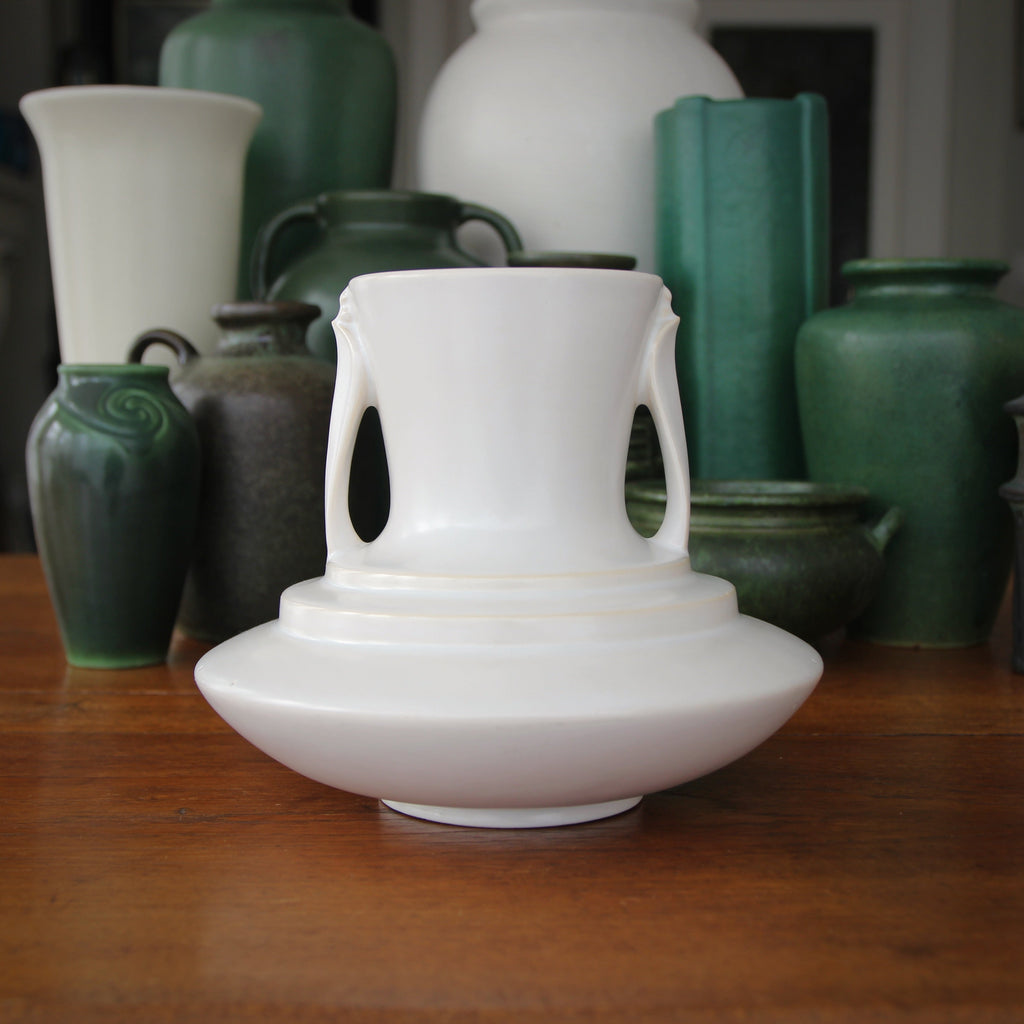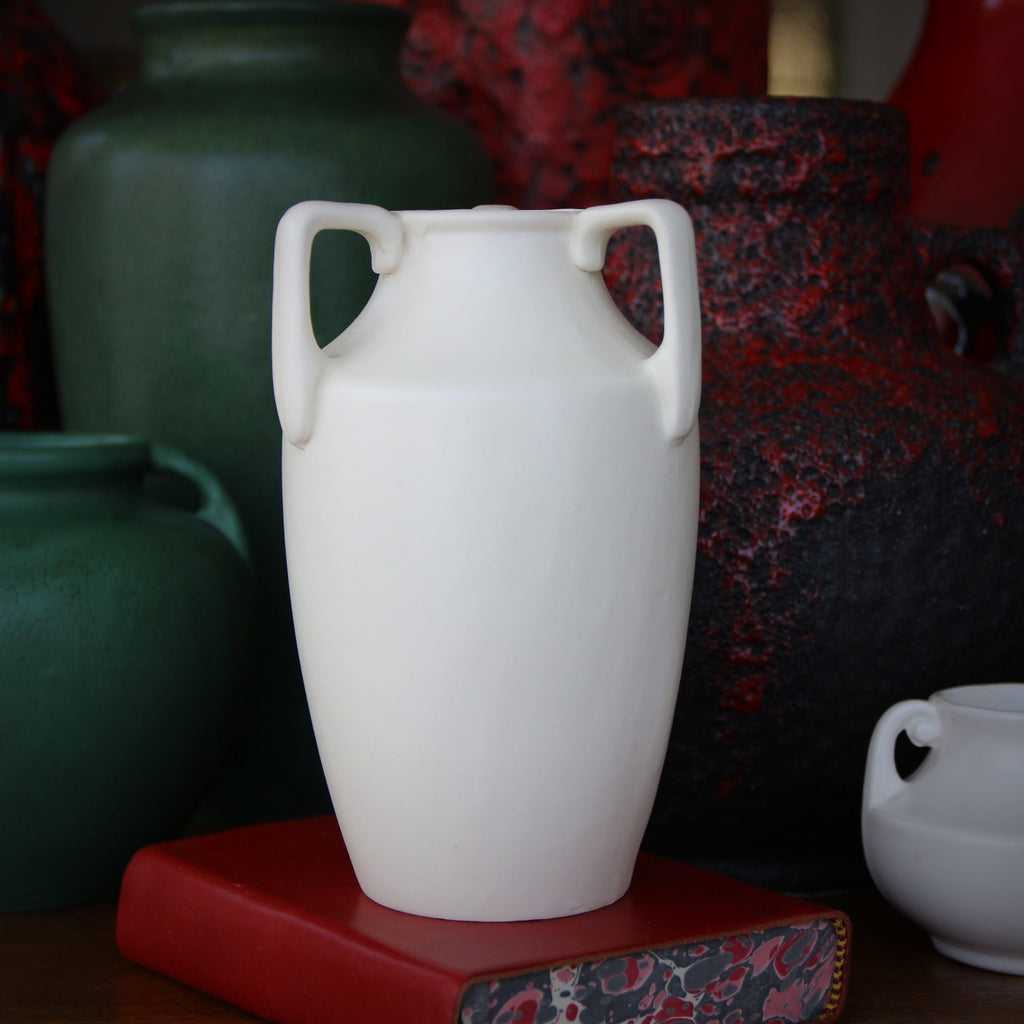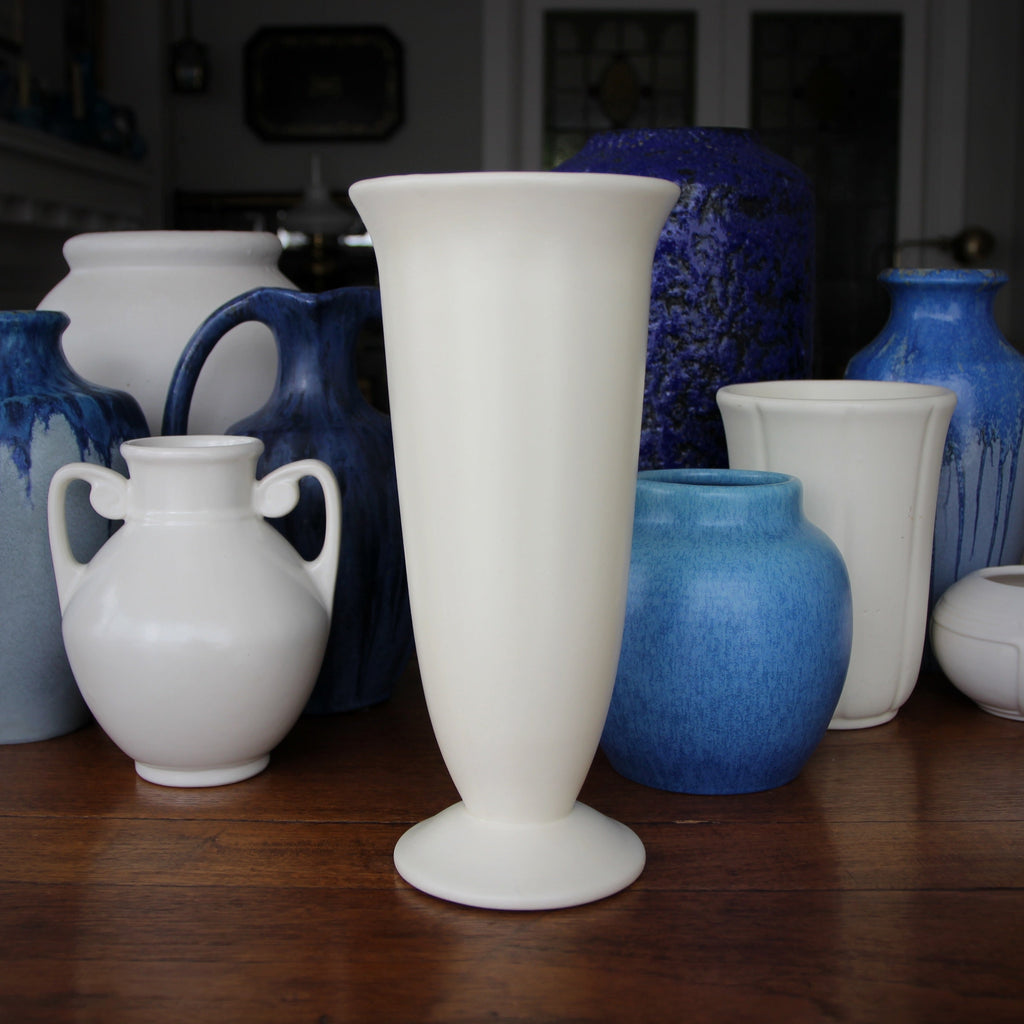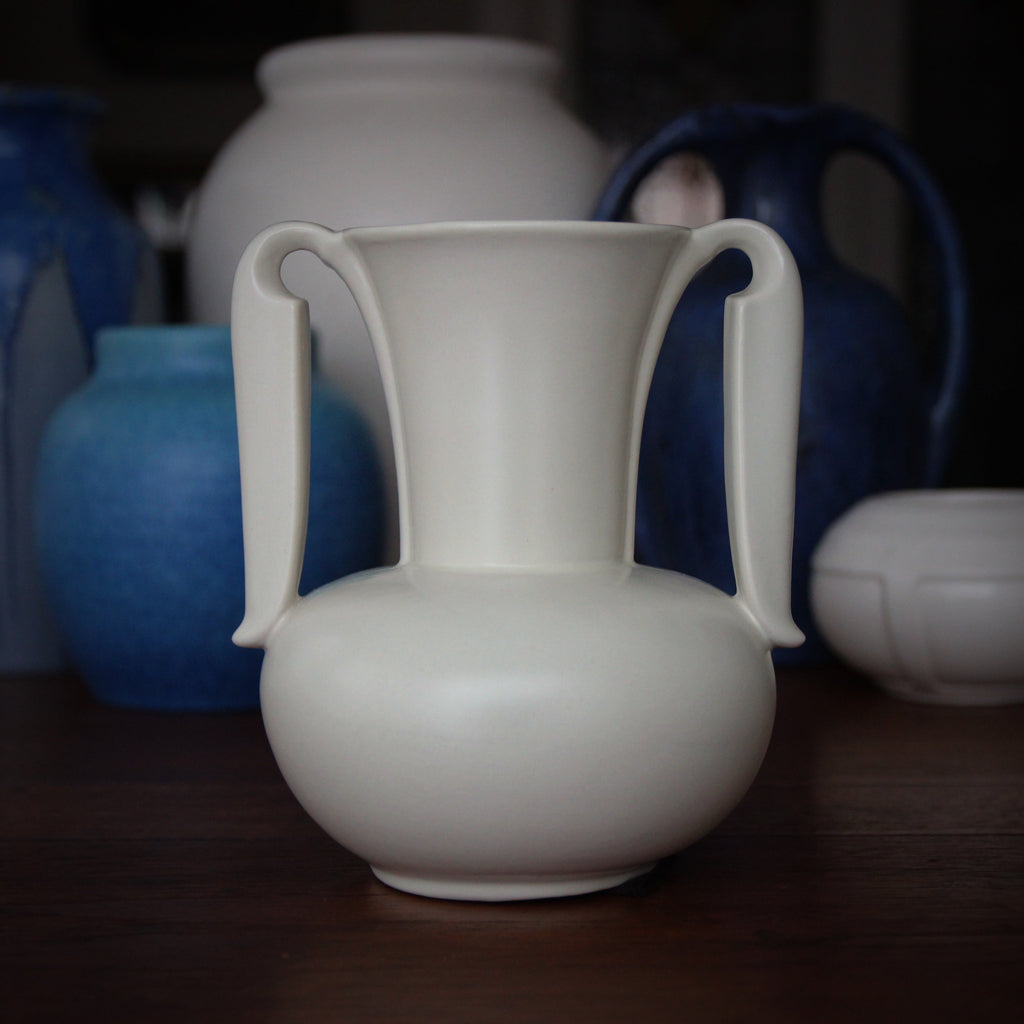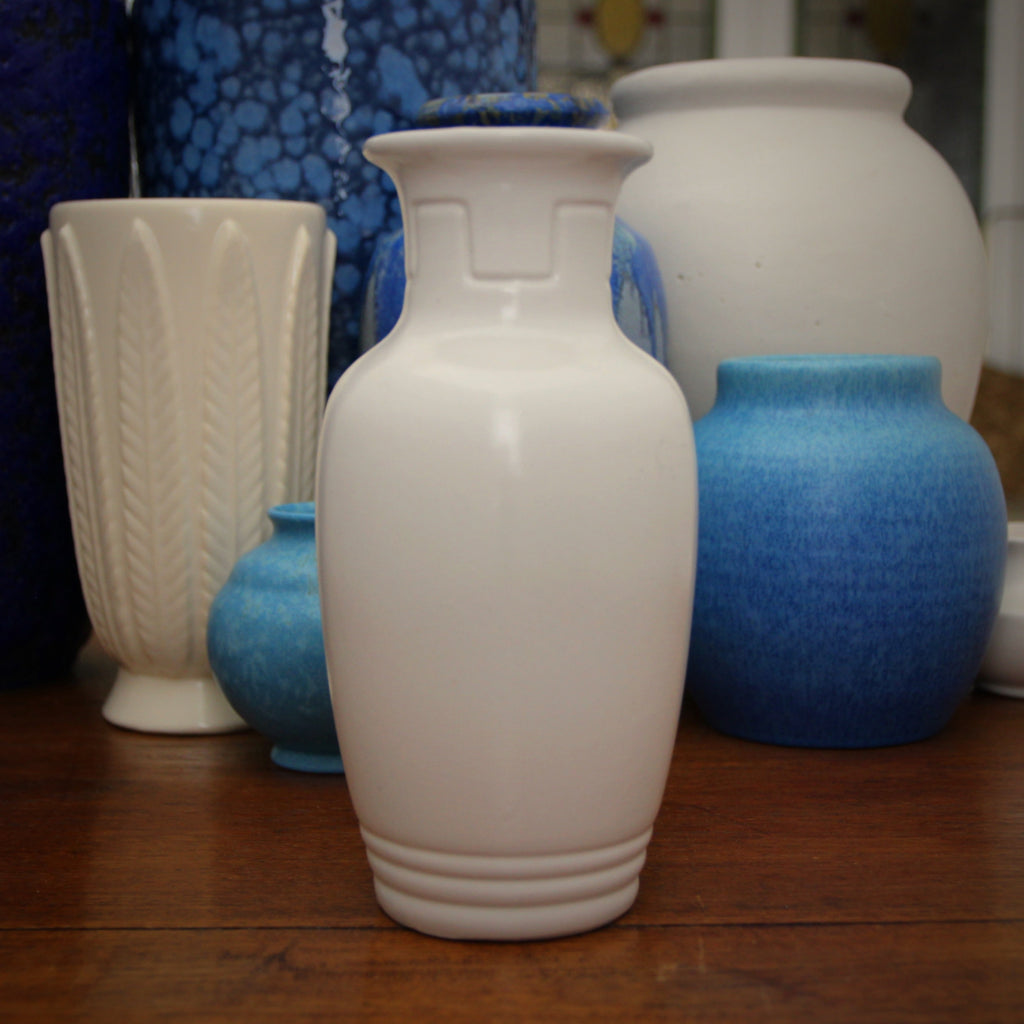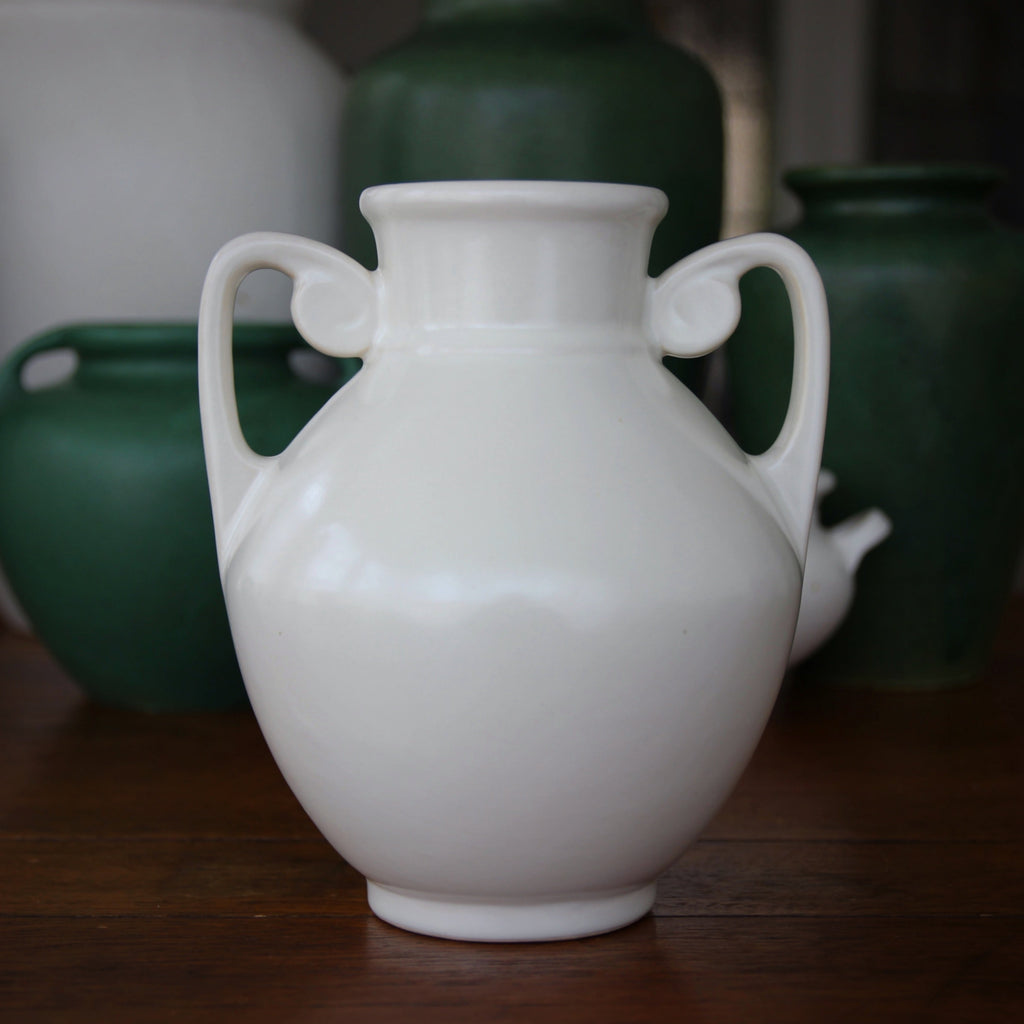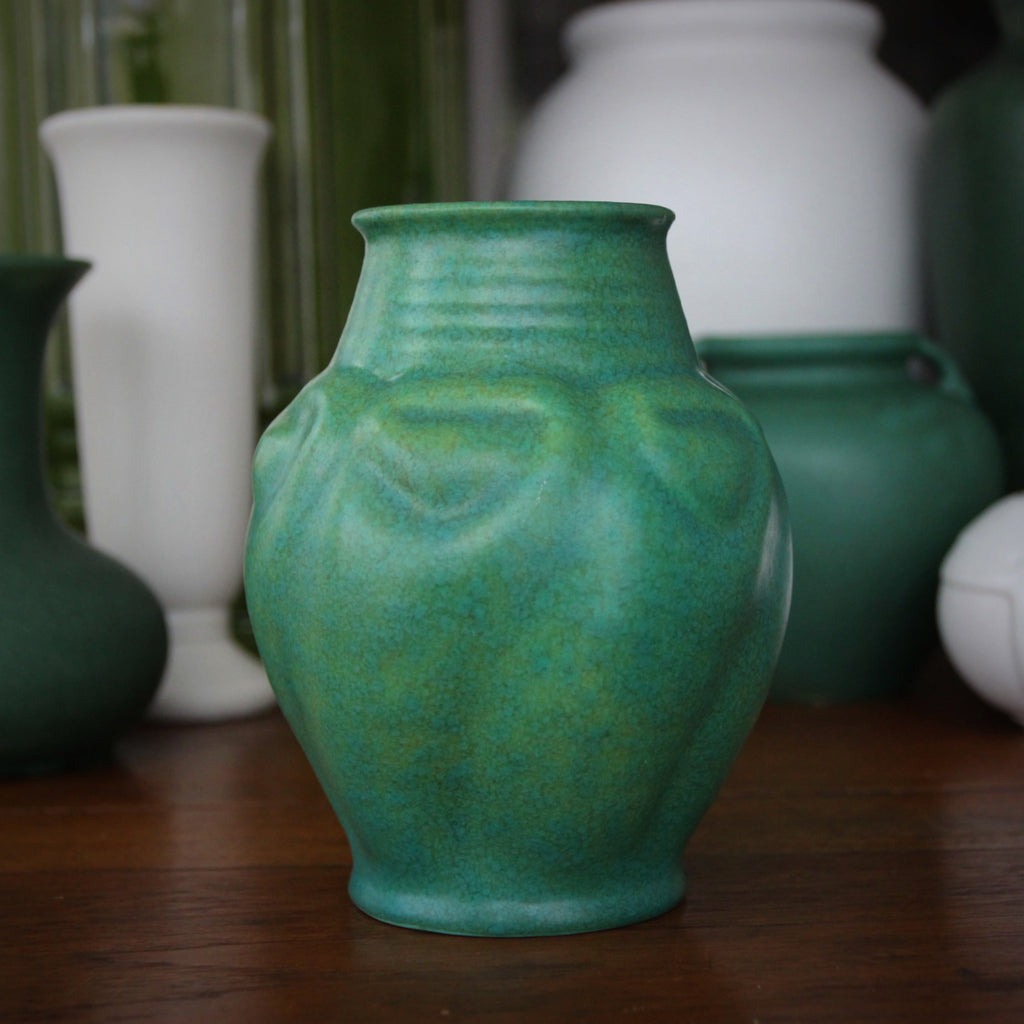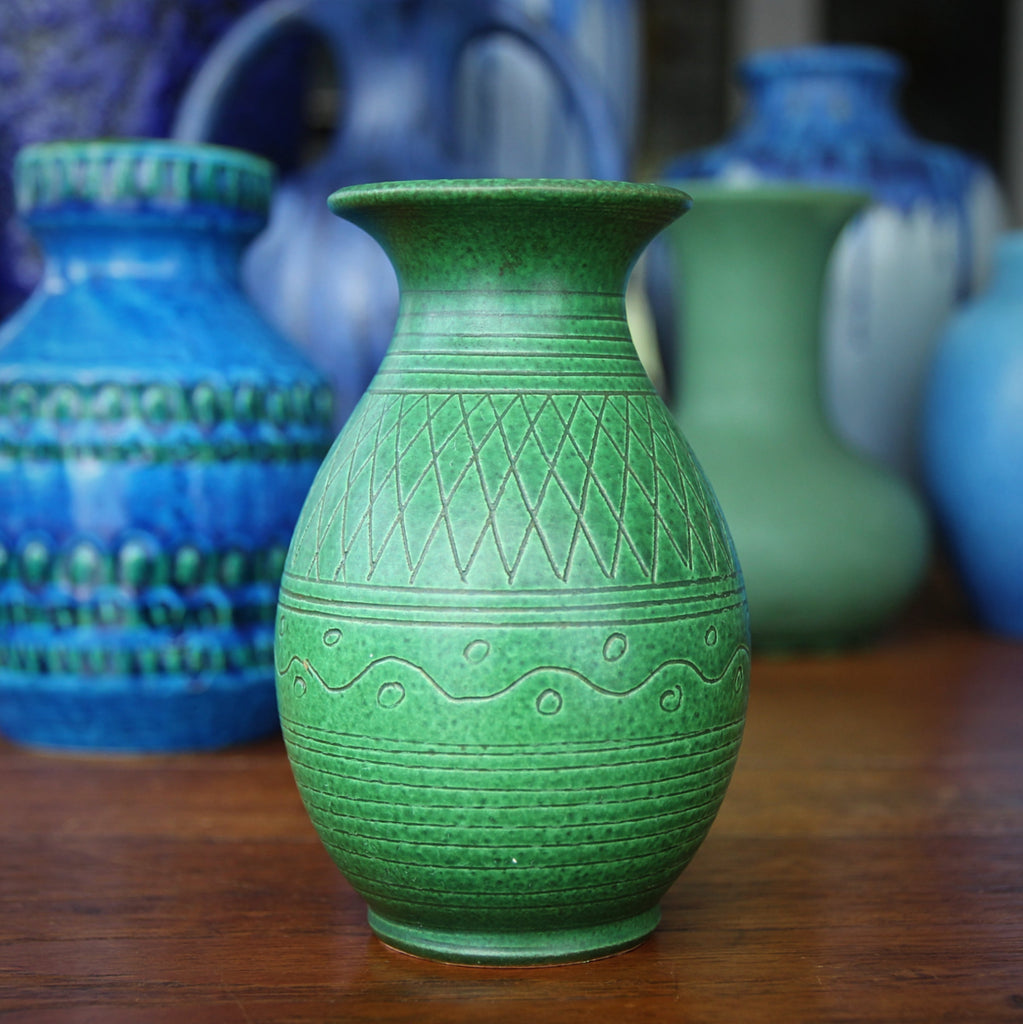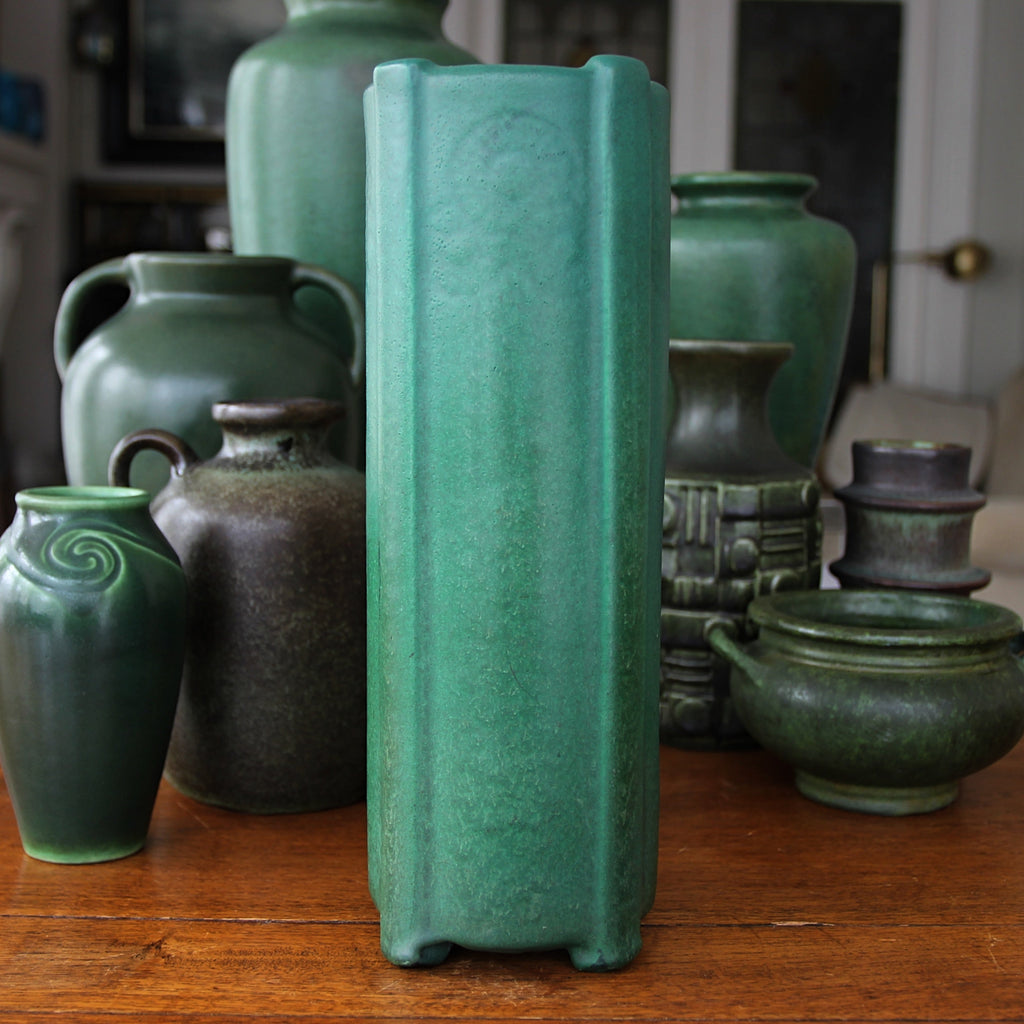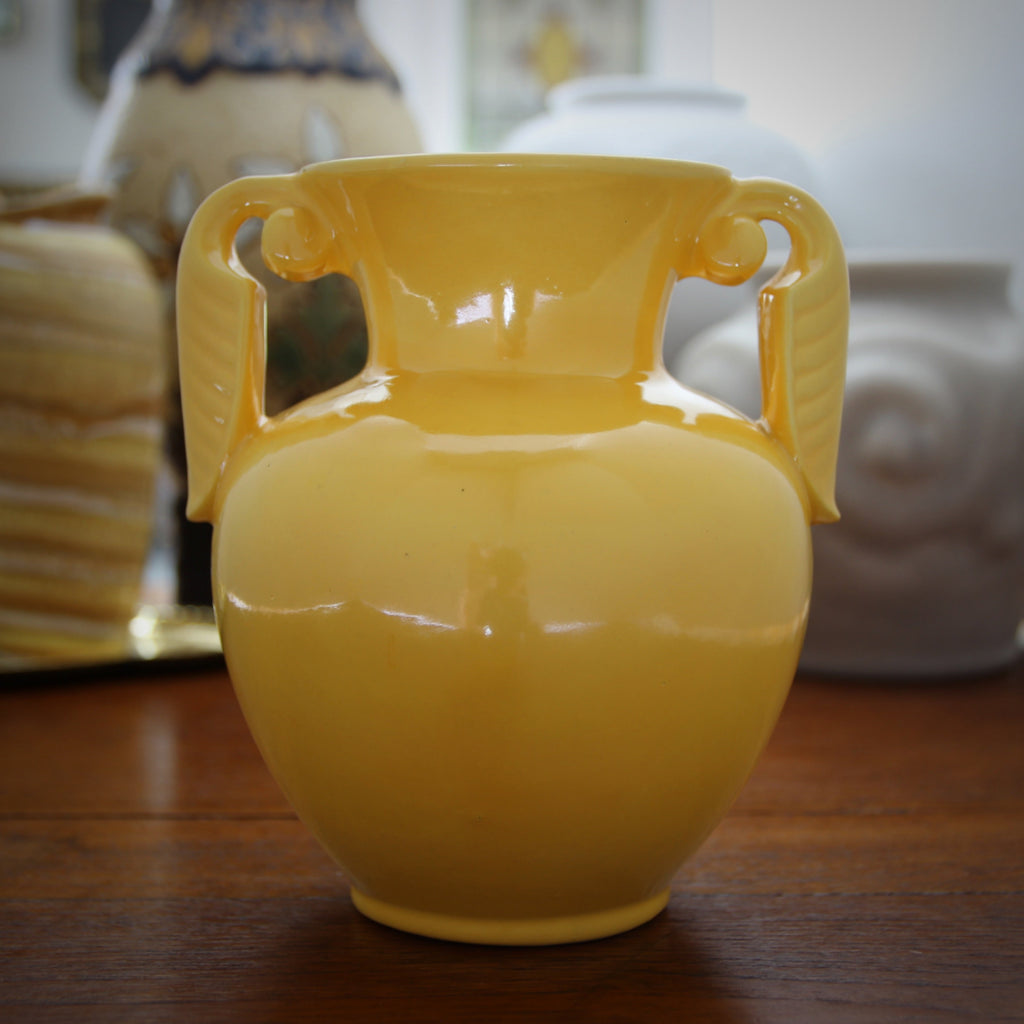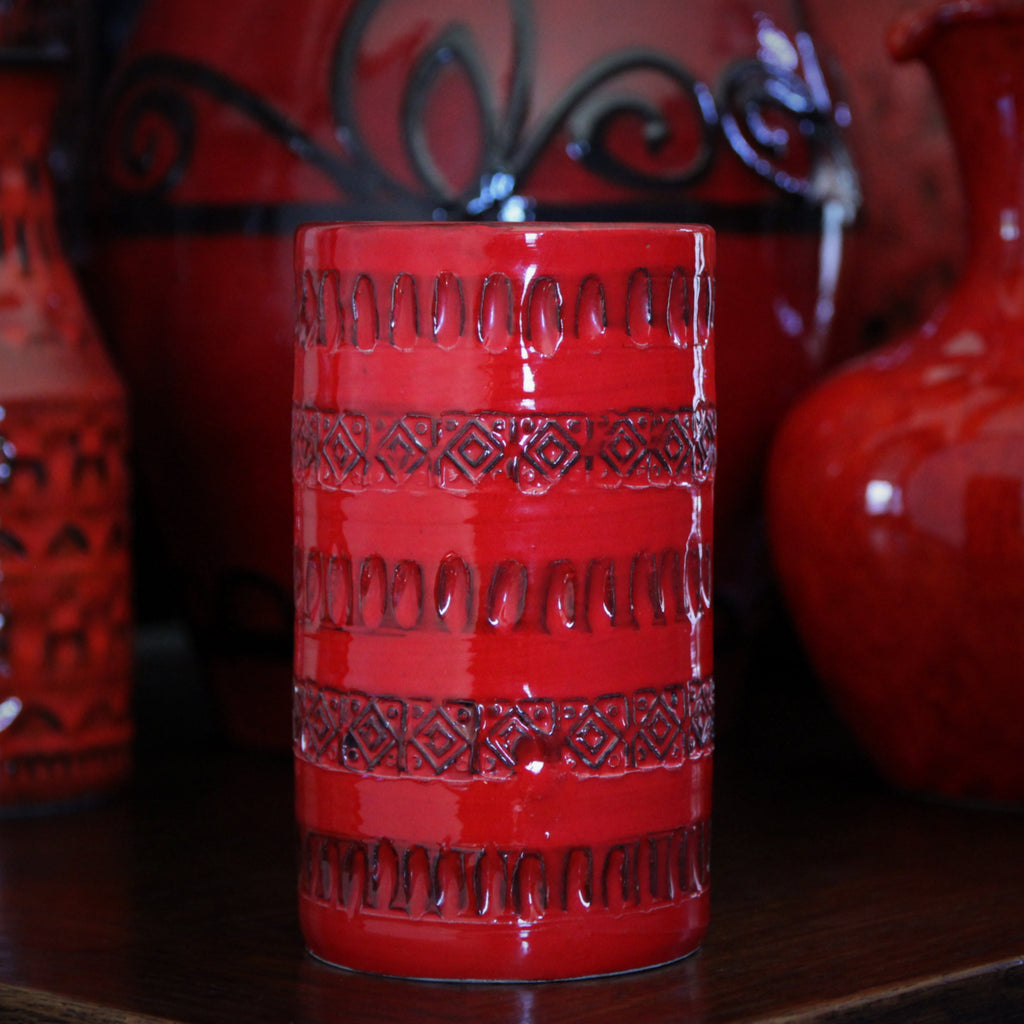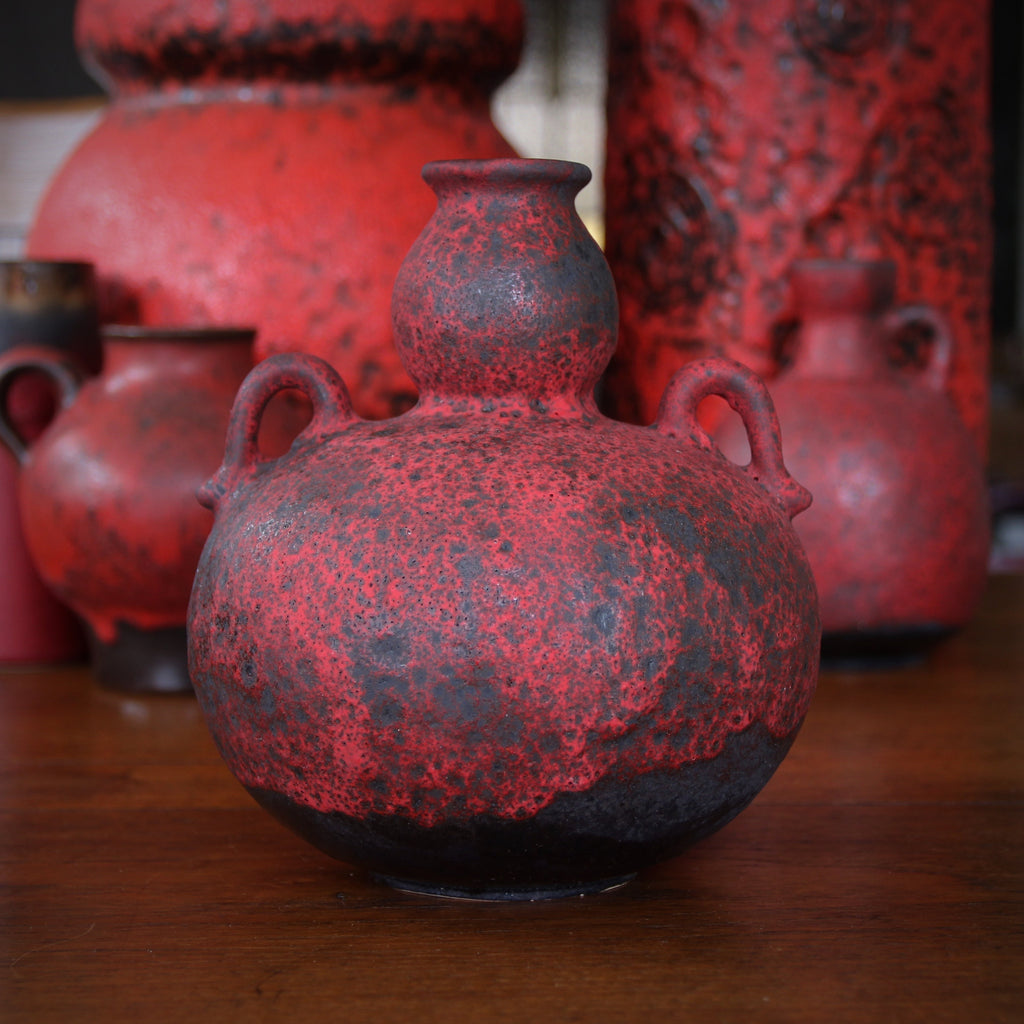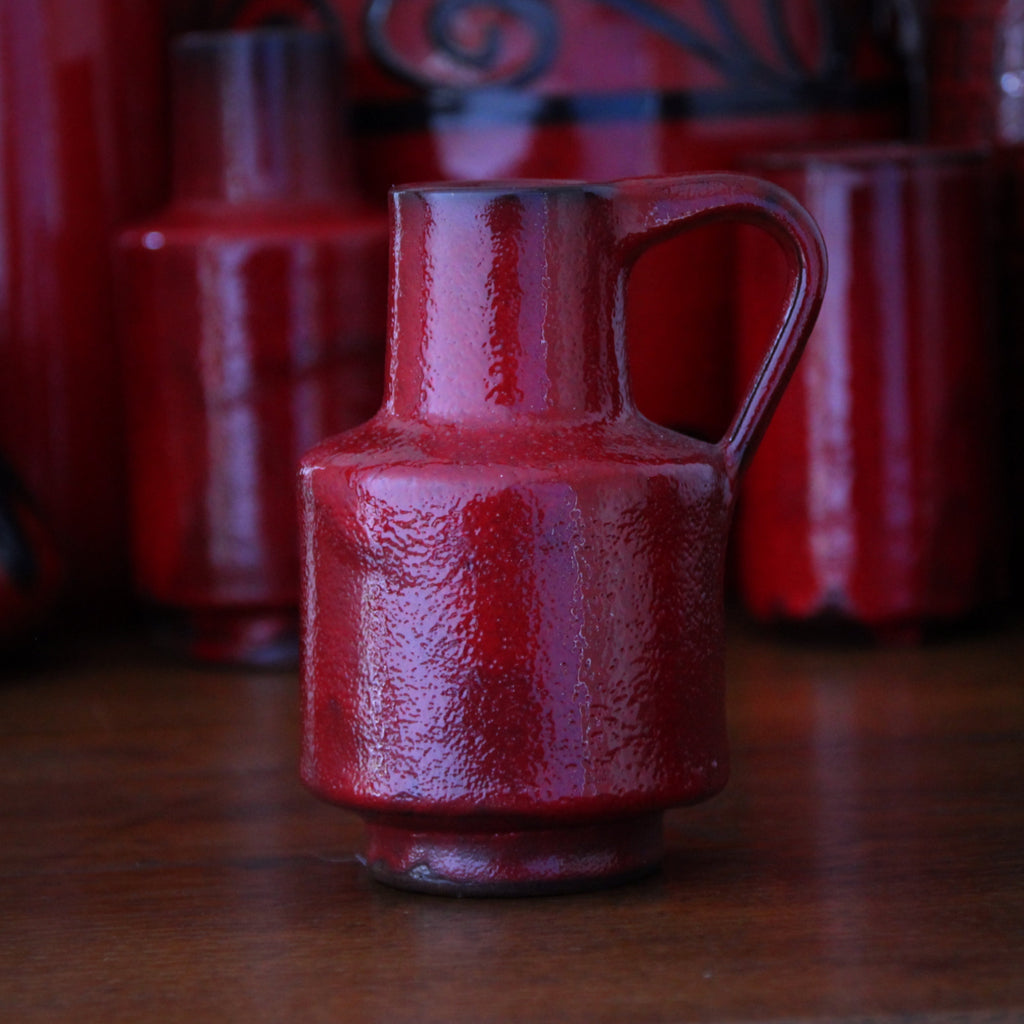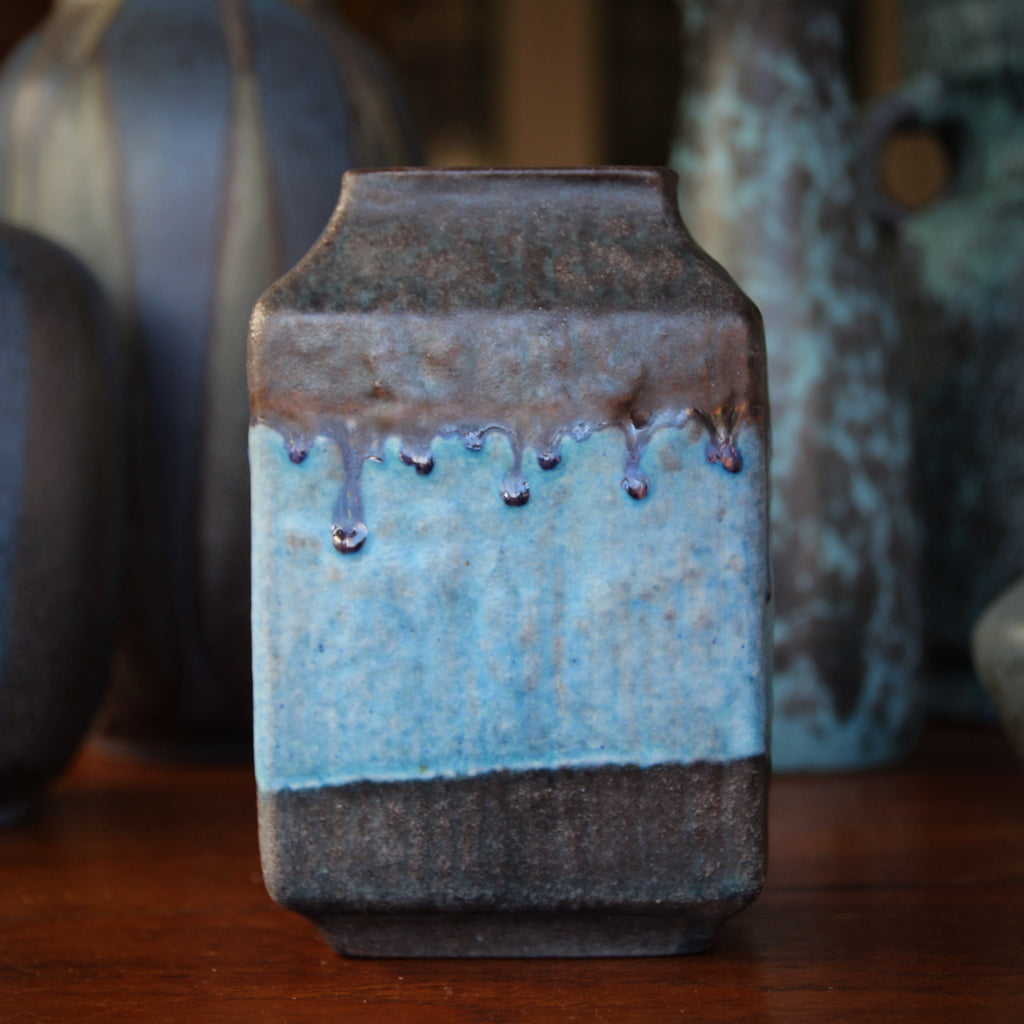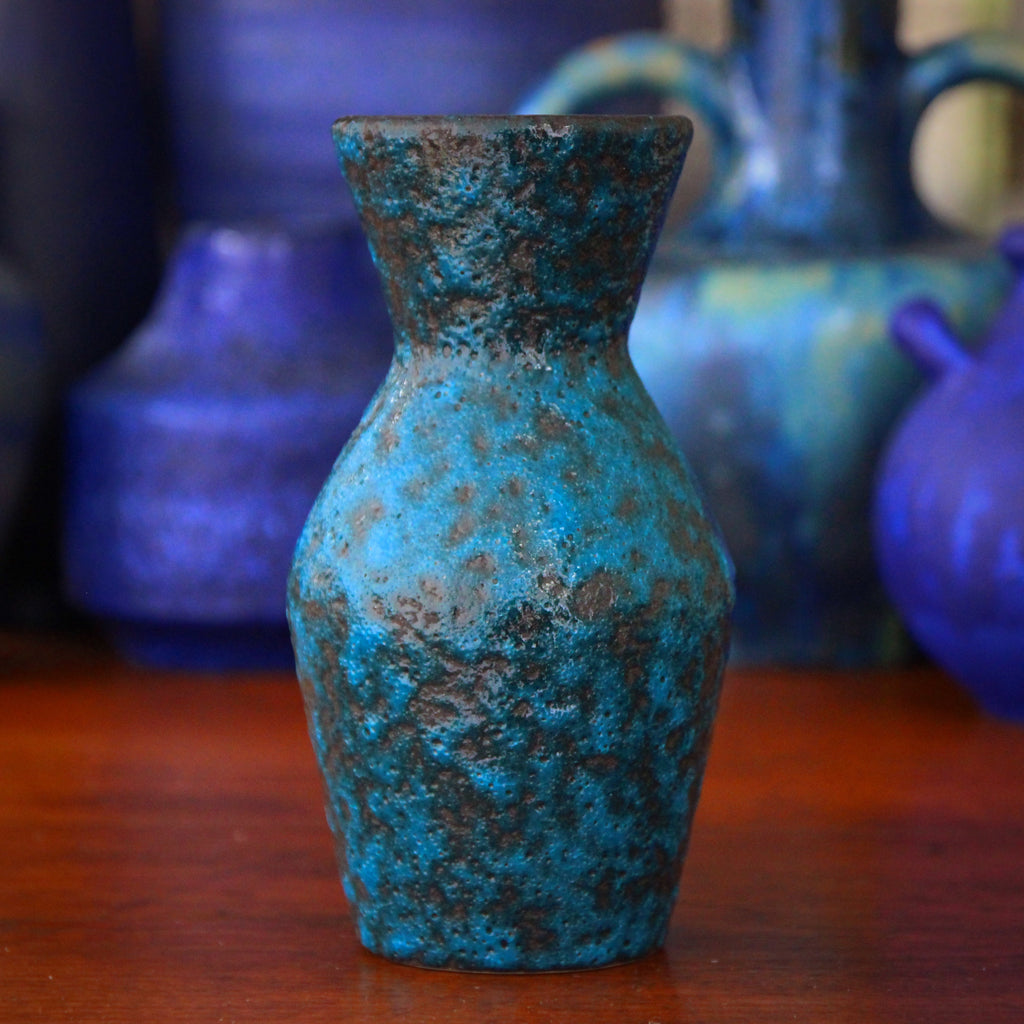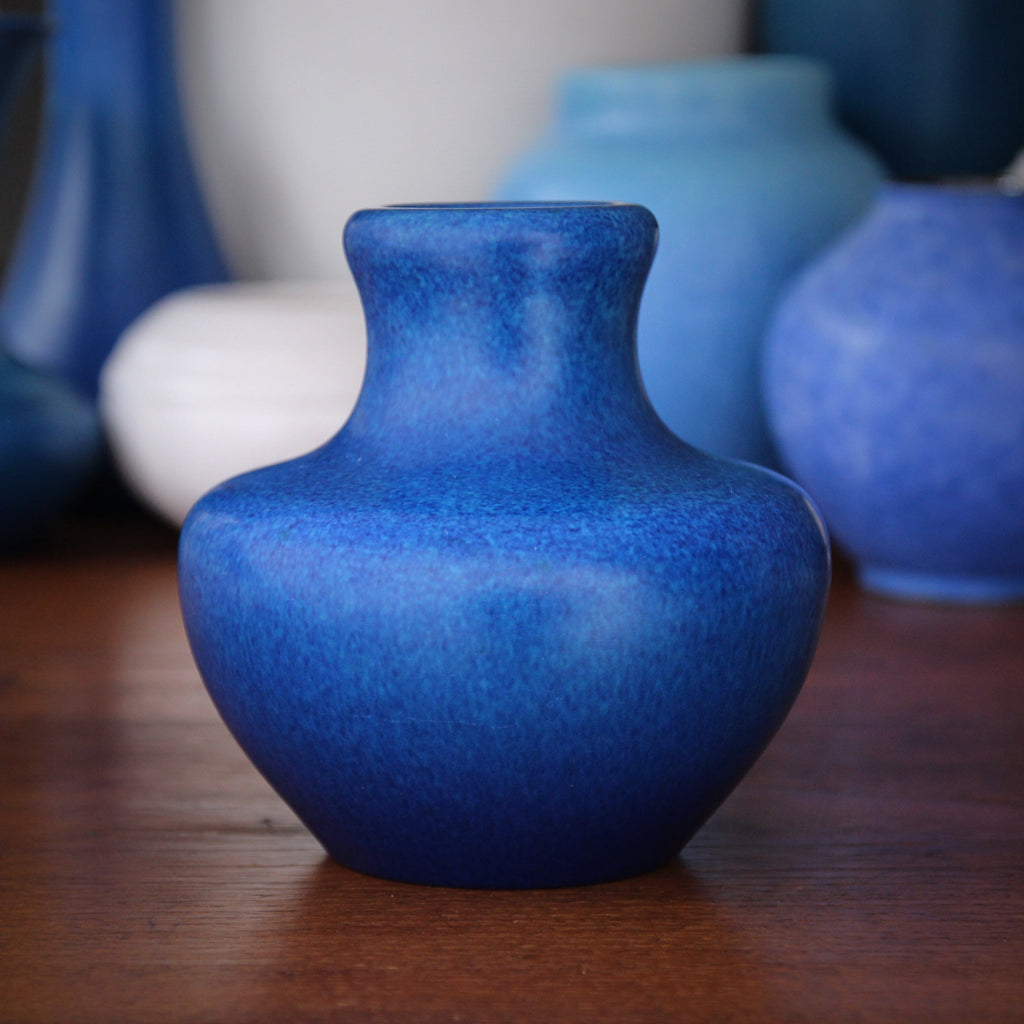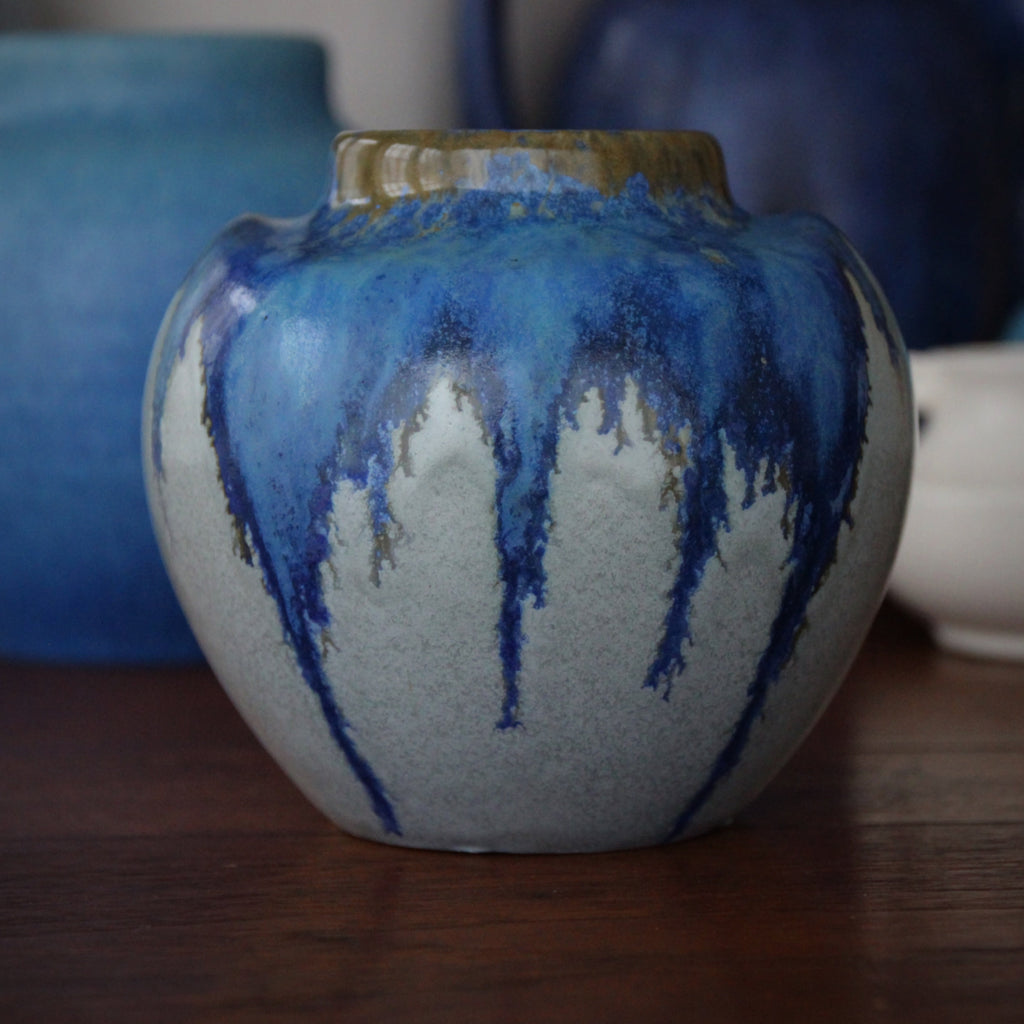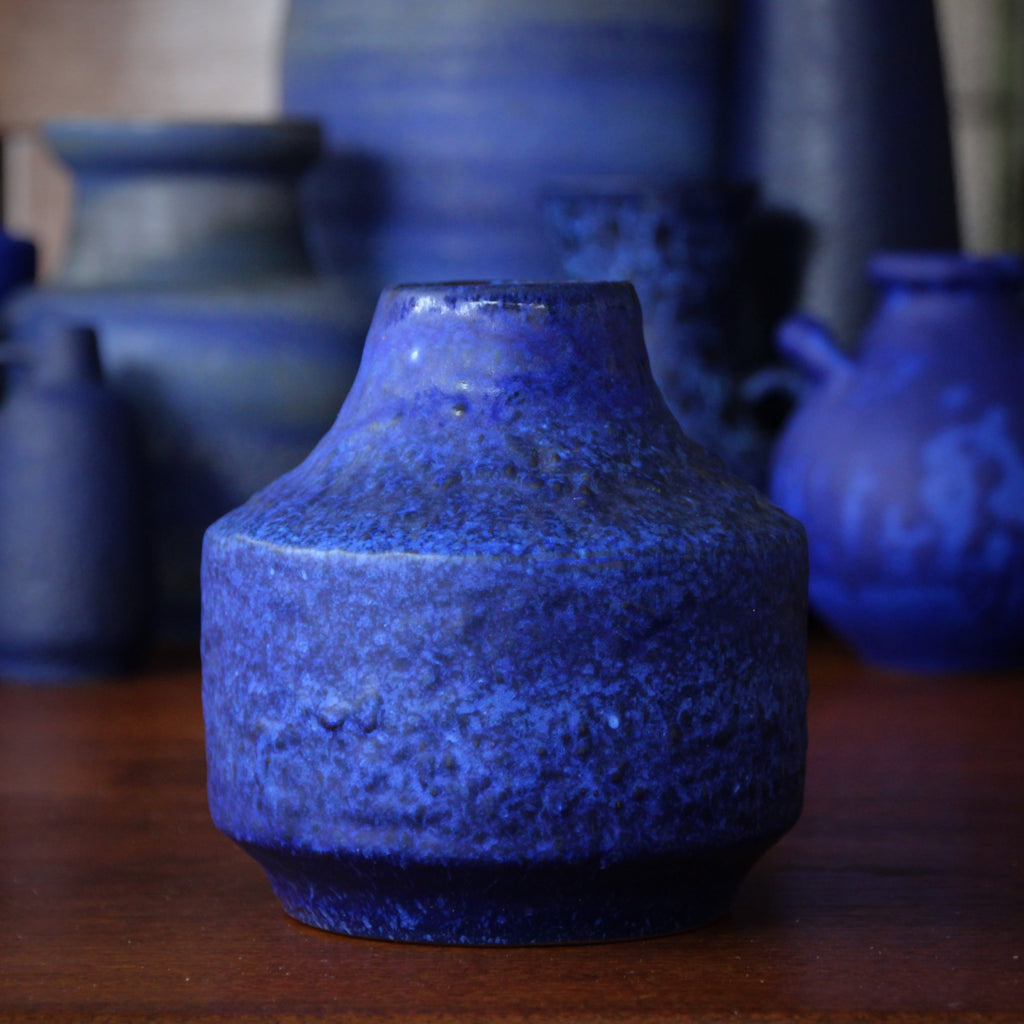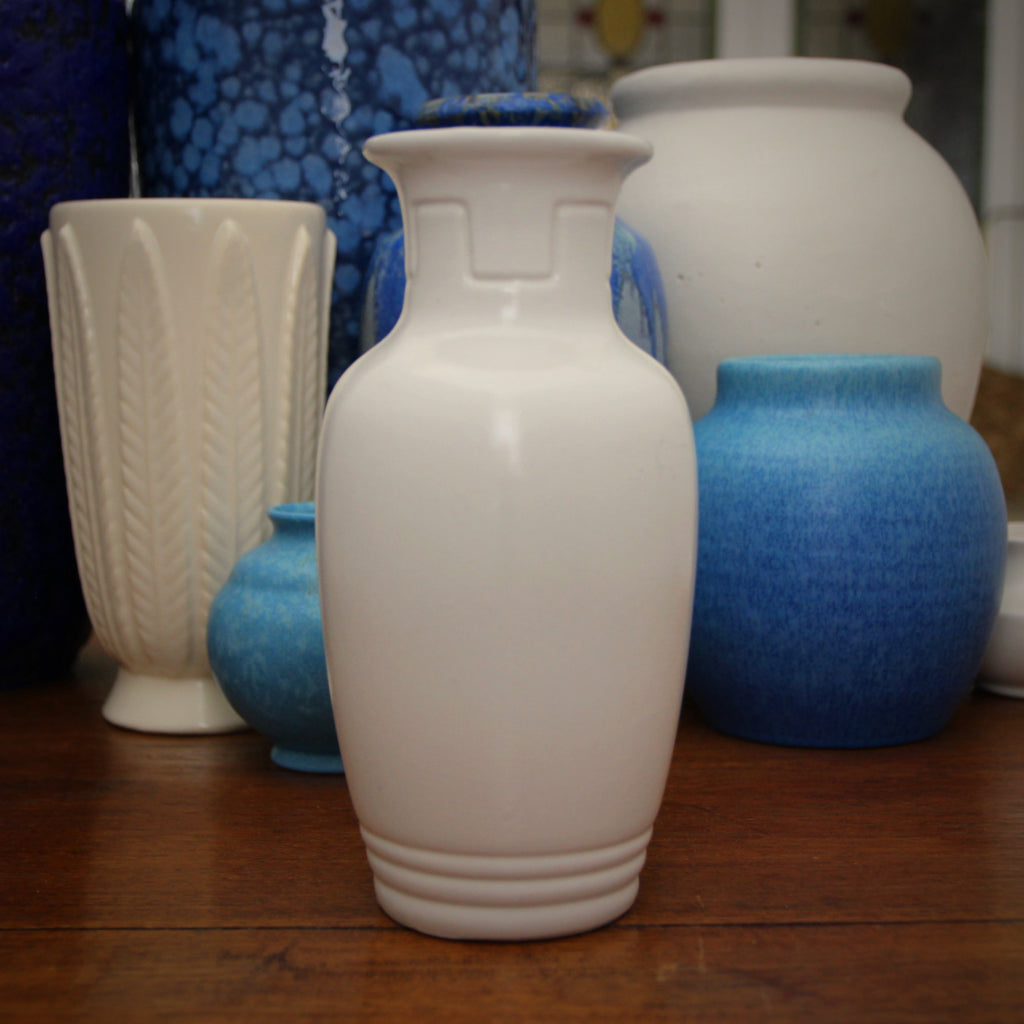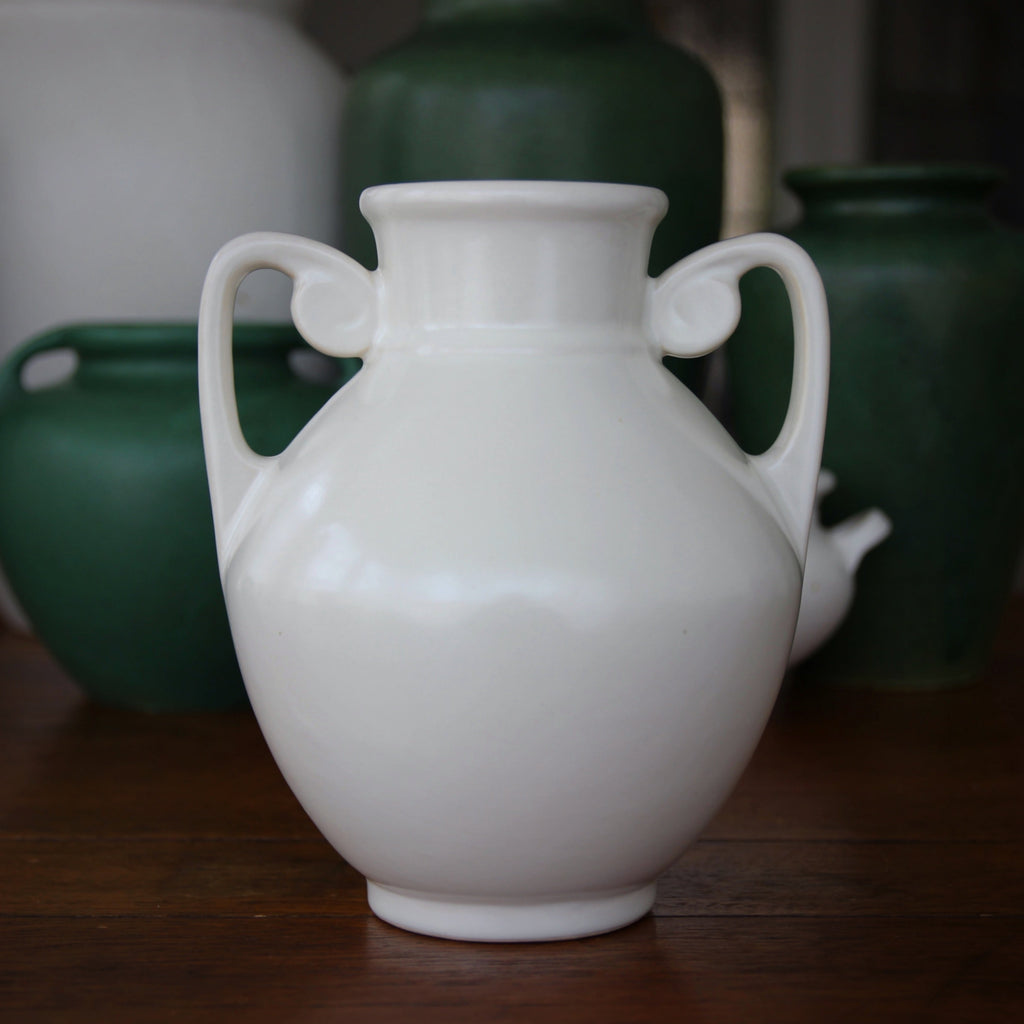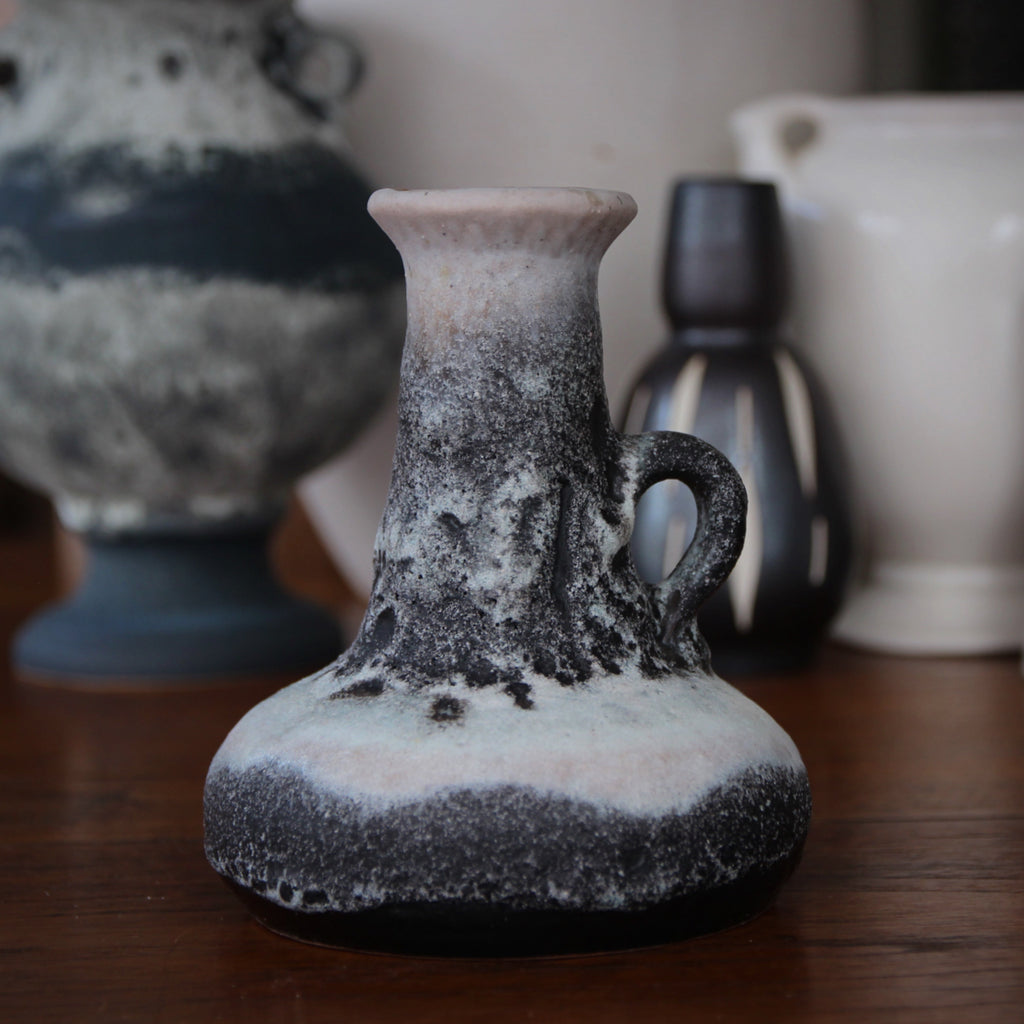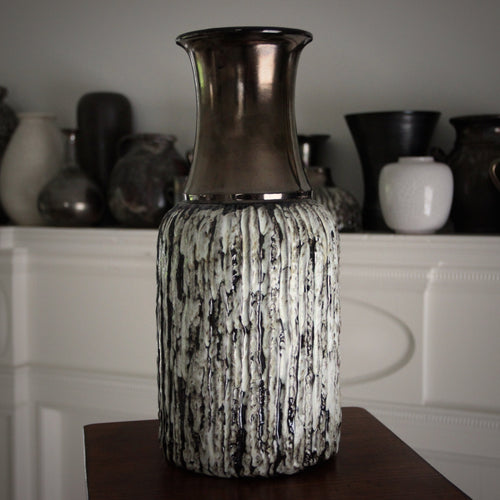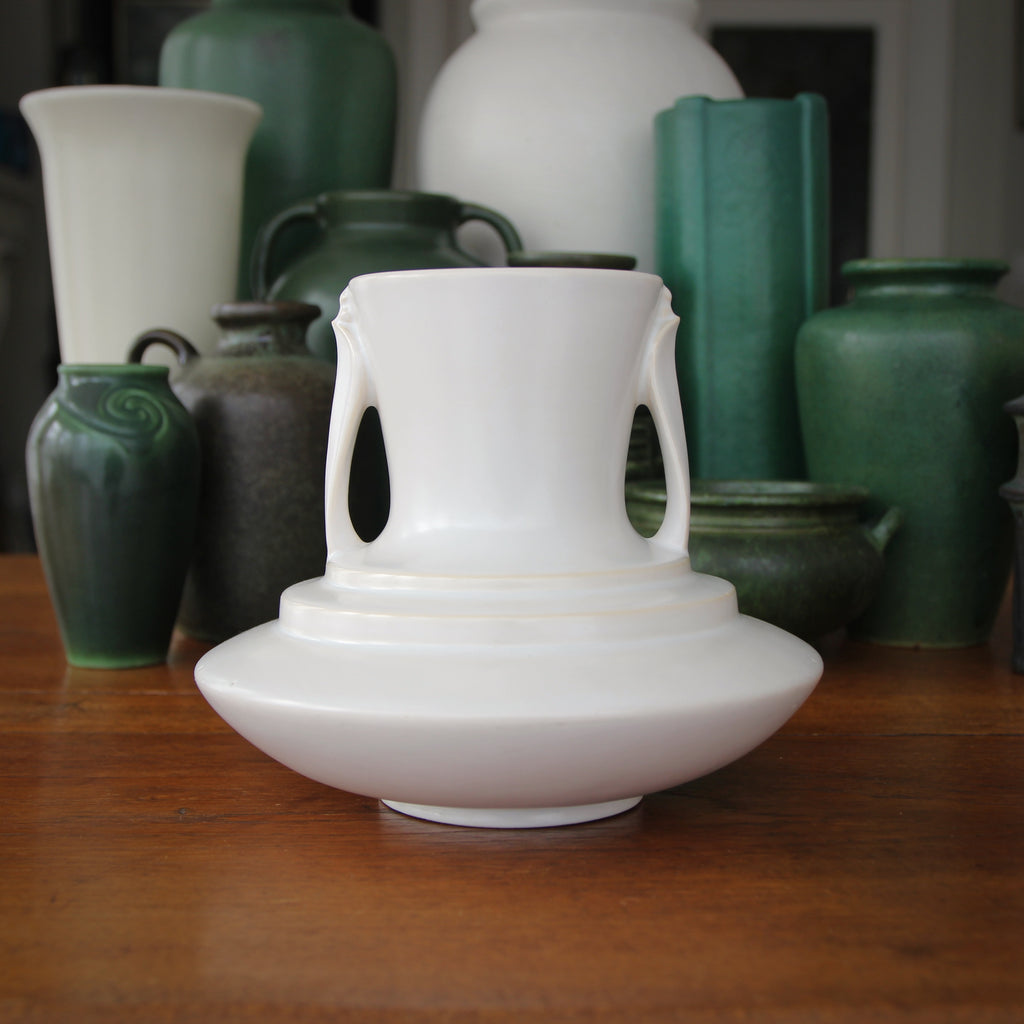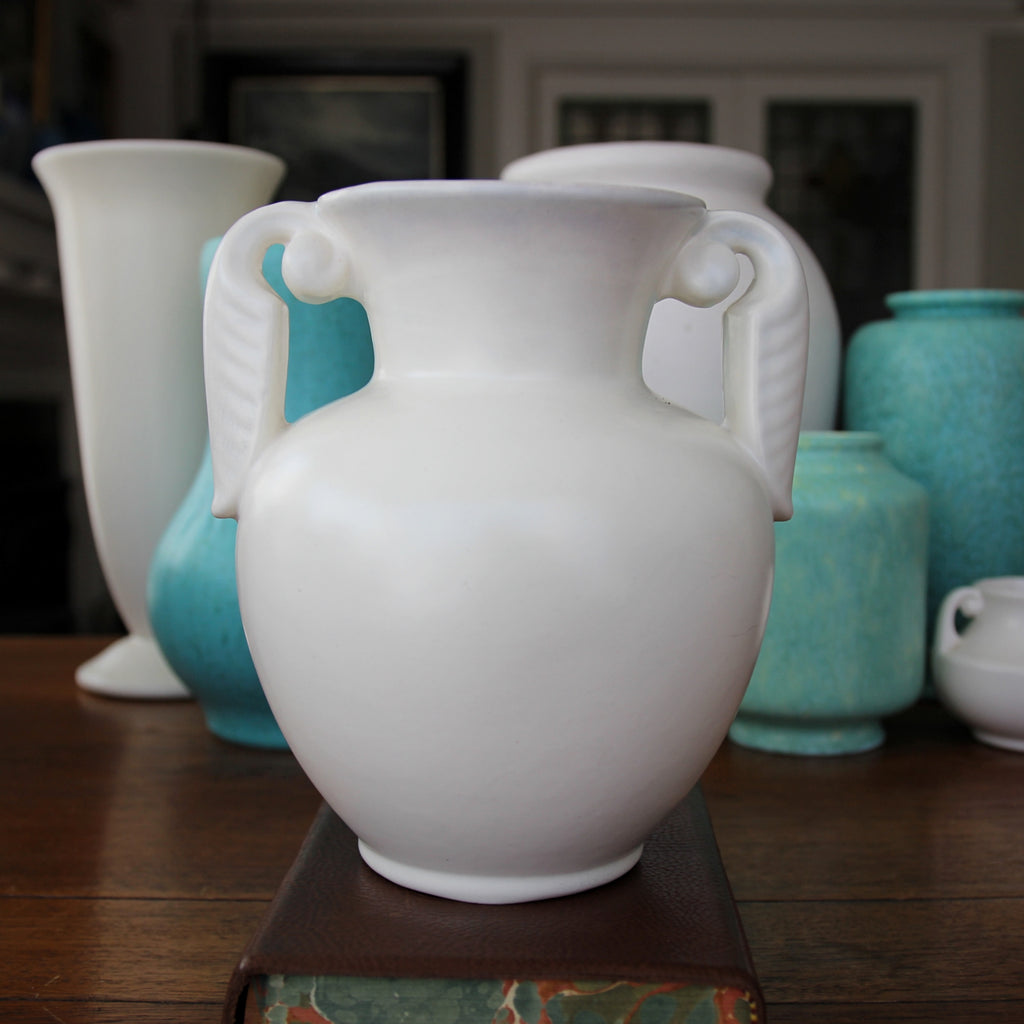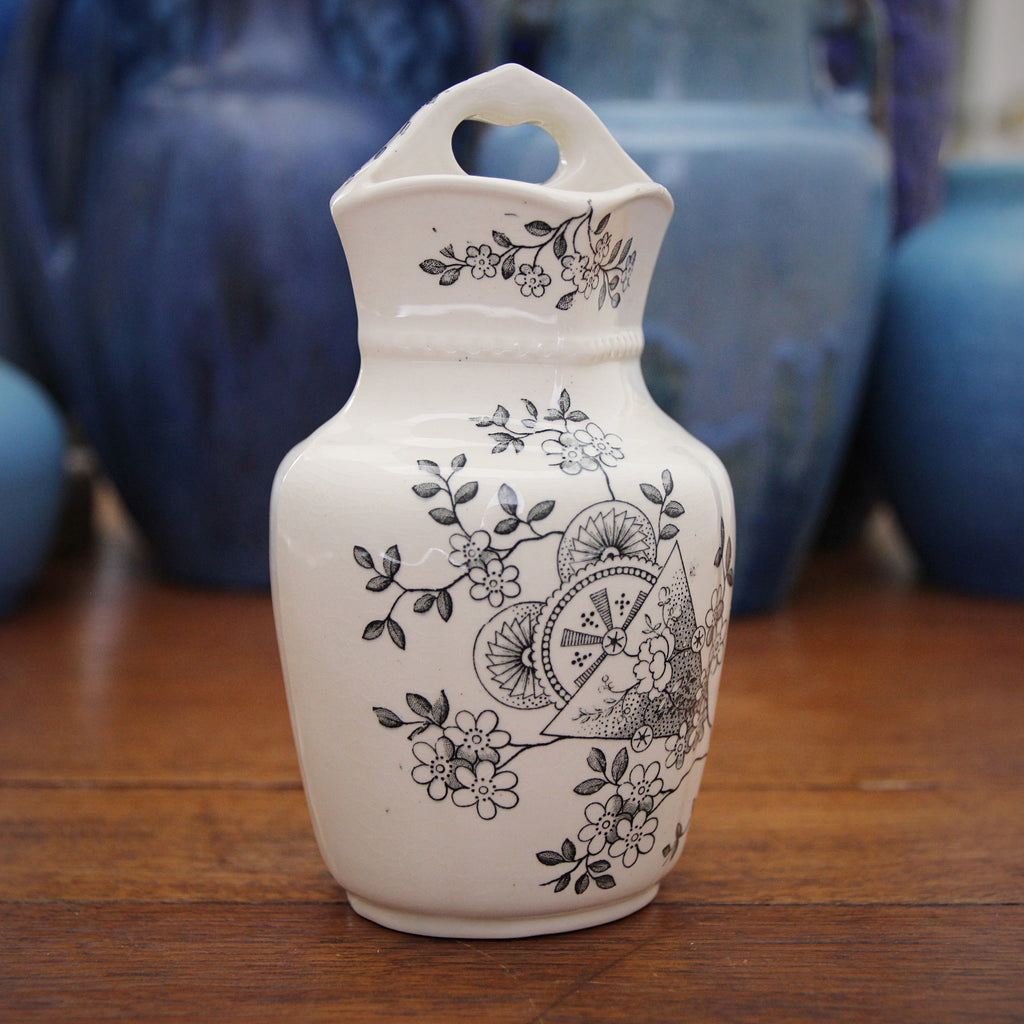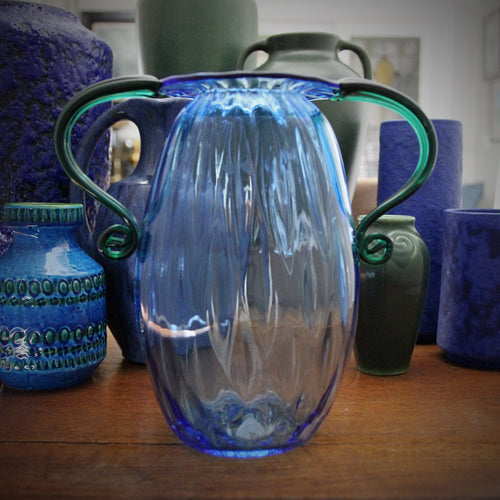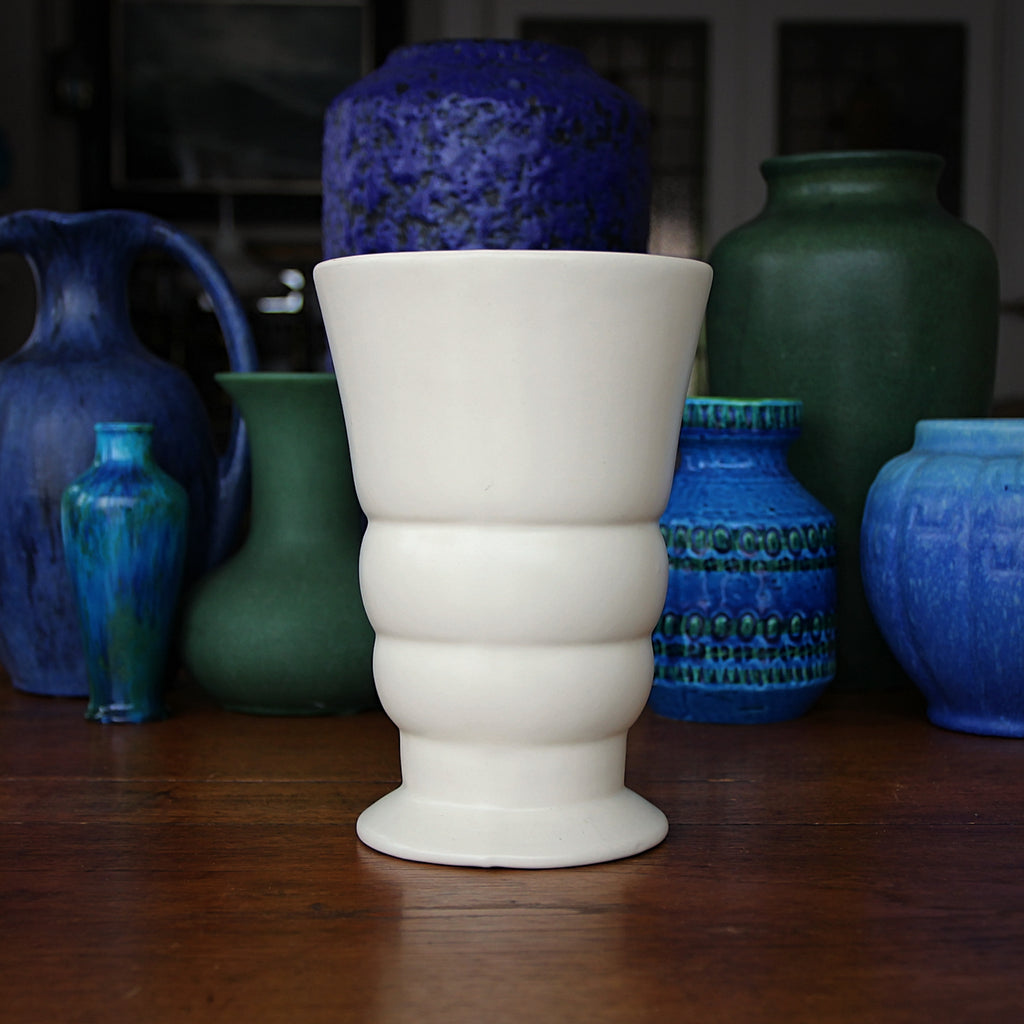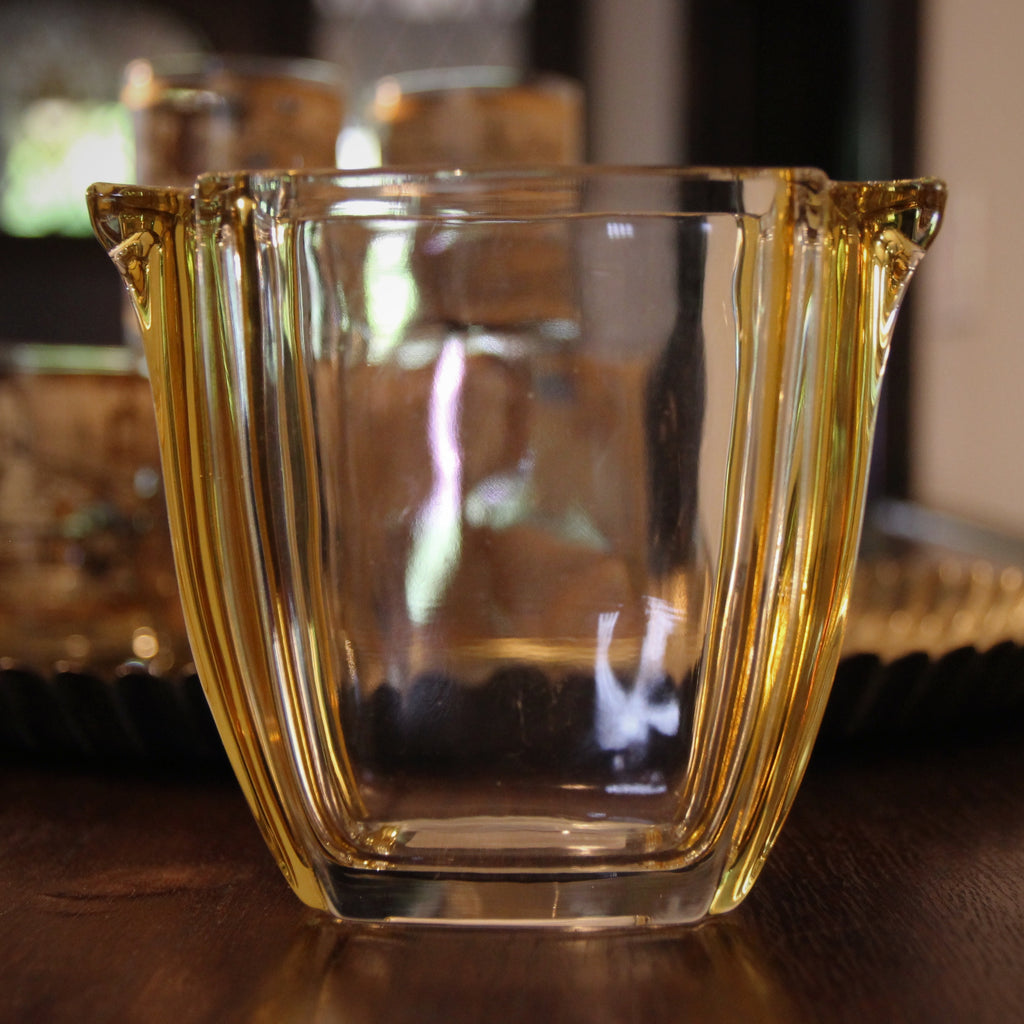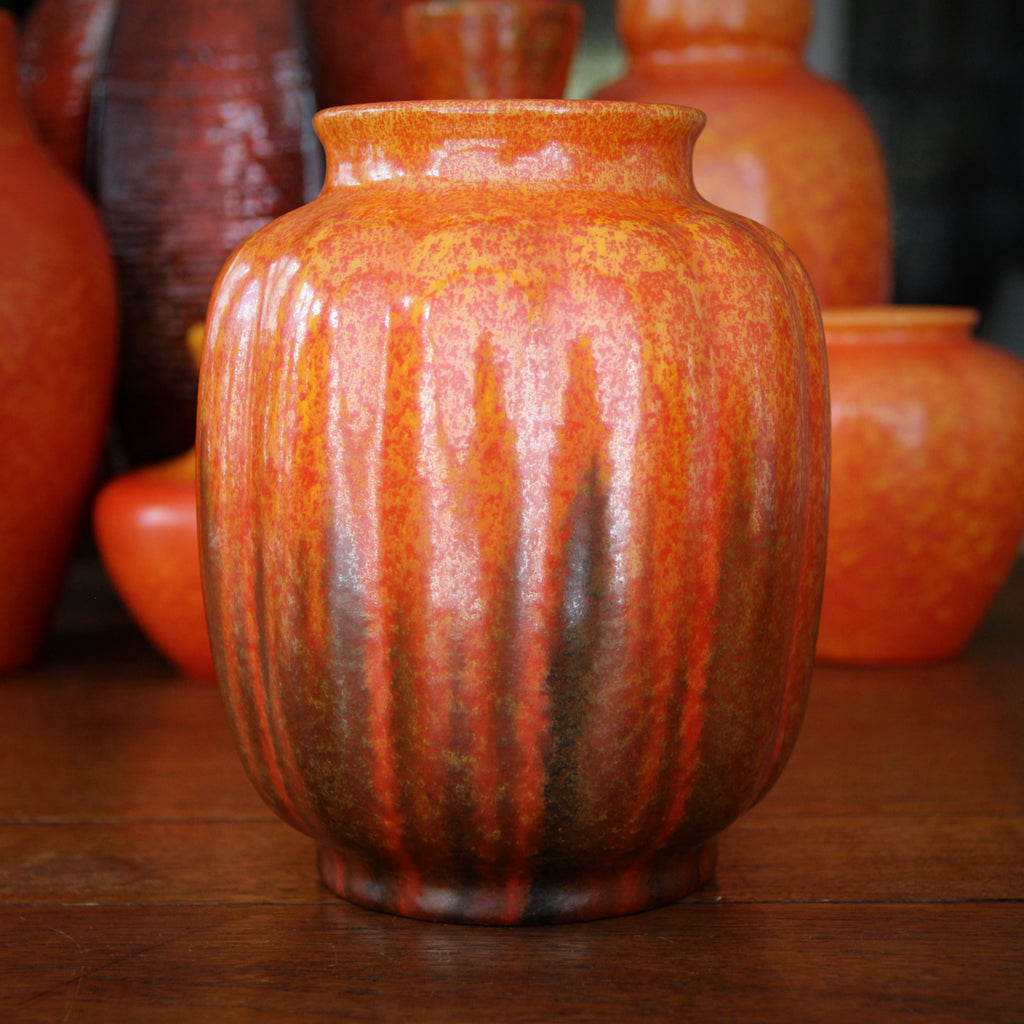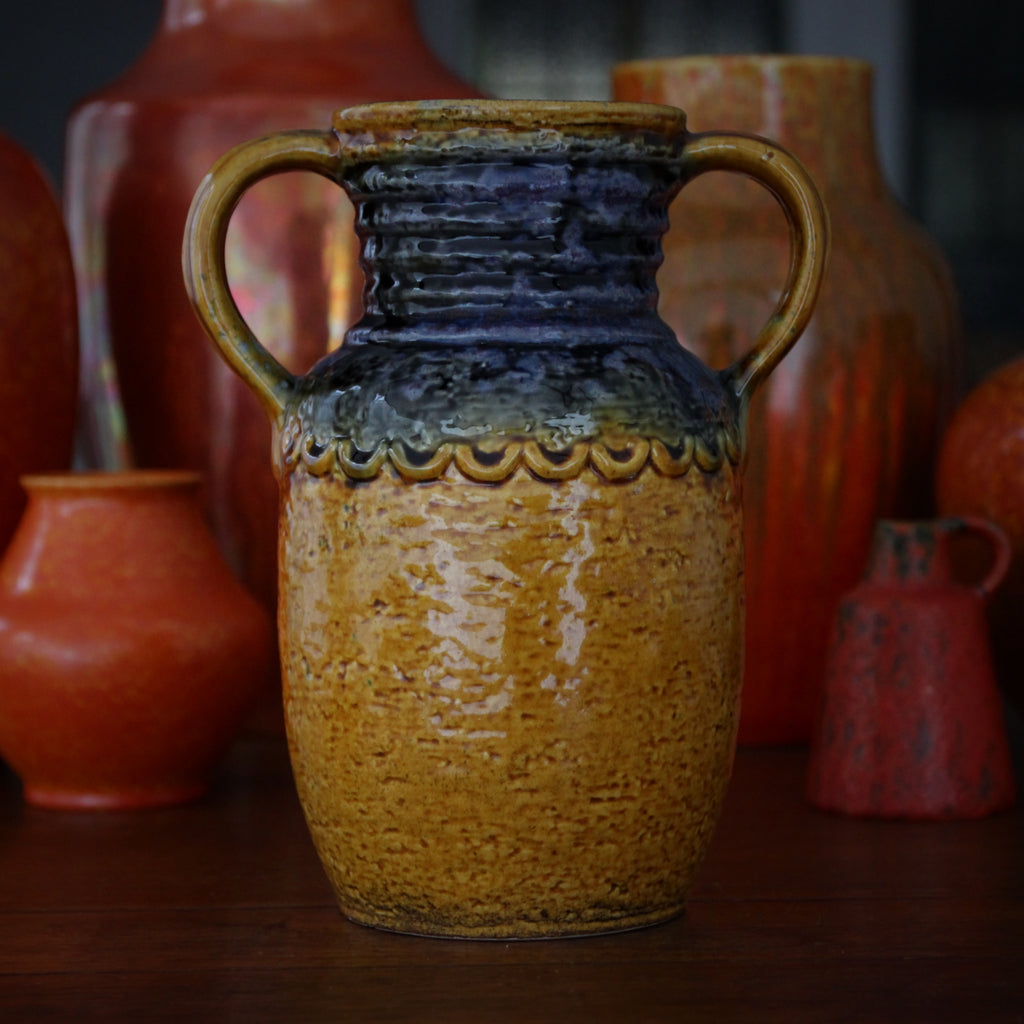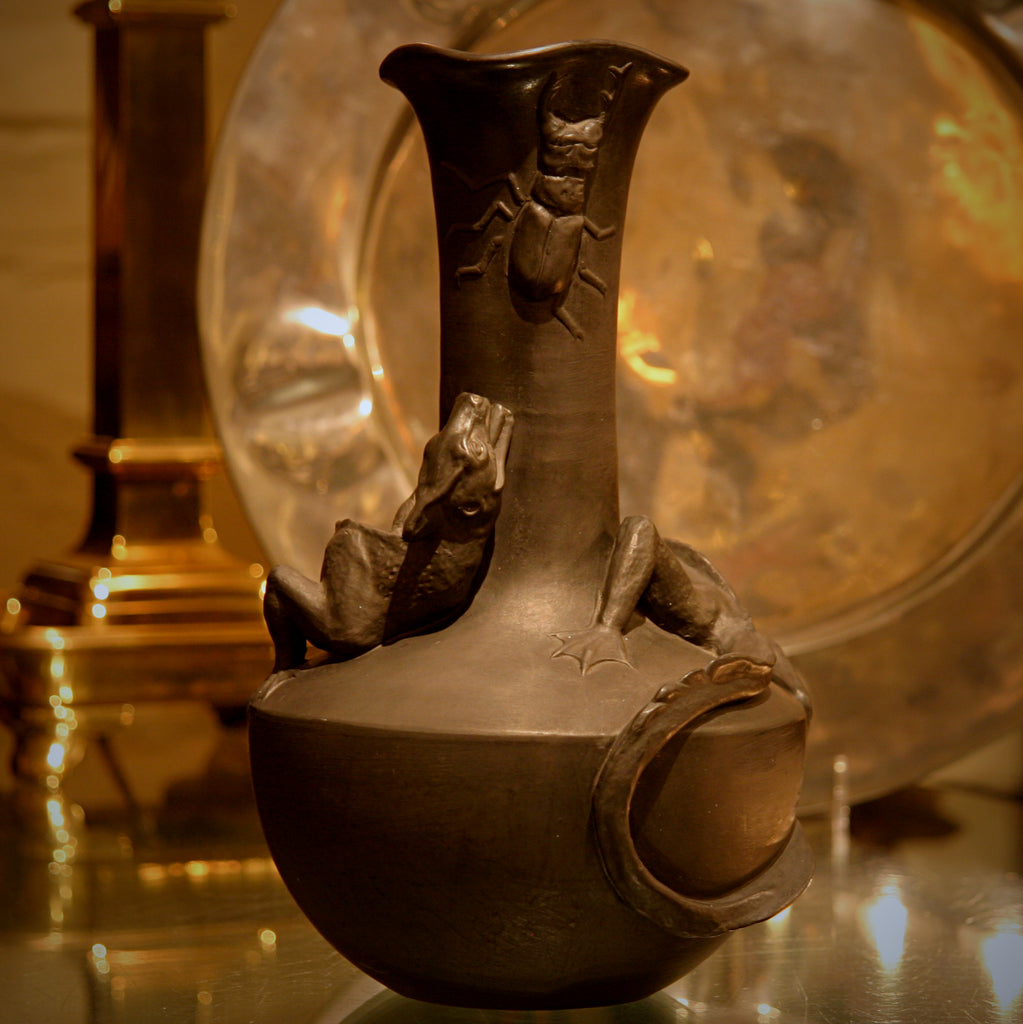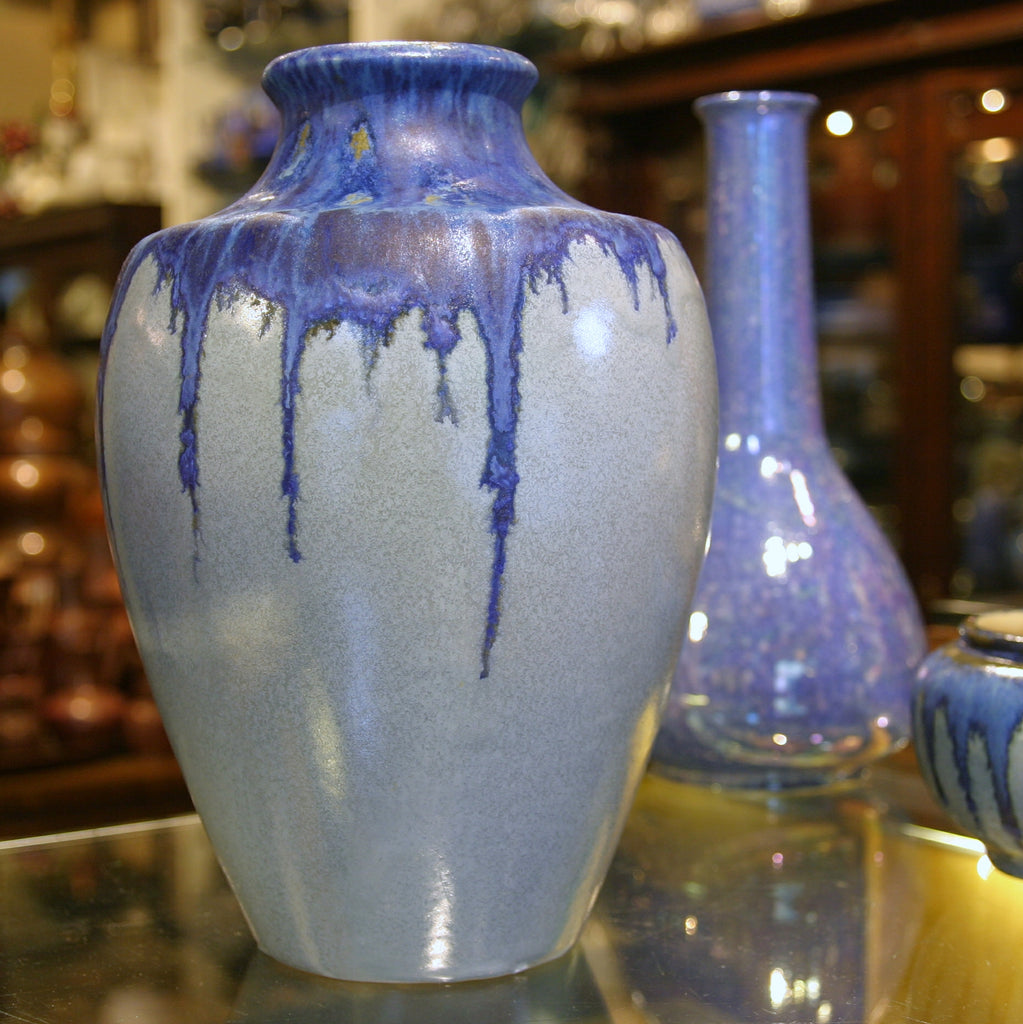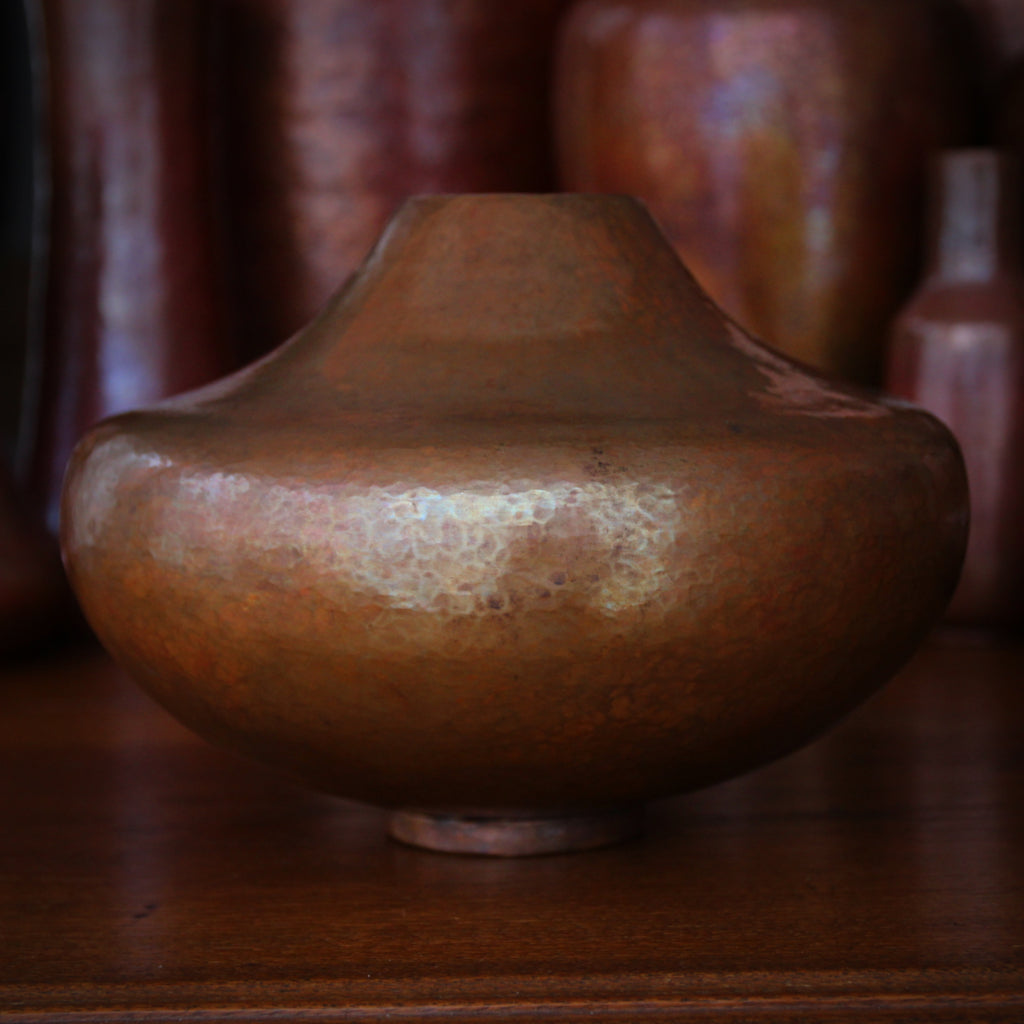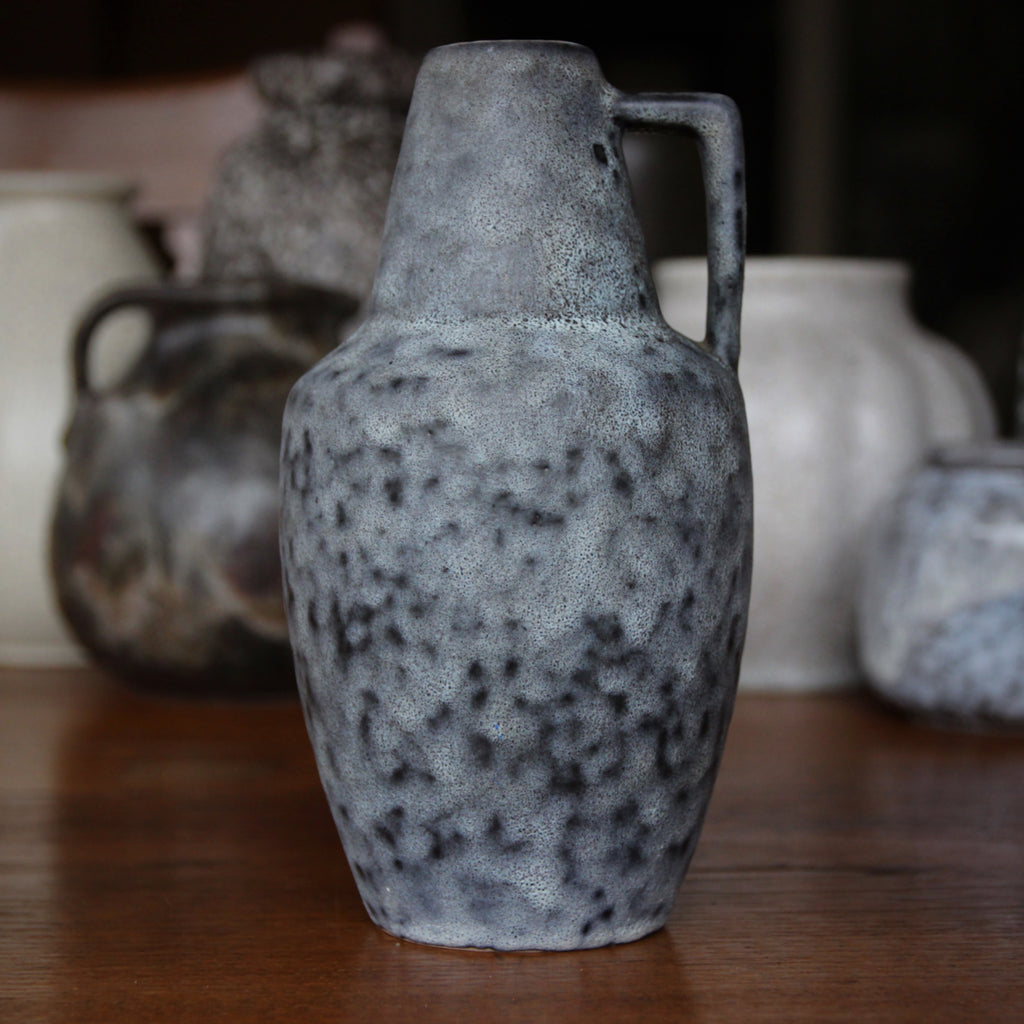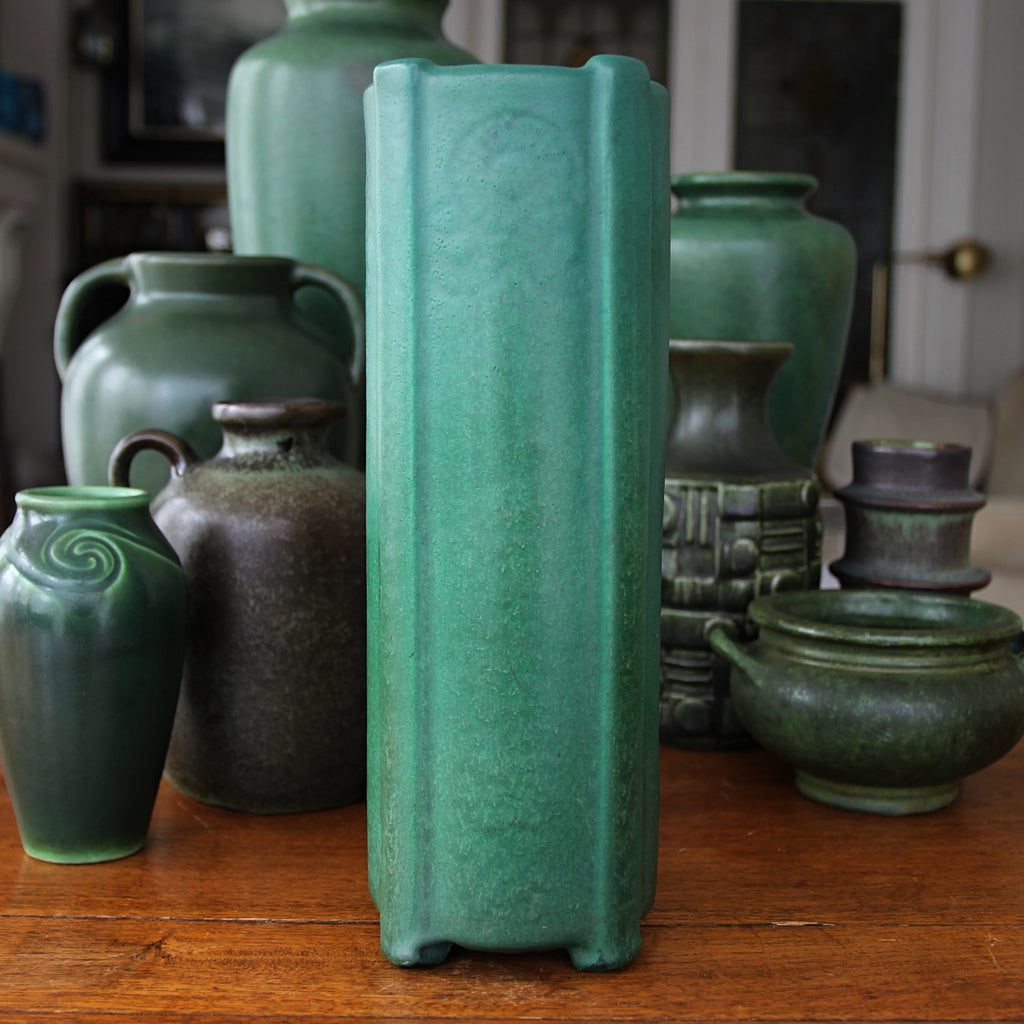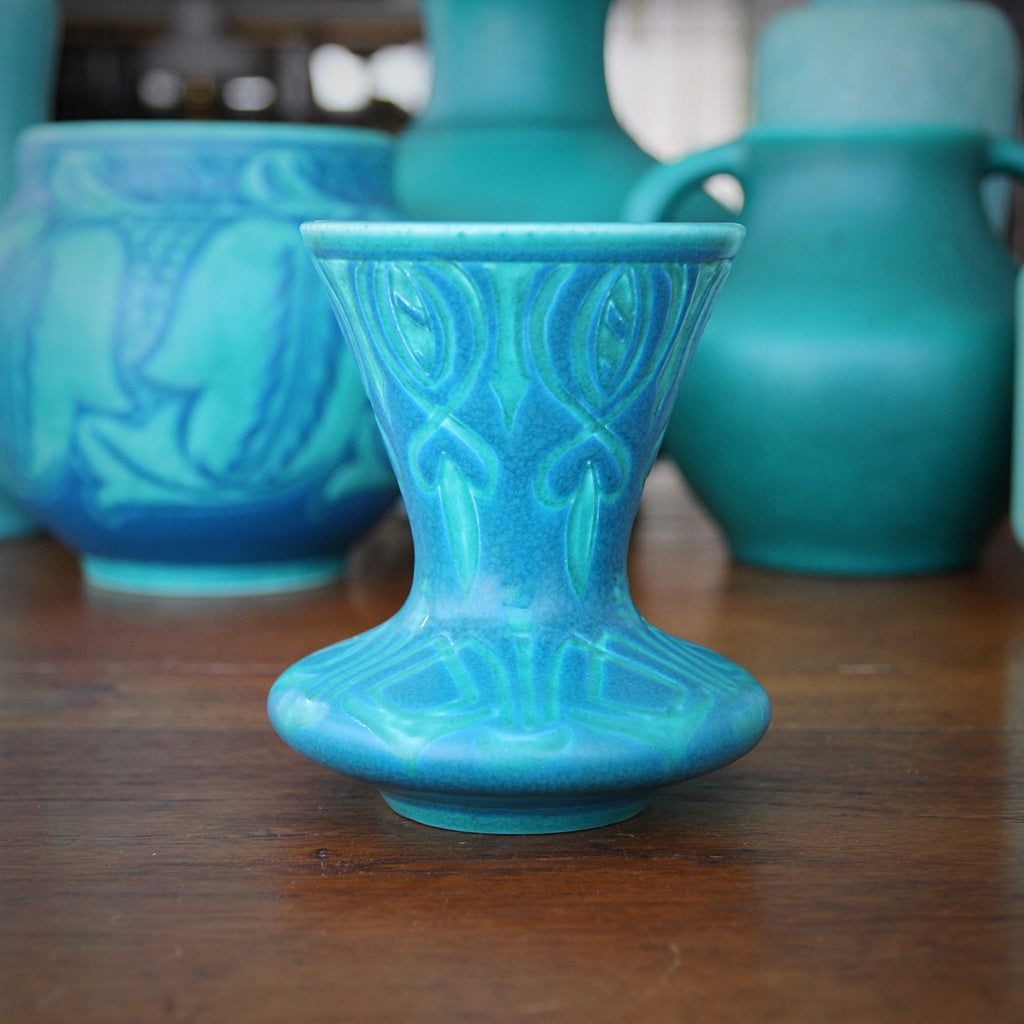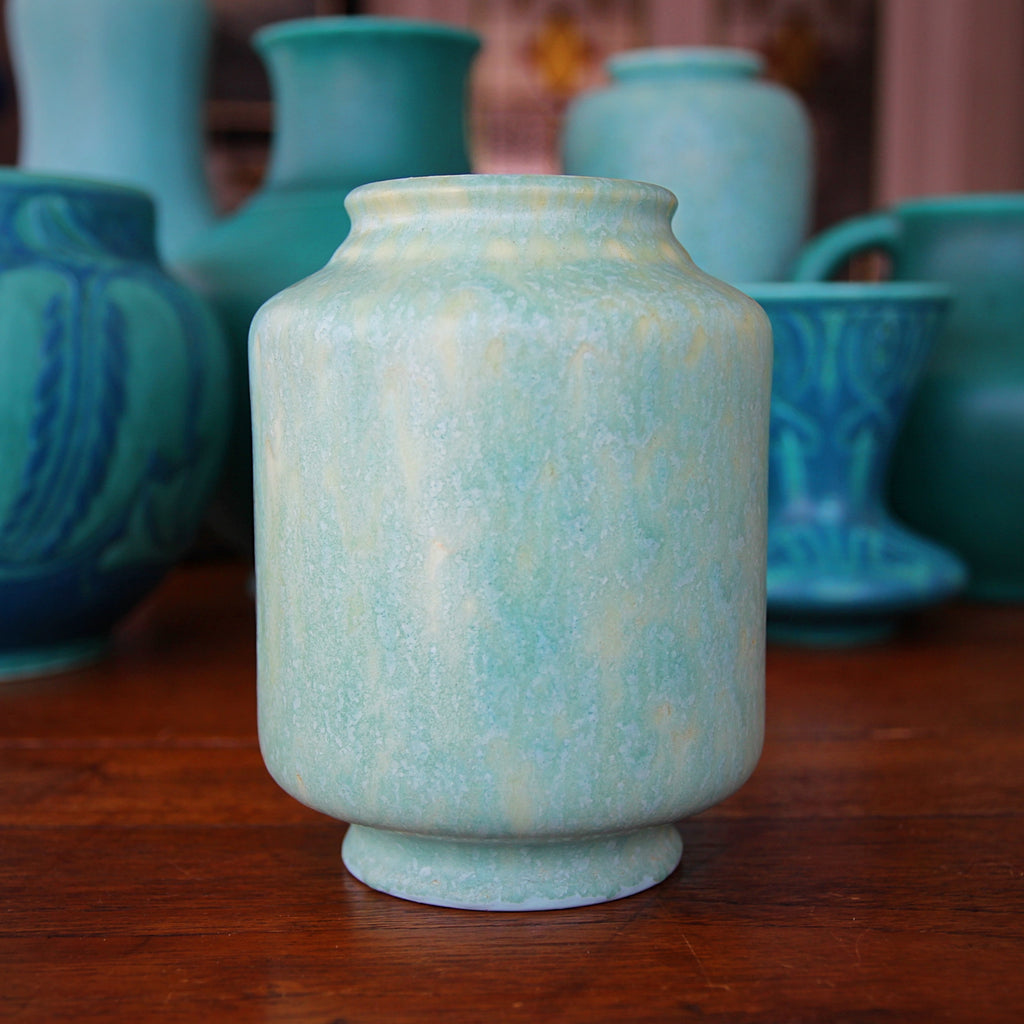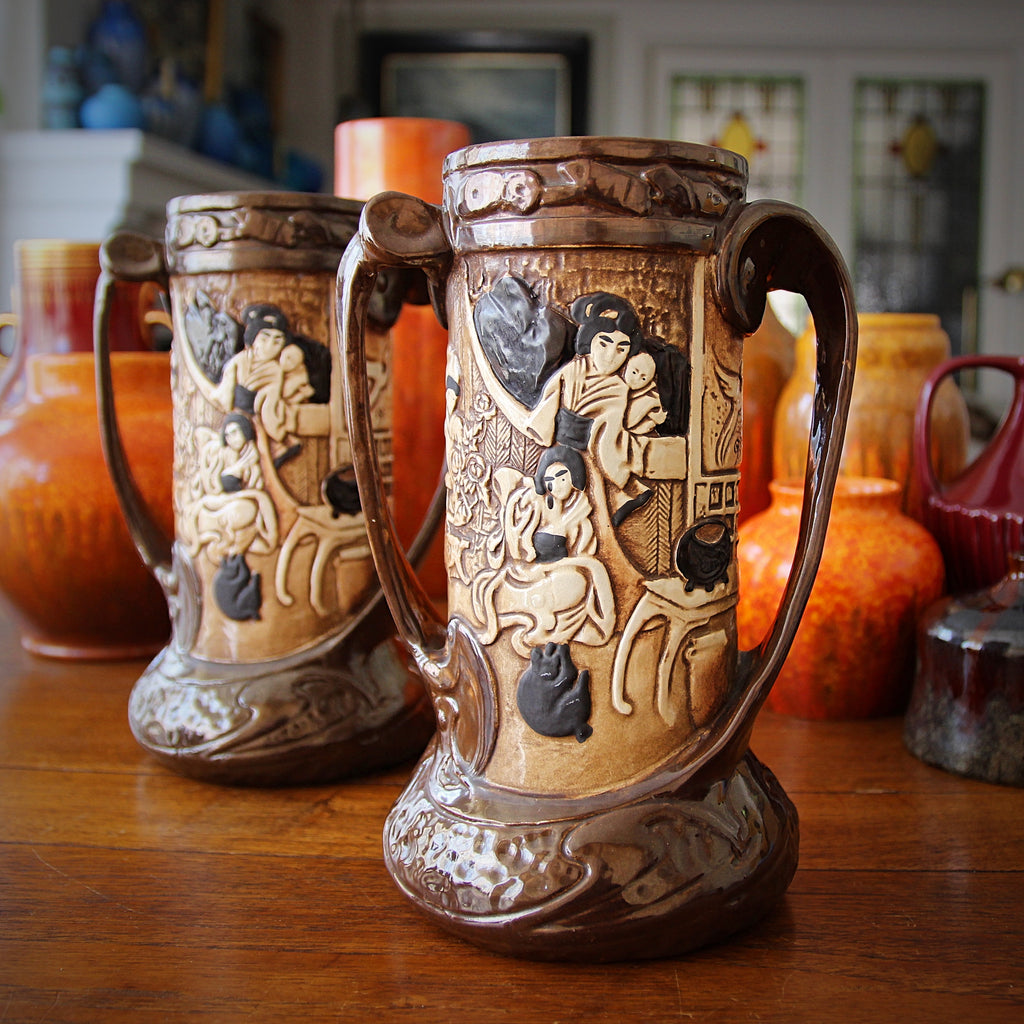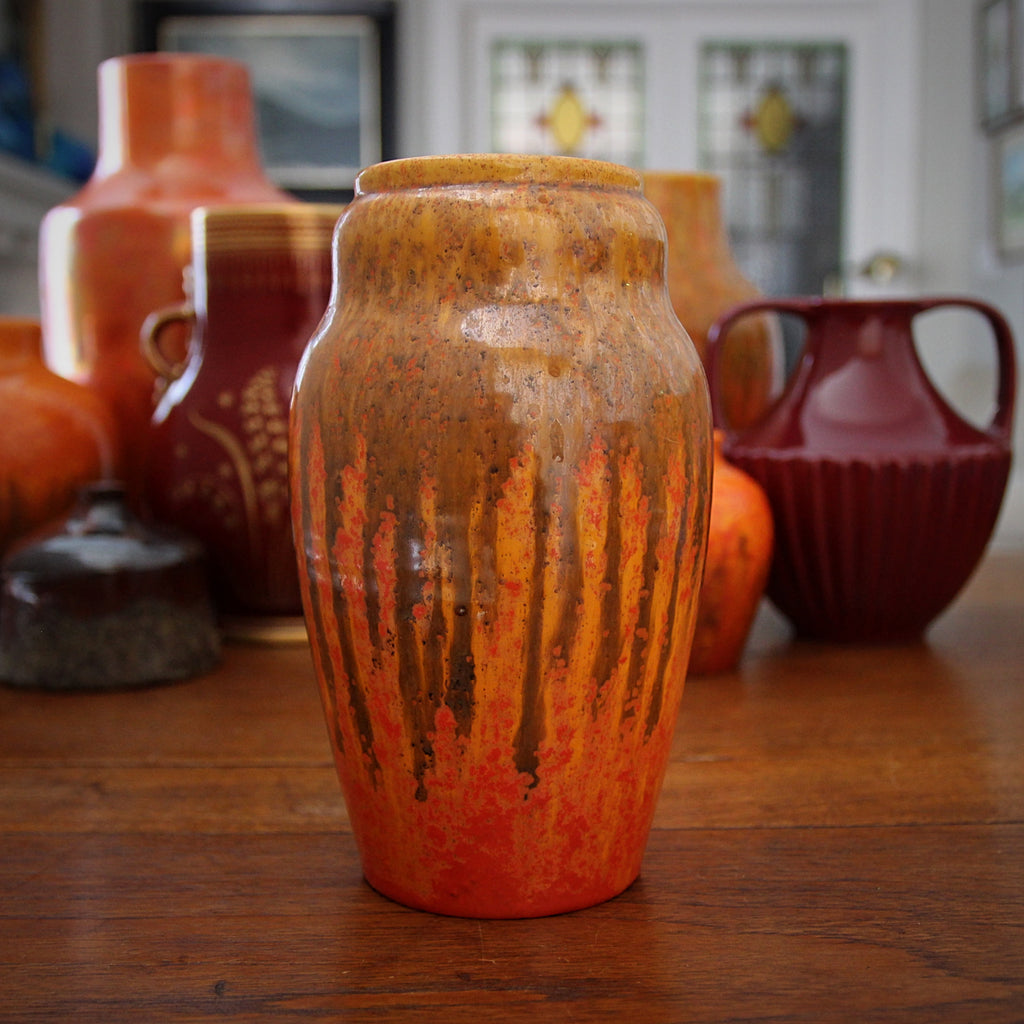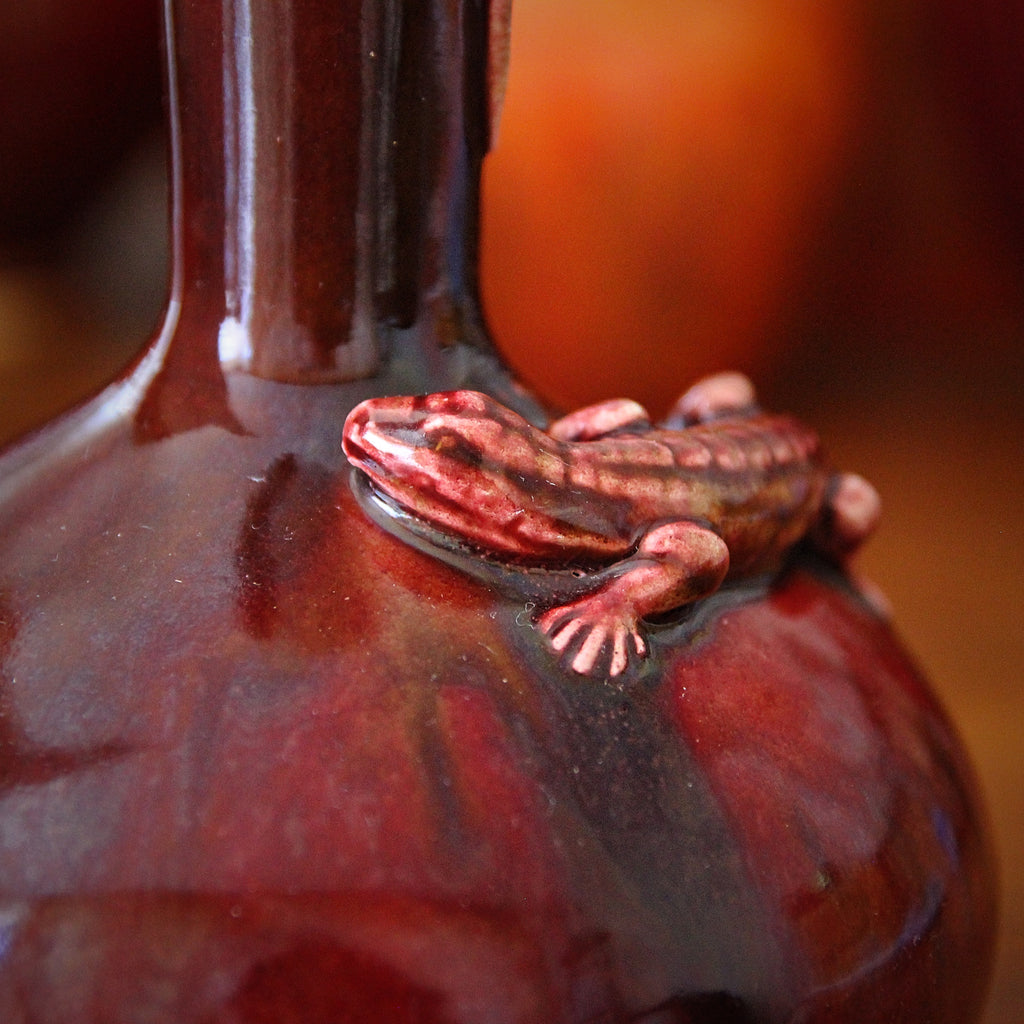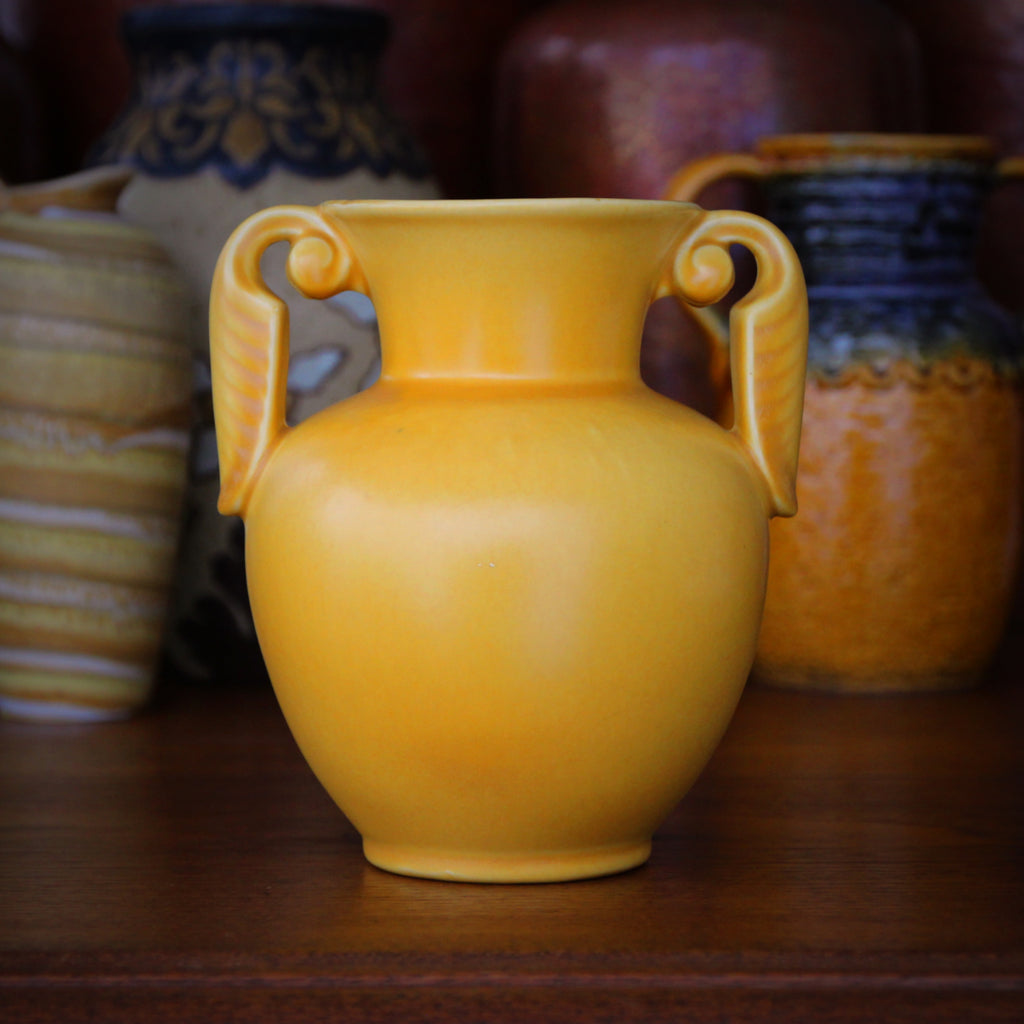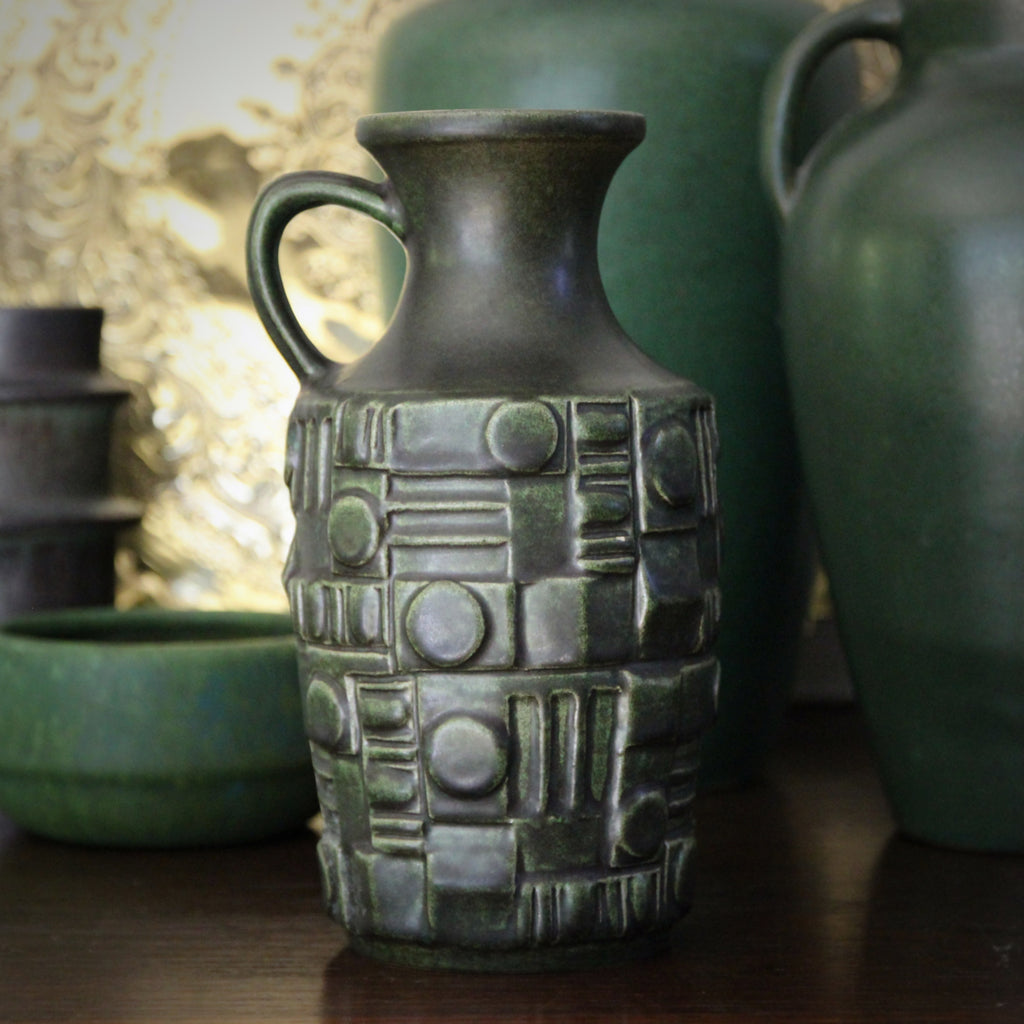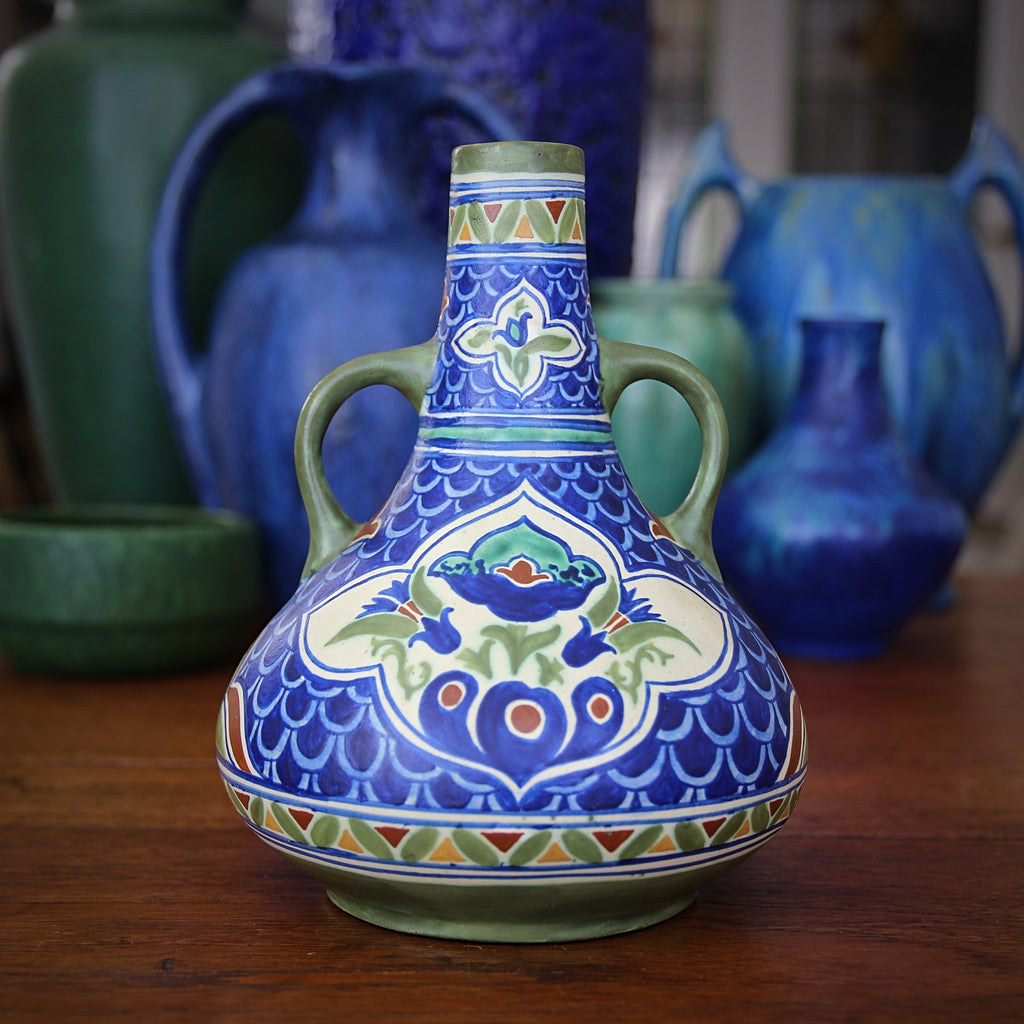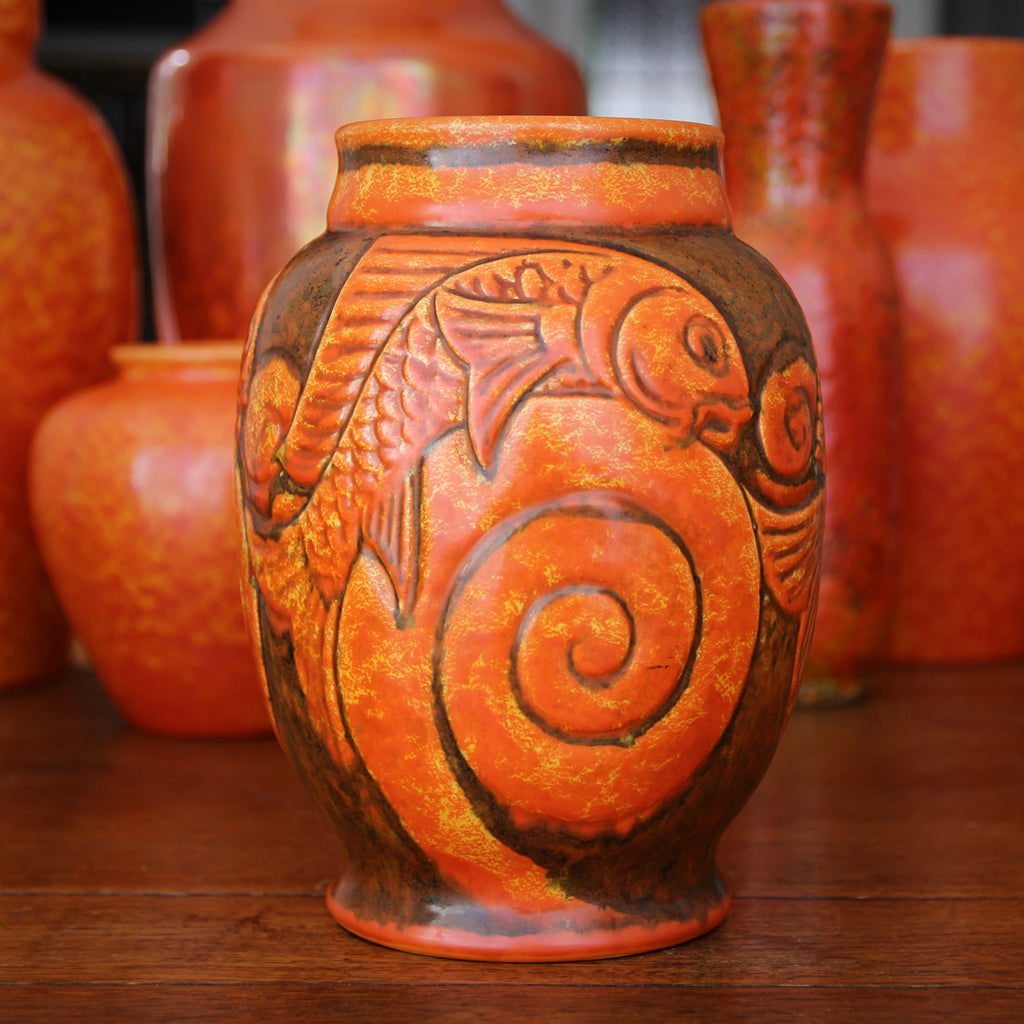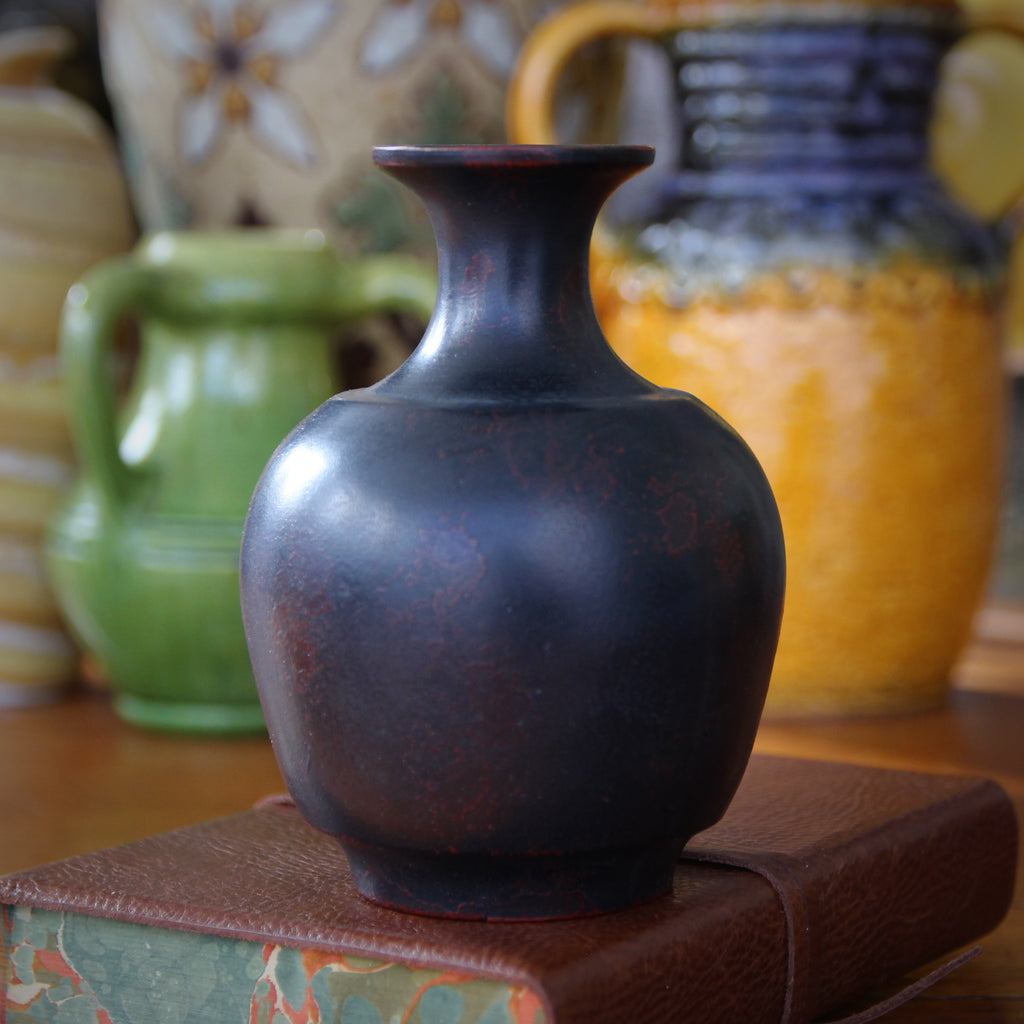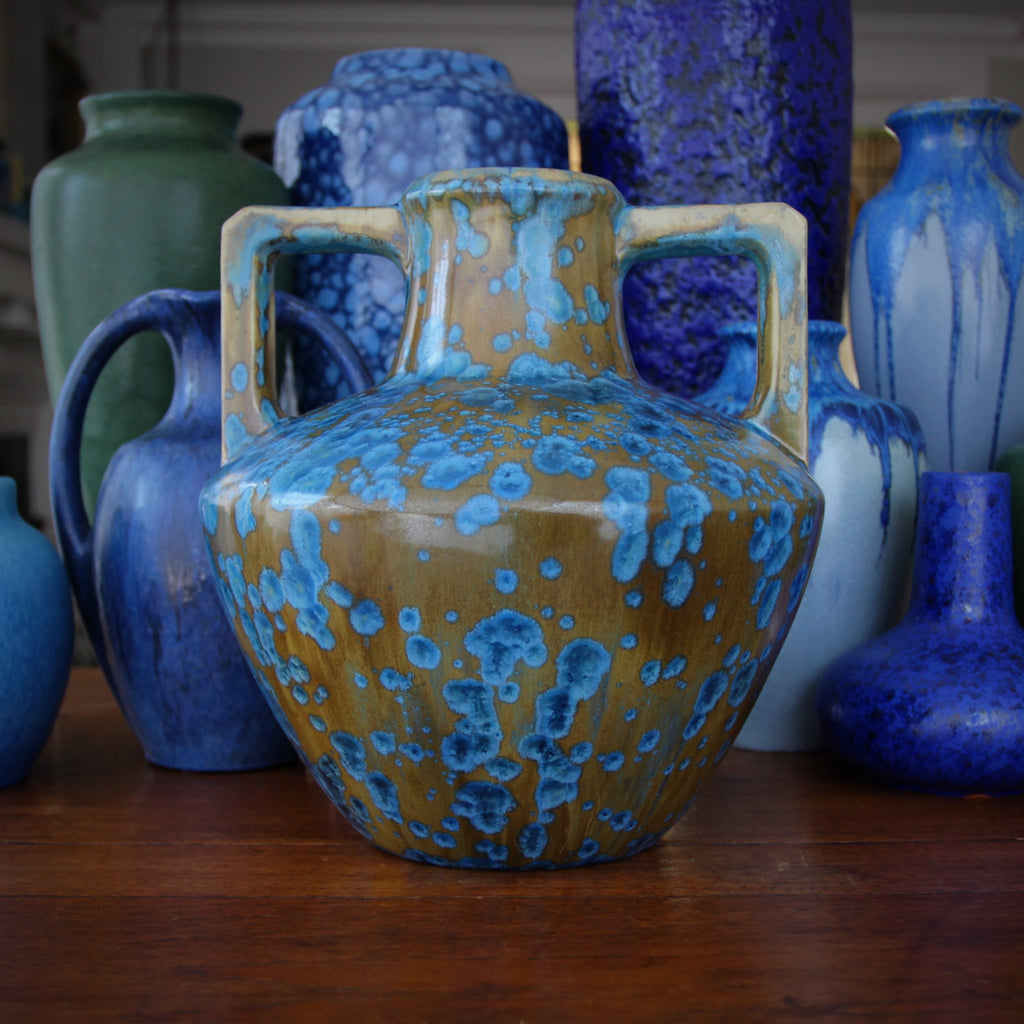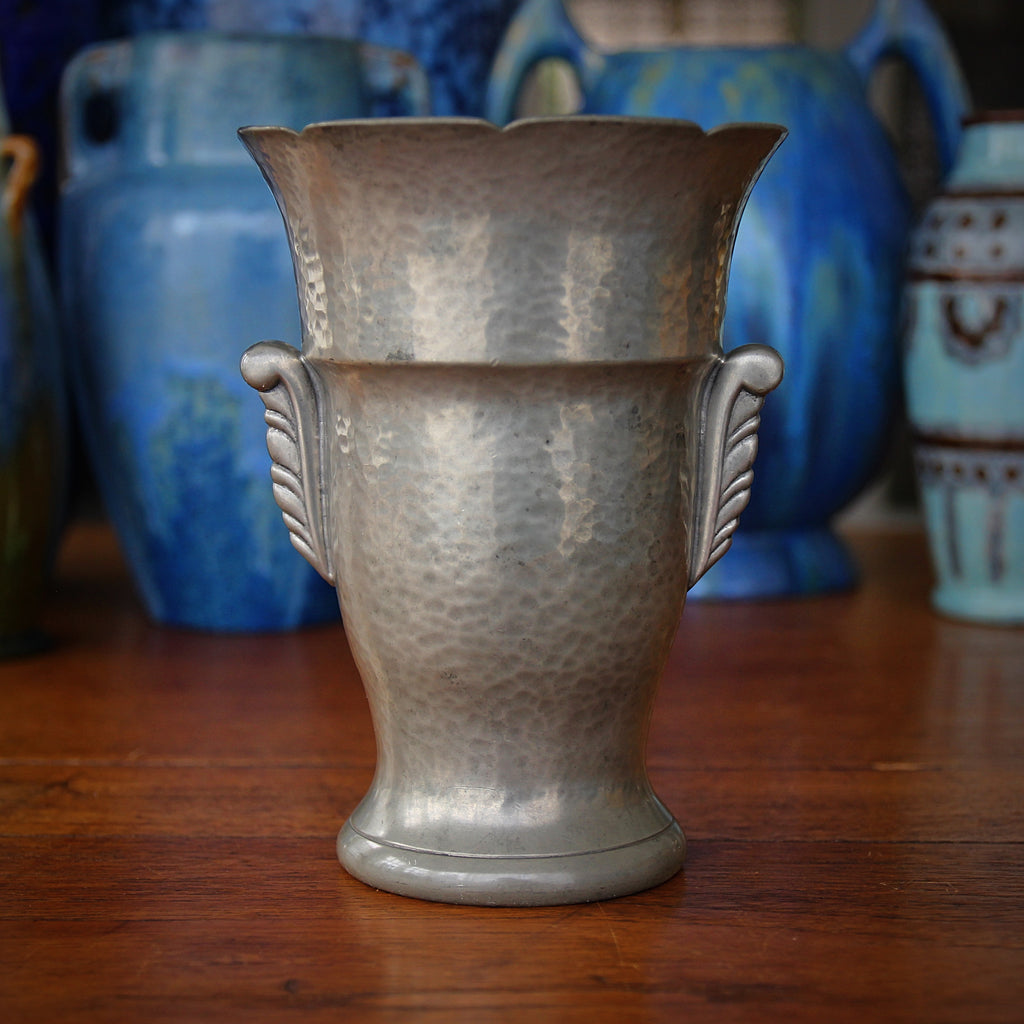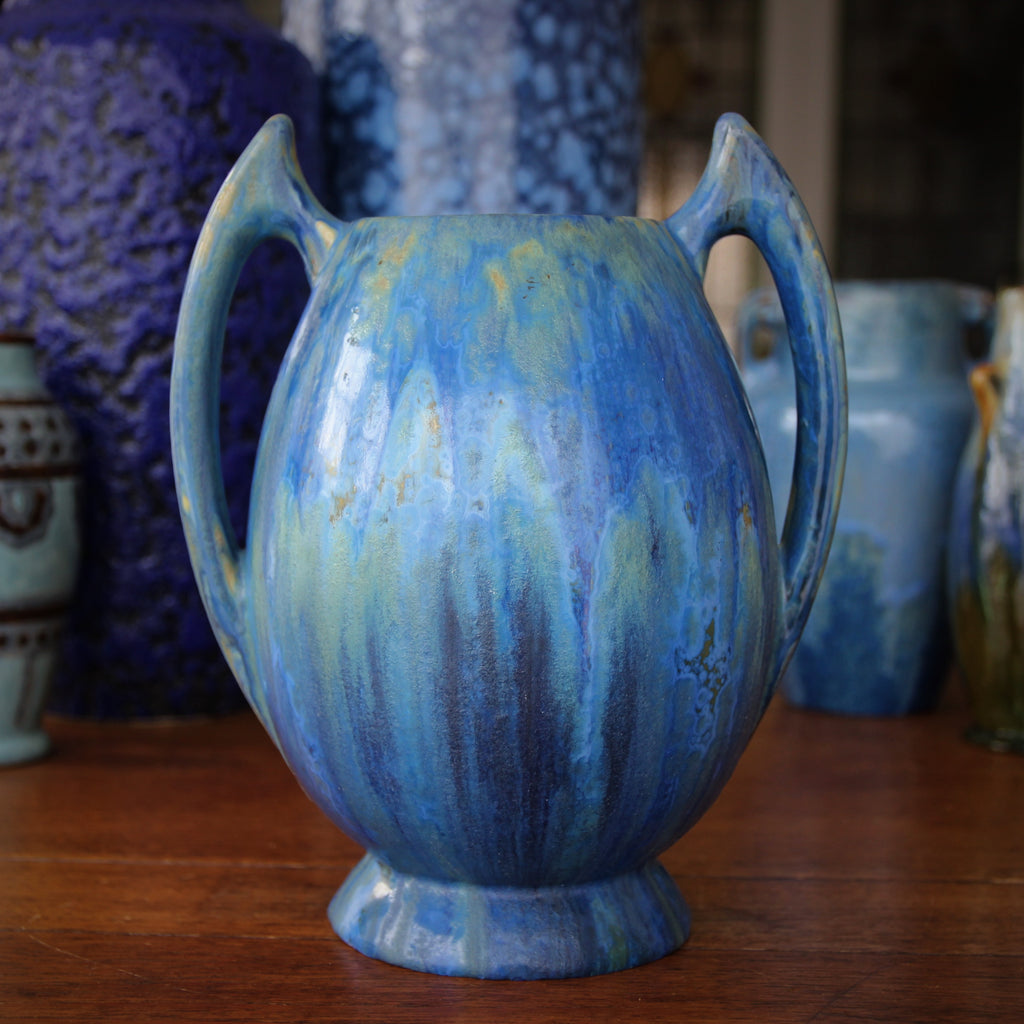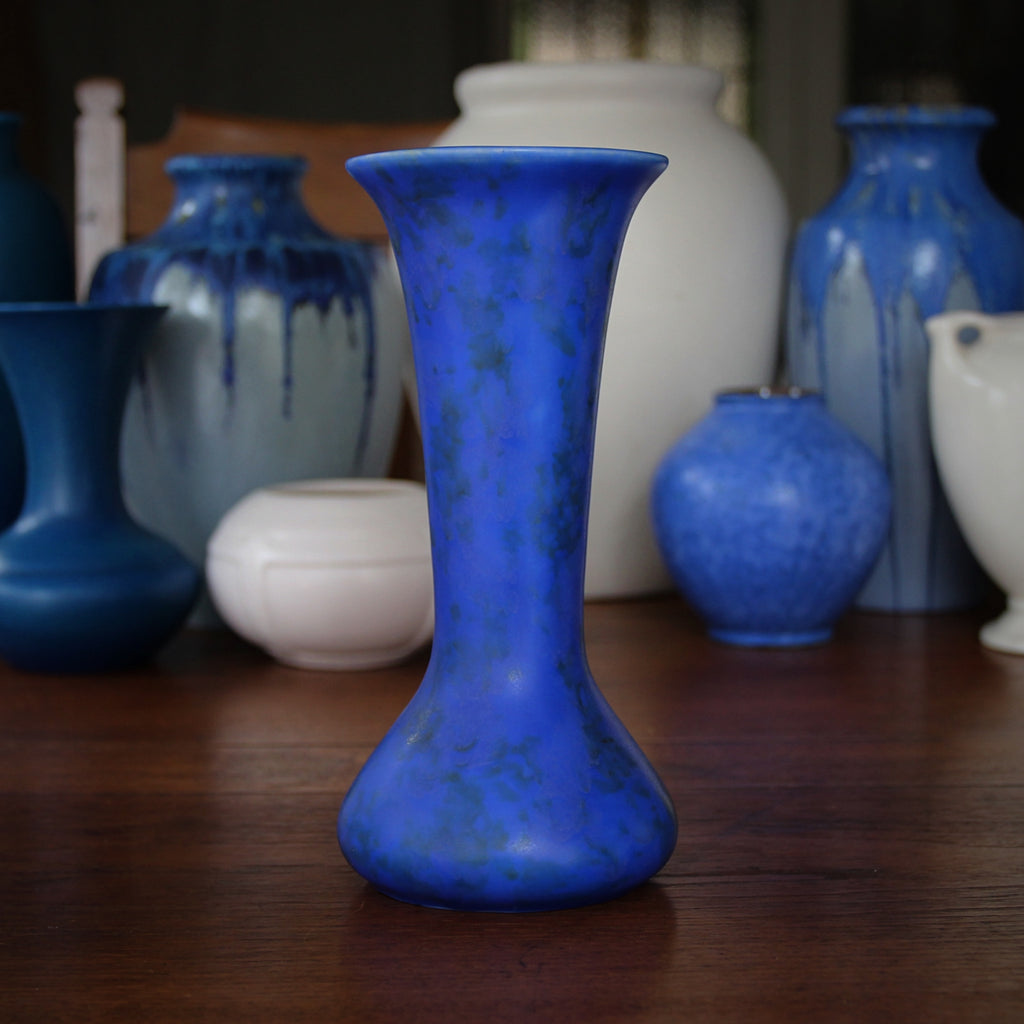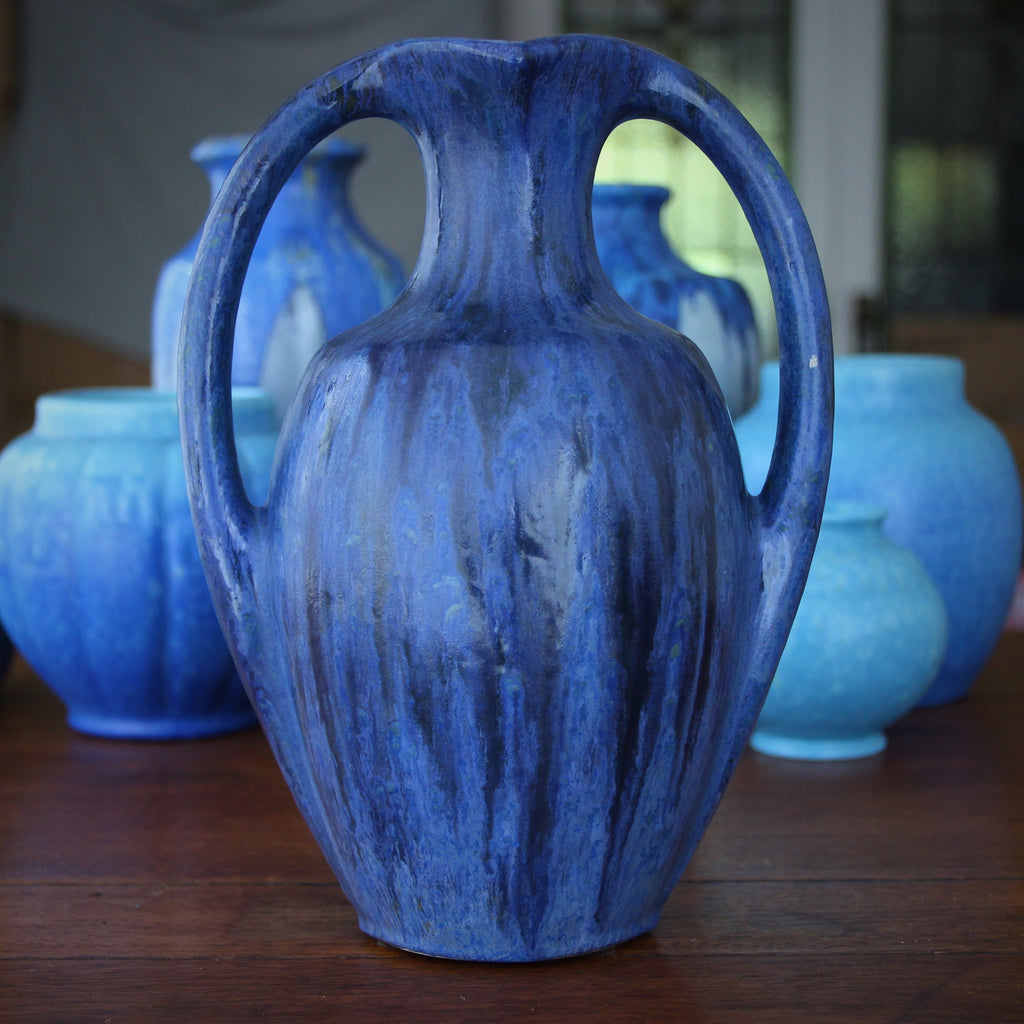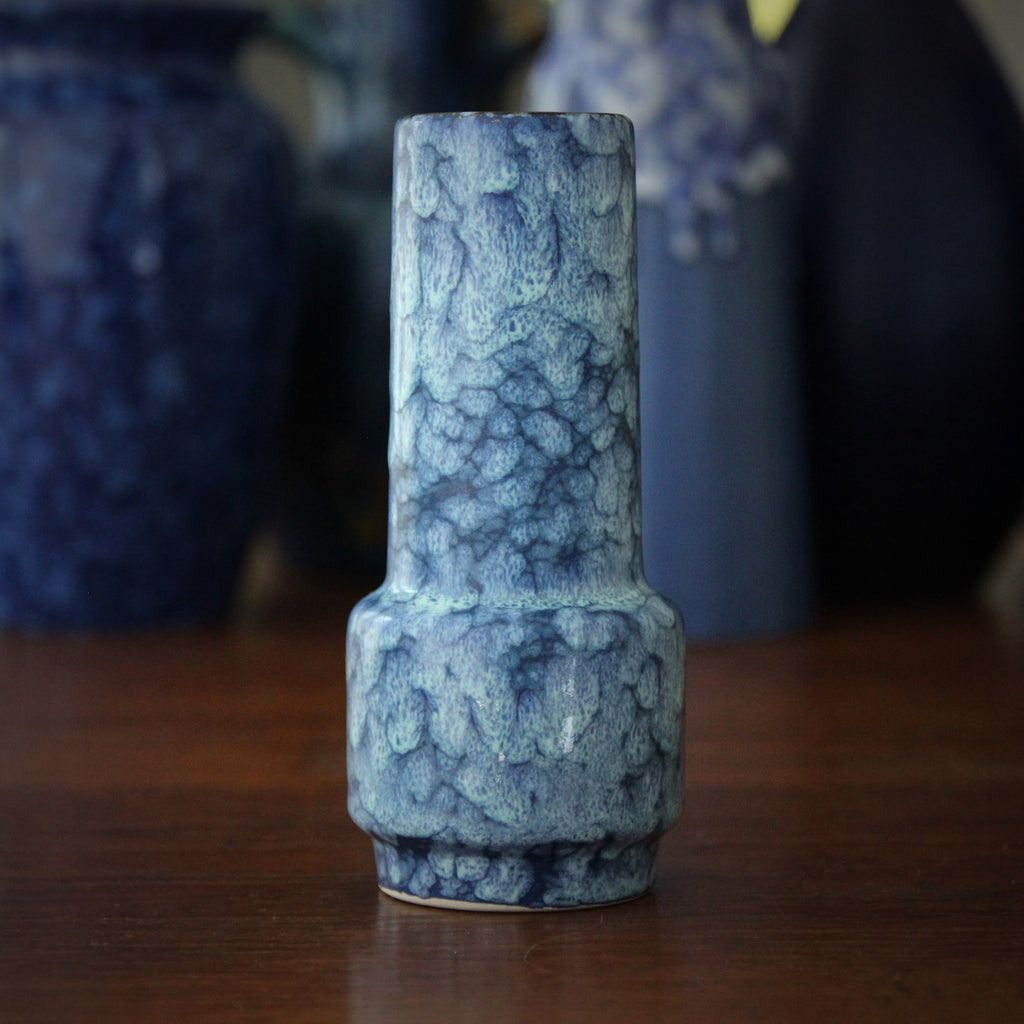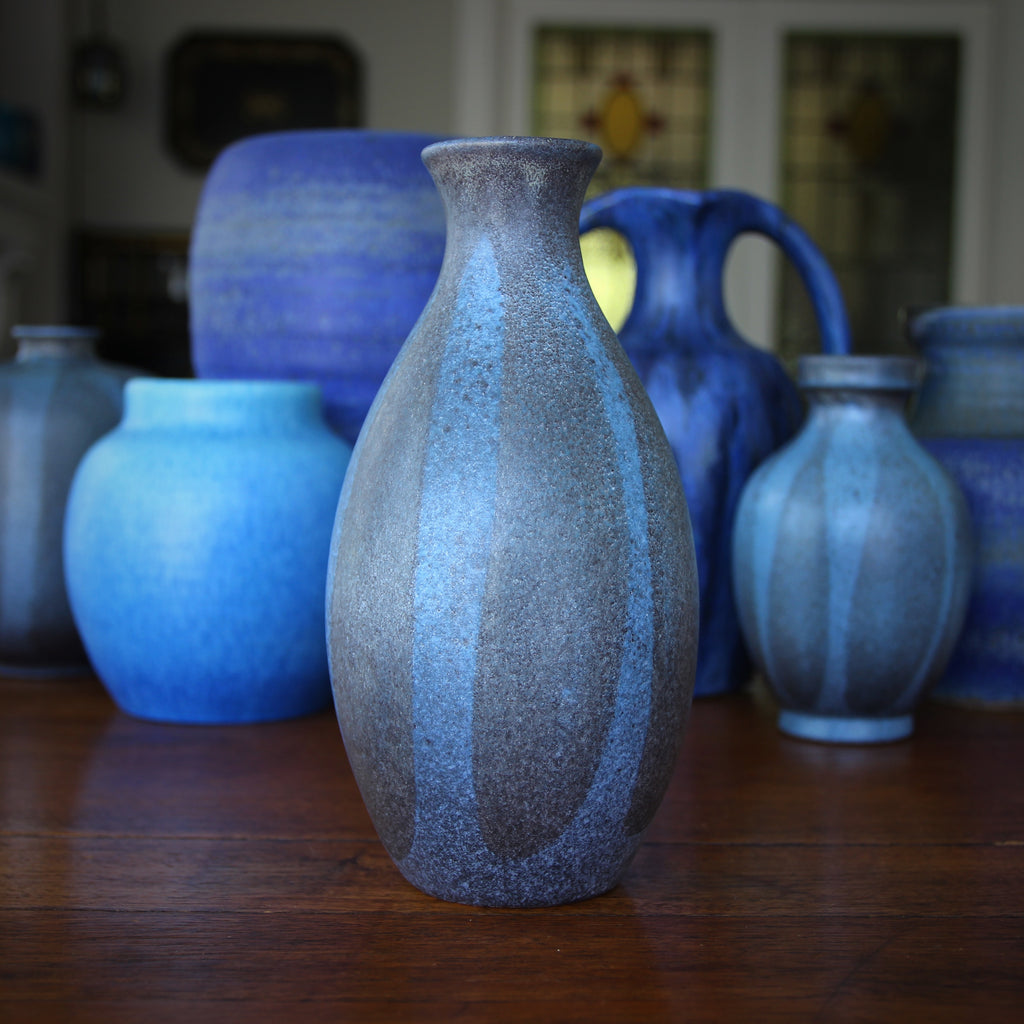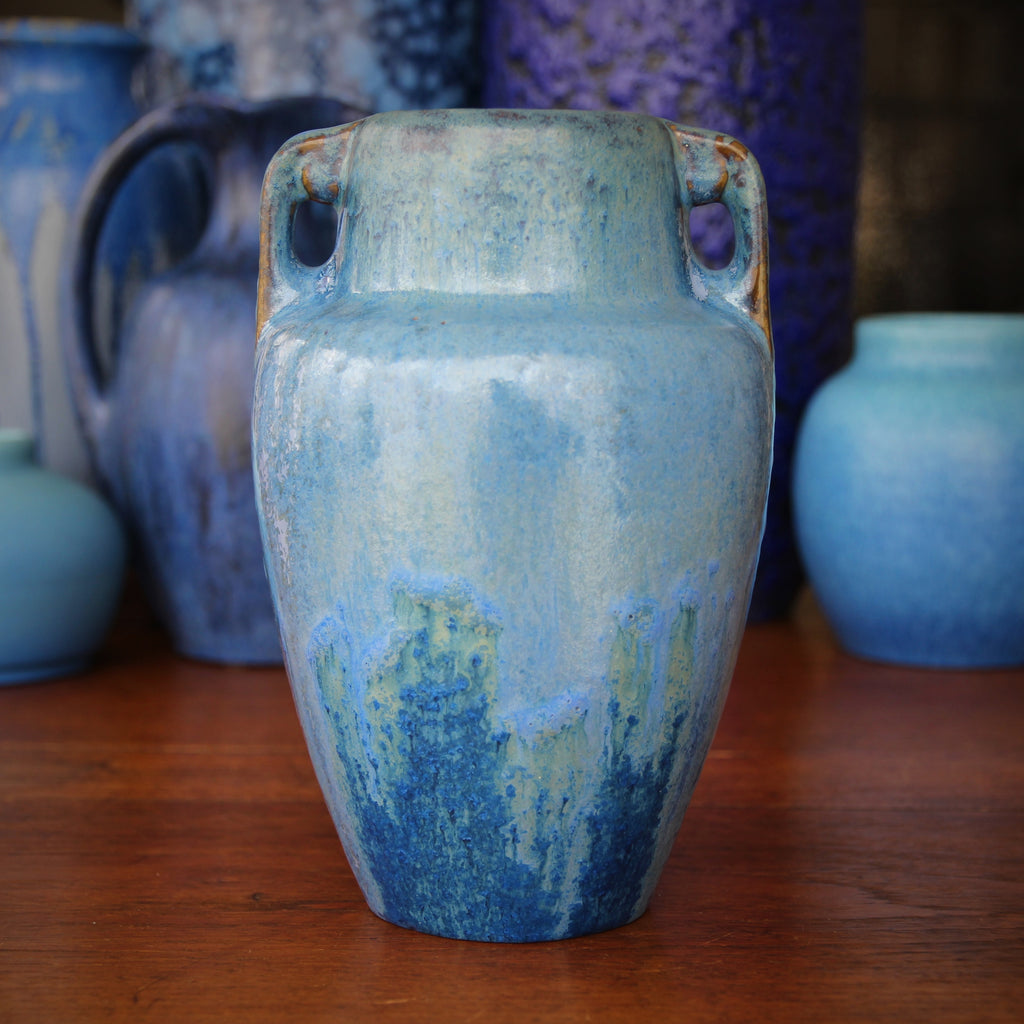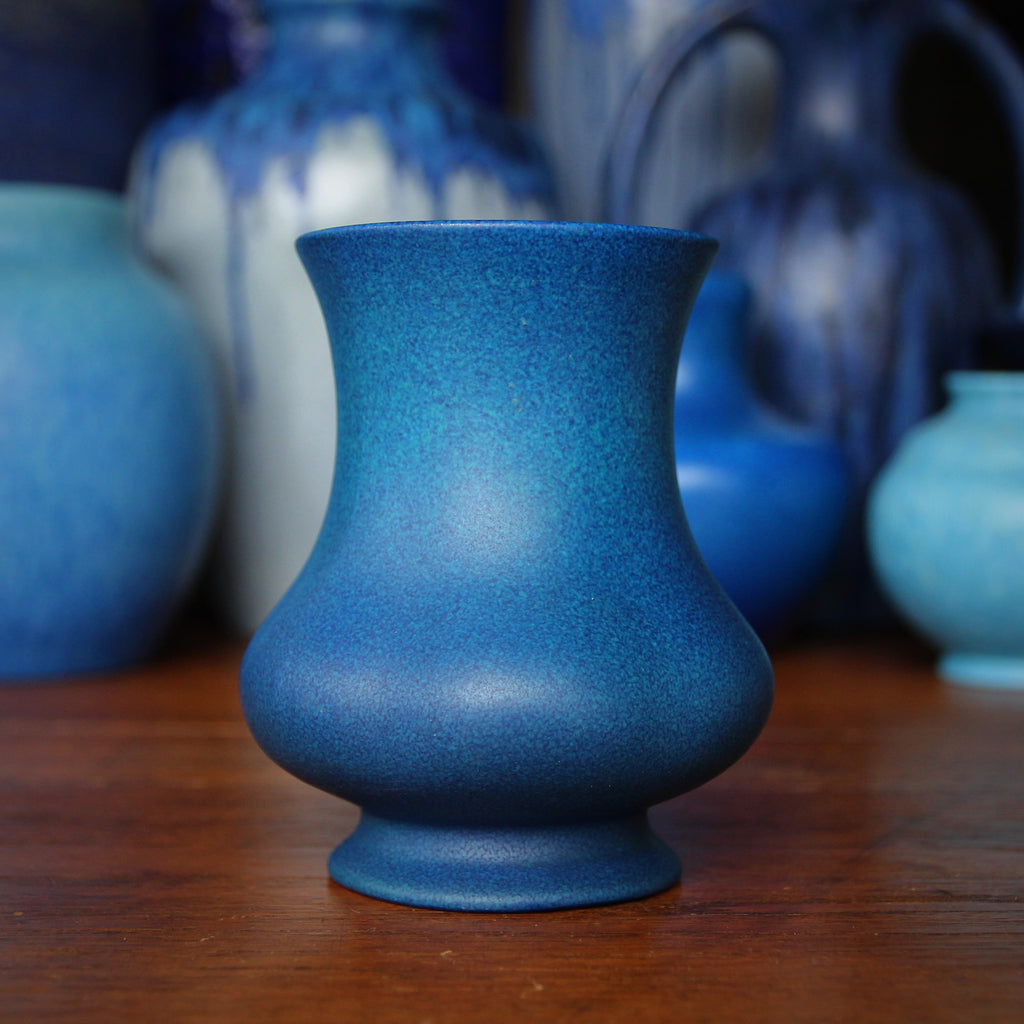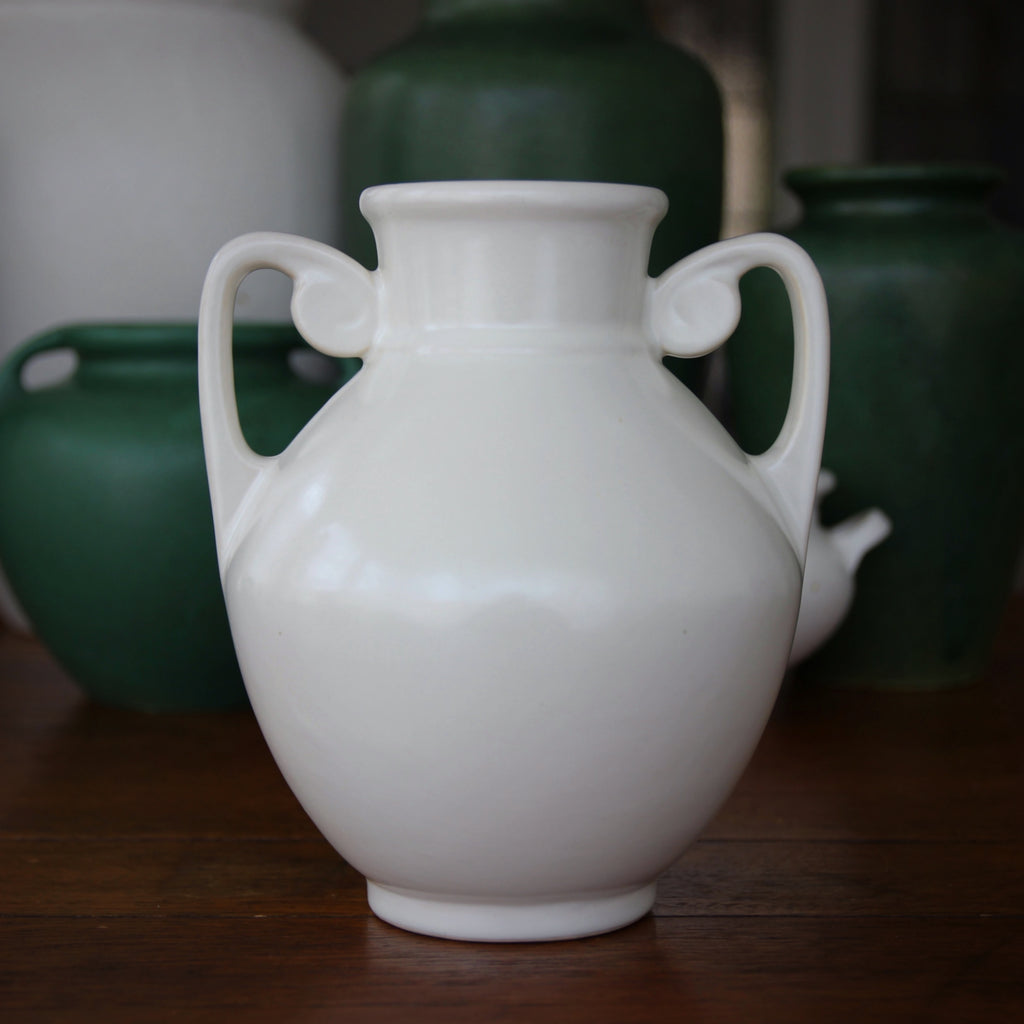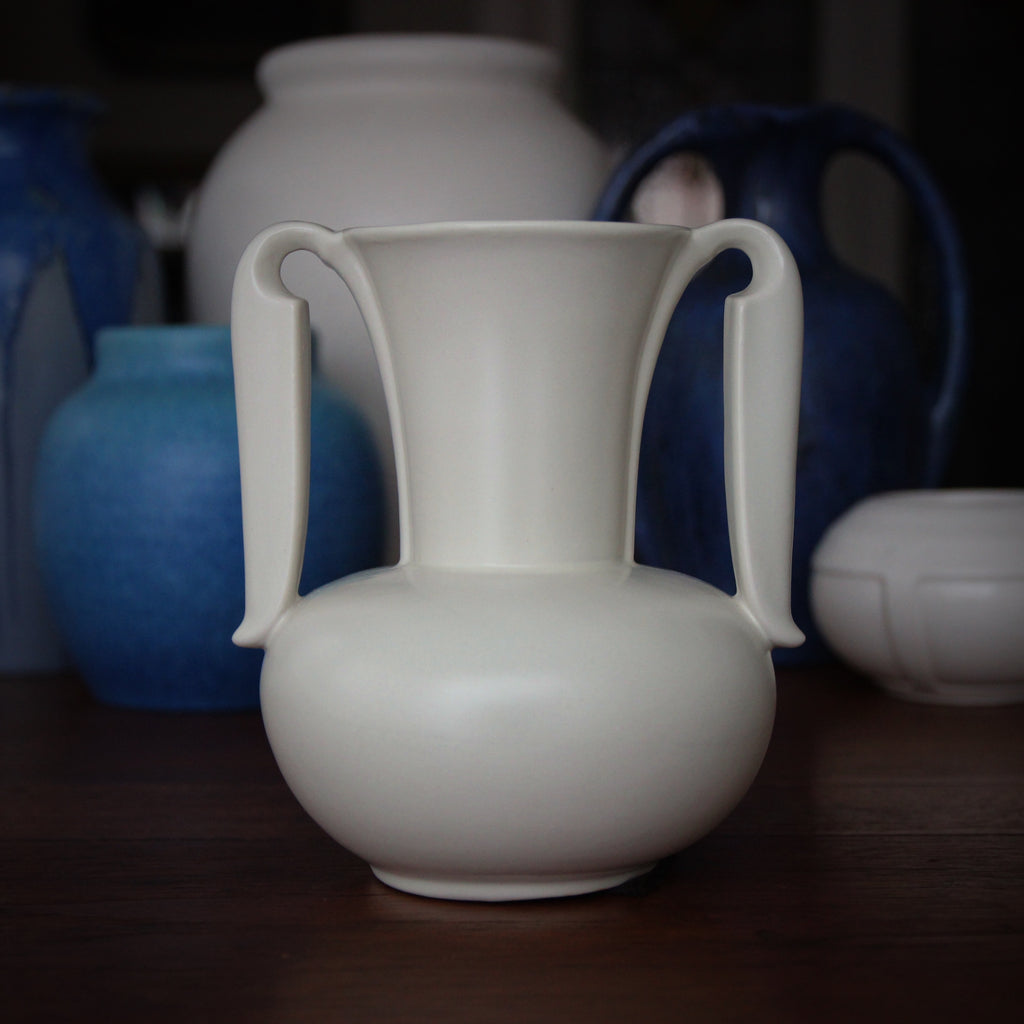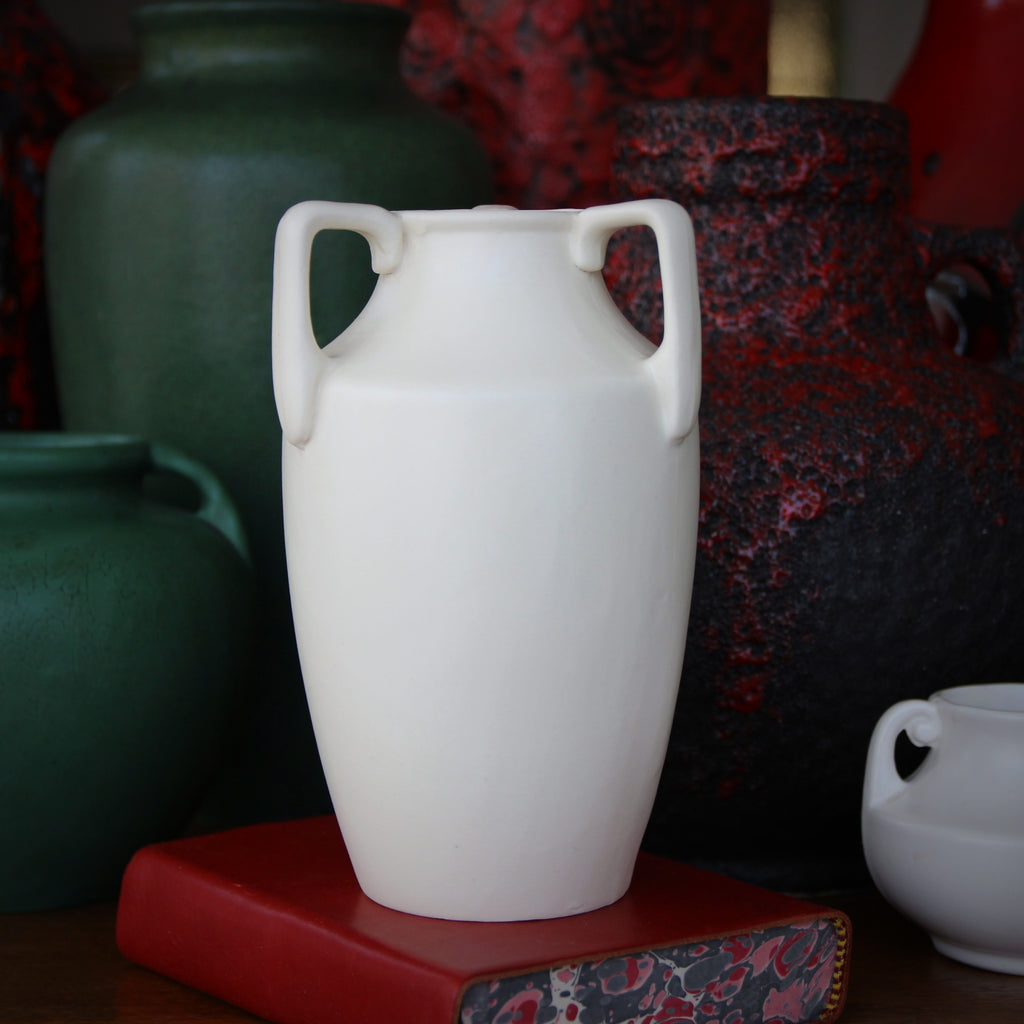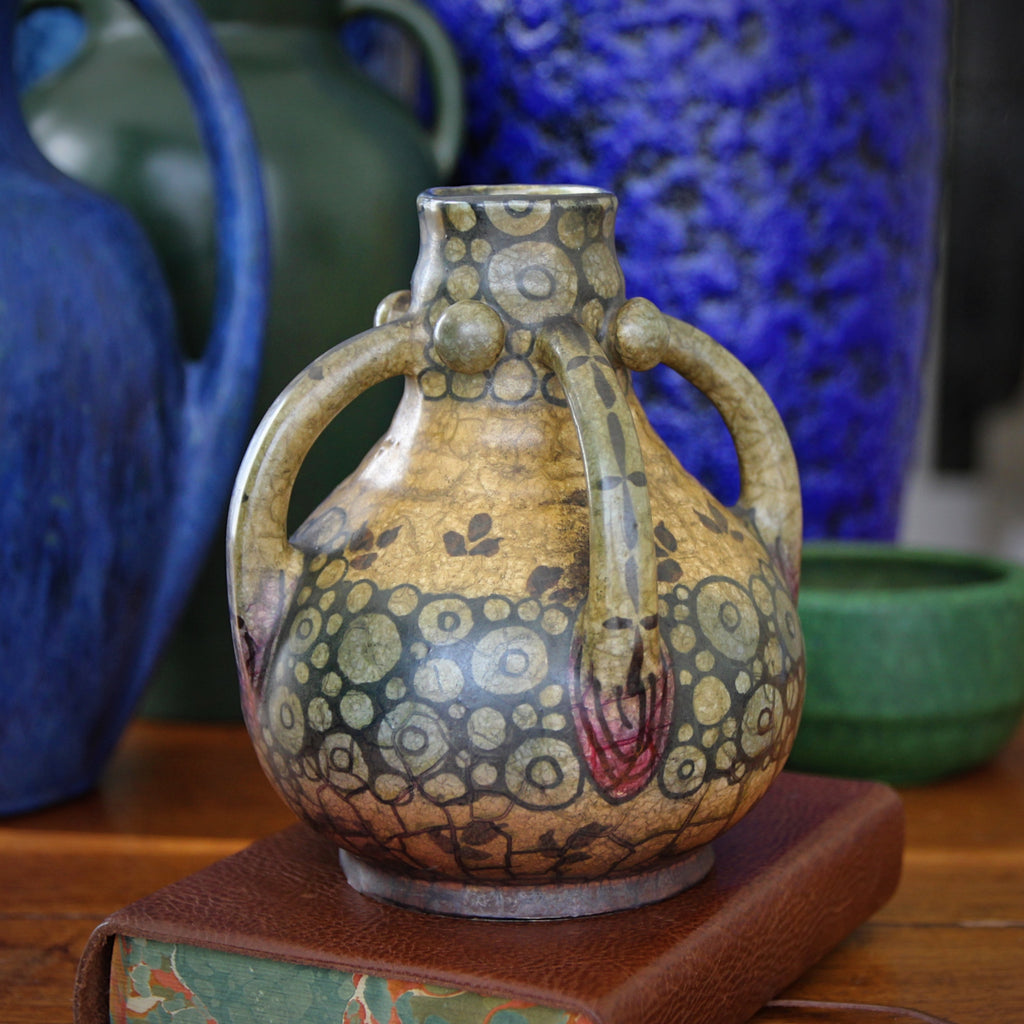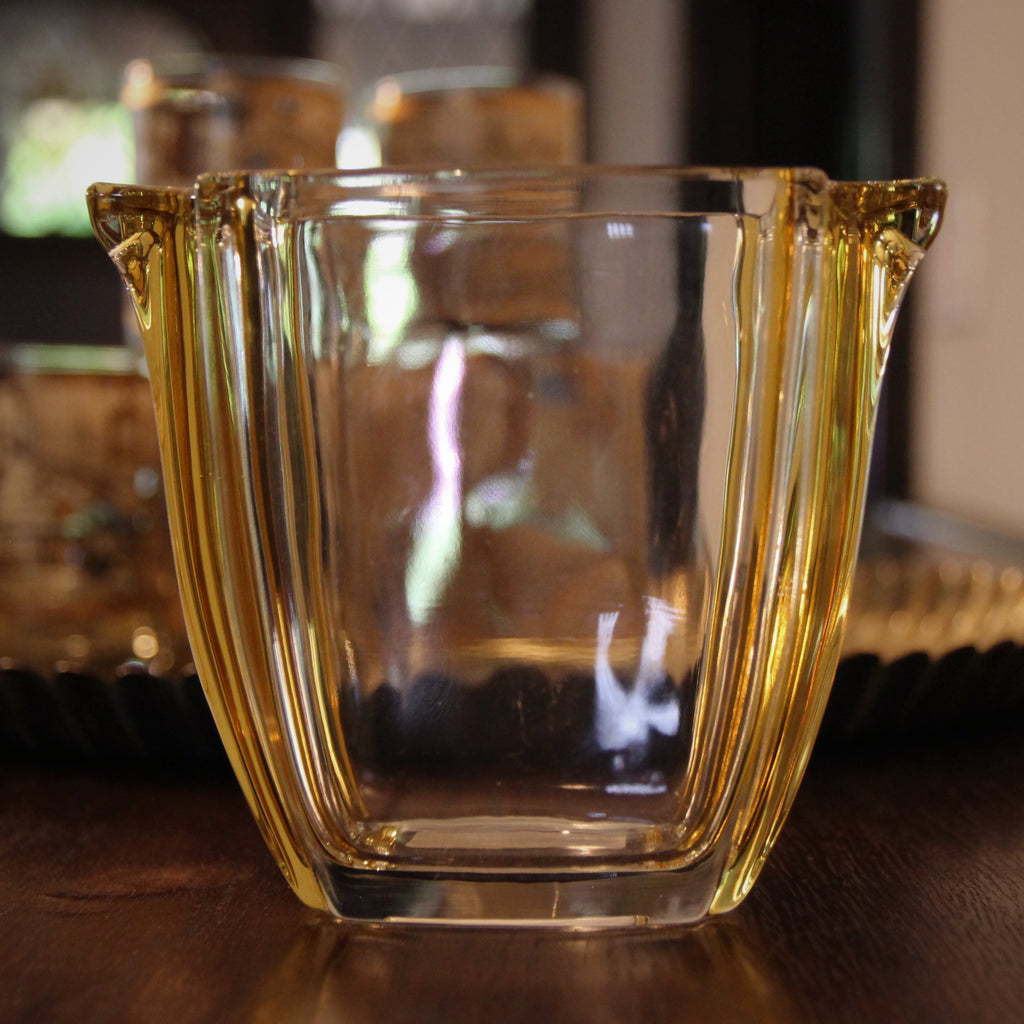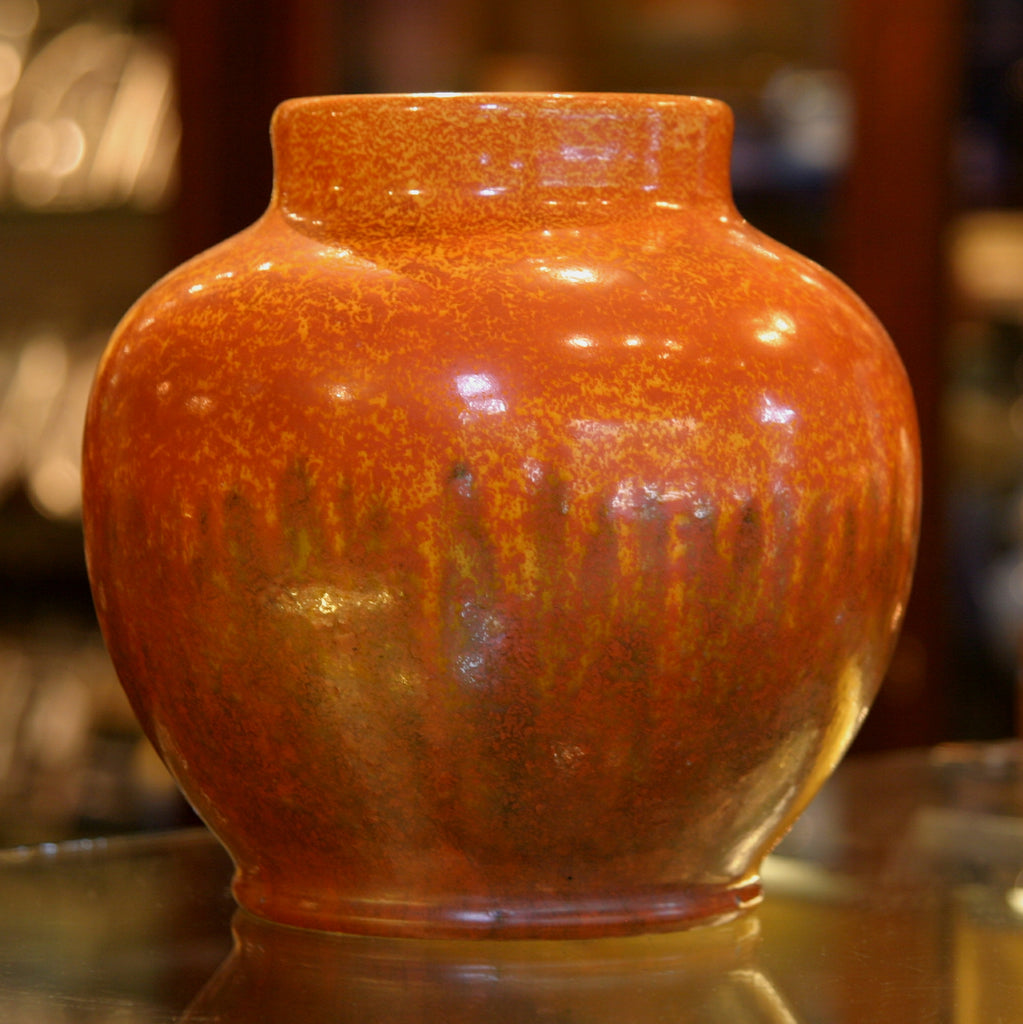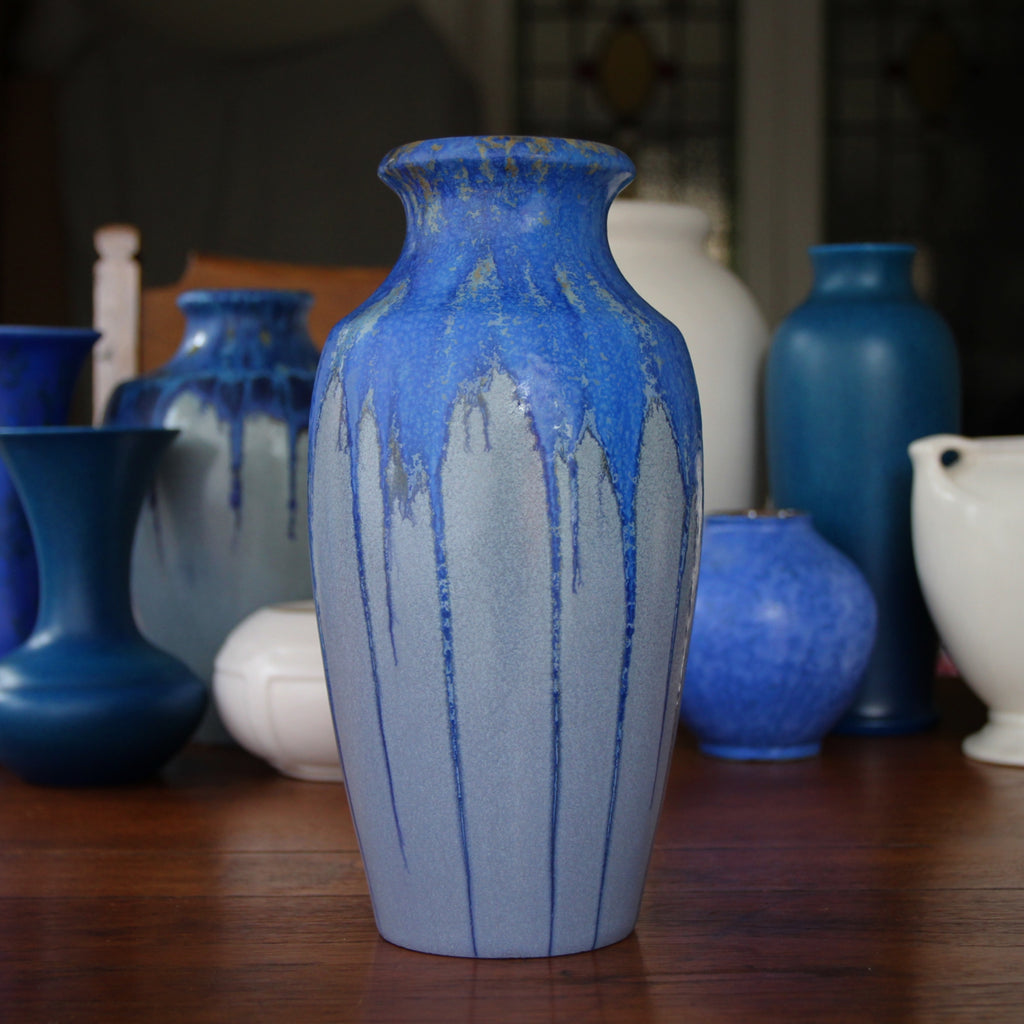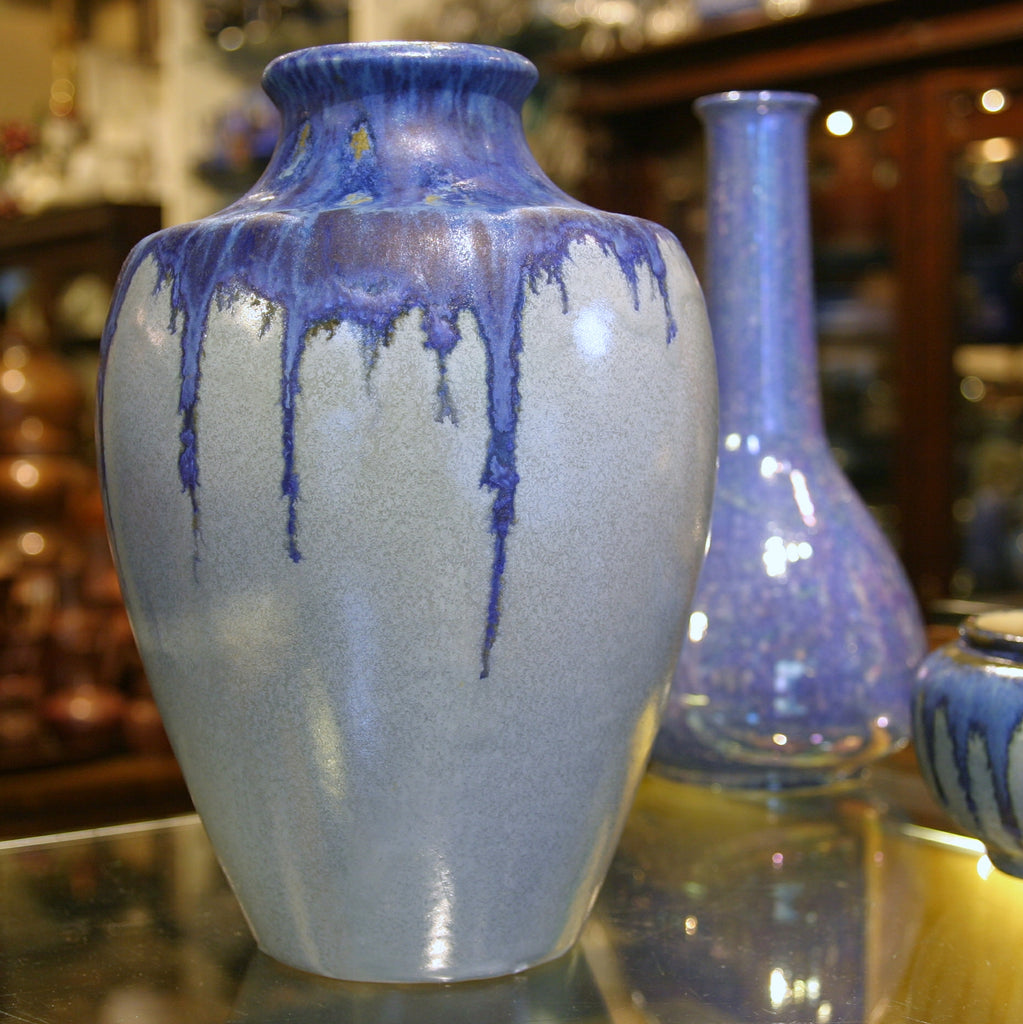JOURNAL — Vases RSS
You mean Winter hasn't even started, yet? No, alas, Winter still is five days away! Yet the wintry blast is upon us. I've shoveled (twice) and already pulled-out my fake-fur hat ("hat hair" be damned—I usually wait much longer to submit). It is cold and icy and Pittsburghers already are cancelling their plans—whether joyous or obligatory. I don't remember "The Snow" posing such a threat to New Yorkers. In New York, one cannot easily avoid the meteorological elements (or other New Yorkers). One must leave the apartment, alight the sidewalk, and walk (outdoors) to the store, to work or to the subway. Snow (or "pending snow") never seemed to affect New York denizens—with the exception of generating a surge in Chinese...
World Aids Day
Today is 1 December, World AIDS Day. It is a day when the world advocates for the prevention and treatment of AIDS—and encourages scientific research to achieve those worthy goals. World AIDS Day was established by the World Health Organization in 1988 with the intent of recognizing the scourge of AIDS, commemorating those who have died from it, and supporting those who live with it.
While much of the world commemorates World AIDS Day today, (the current) U.S. leadership has instructed government officials to cut AIDS research funding and to not acknowledge the observance publicly. Somehow, they assert, America does not care about AIDS.
Autumn in New York - Part Ten
Let's end our trip to New York with a potpourri of handsome and wonderful items—all from the collection of the Metropolitan Museum of Art in Manhattan.
Shown above, an impressive young man who looks none of his 1,800 years old. He was carved of Schist in (what is now) Pakistan in the Third Century AD. He is called "The Buddha of the Future." I'm sure he would turn-heads walking down the street today.
Next we have a Late Renaissance Roman bronze sculpture—a double-tailed Siren—created in the last decades of the Sixteenth Century. She probably once stood outdoors and up-high—perhaps on a fountain or over a gate—on the estate of the powerful Colonna family of Rome.
Autumn in New York - Part Eight
We've always loved ceramics at LEO Design—in every form: vessels, plaques, sculpture or architectural elements. Today we'll share a handful of interesting ceramics pieces from around the world—all in the collection of the Metropolitan Museum of Art. Shown above, an Eighteenth Century porcelain lion. He was made around the year 1732 by Johann Gottlieb Kirchner in Meissen, Germany (about 15 miles from Dresden and 60 miles from the Czech border). This lion was part of a series of large porcelain beasts created for the Japanisches Palais in Dresden. The palace was built in 1715 and expanded shortly thereafter to house the Japanese porcelain collection of King Augustus the Strong. (Collecting Asian ceramics was the rage amongst European aristocrats in the...
All Hallows' Eve
Today is Hallowe'en, Day One of the three-day "Allhallowtide": Hallowe'en (31 October), All Saints' Day (1 November) and All Souls' Day (2 November). All Saints' Day and All Souls' Day are two important celebrations in the Church—commemorating "the faithful departed" (first, for those we know to be saints and, second, for those we don't know, yet). All Saints' Day was first celebrated in 609 AD. The date was later moved to 1 November (in the 730's AD), where it remains to this day. In recent times, the vigil on the night before All Saints' Day (Hallowe'en) has taken-on a secular dimension. Today, children dress-up in costumes and go door-to-door, asking for treats. But the following day, All Saints' Day, is still an...
Welcome, October!
Welcome, October, and your birth flower, the marigold. Marigolds comprise dozens of species in the Tagetes genus. The name, "Mary's Gold," is a reference to the Virgin Mary.
Marigolds originated in Mexico and eventually spread South into Central and South America. This pungently-scented plant has been used medicinally, sometimes drunk as a tea, and it is also employed as a culinary herb or food colorant. In South Asia, marigolds are used decoratively—strung into garlands, decorating shrines, or arranged as a carpet—for celebrations and Hindu religious ceremonies. In Catholic Mexico, marigolds are featured in "Day of the Dead" festivities or used to decorate the freshly-cleaned graves of deceased loved ones.
If You Can Keep It . . .
It was on this day in 1787 and Benjamin Franklin was leaving the Pennsylvania State House in Philadelphia (now called Independence Hall) where the Constitutional Convention members had just voted to approve the US Constitution—and to send-it-onward to the states to be ratified. Elizabeth Willing Powel, the wife of Philly's mayor, asked him, "Dr. Franklin, what sort of government have you given us?" Ben Franklin responded, "A republic madam, if you can keep it." For 249 years, our democratic republic has served America admirably—certainly imperfectly at times, but (generally) improving with every passing decade. The alternative to a democratic republic would have been a monarchy—and the Founding Fathers decided that America must reject an entitled autocrat, gorging himself on plunder...
More Sapphire - IV
Here's another stunning piece by Wendelin Stahl, made in the Fifties or Sixties. This heavy, slab-form piece is pure sculpture—and a statement piece, wherever it may be placed. But it's the masterful glazing which makes the piece exquisite. An organic, taupe glaze flows down the sides of the piece, over a stunning sapphire crystalline glaze. The juxtaposition of brilliant, heavenly glazing on such a heavy (perhaps Brutalist?) form gives this piece an aesthetic tension: the delicate balanced with the brutish. Beauty and The Beast.
More Sapphire - II
Wendelin Stahl was born in 1922 in Höhr-Grenzhausen, Germany. He was born into a family of skilled ceramicists and worked in his father's studio. After World War II (and after art school where he studied ceramics), he and his wife, ceramicist Else Harney, founded their own studio. Their workshop was in "Burg Coraidelstein," the medieval castle in Klotten. Stahl experimented with elegant, Modernist forms—glazed with complex, beautiful glazes. Stahl allowed other artists to display their works alongside his pottery. Many consider him the finest of German Modernist ceramicists. Shown here, a high-shouldered, cylindrical vase with organic, dripping glazes. A metallic, gunmetal-mushroom glaze runs down over a vibrant, sapphire blue crystalline glaze. The piece is classic and Modernist at the same...
Welcome, September
We welcome September—and her regal gemstone, the Sapphire. Mankind has long been fascinated by sapphires. From the Middle Ages, sapphires have symbolized loyalty and trust. People would wear sapphires as a talisman to protect against danger or other harm. Italian superstition tells us that sapphires will protect the wearer from eye disease and melancholy. Sapphires are amongst the hardest of gemstones—and the most expensive. They are one of the four "cardinal" gemstones, alongside rubies, emeralds and diamonds. Sapphires belong to the corundum family which includes rubies. In fact, sapphires and rubies are often found in the same areas, though one of the stones usually will predominate. Sapphires are mined in Africa, Russia, Australia, and parts of Asia (most notably, India)....
Pottery Illustrates Humanity
From the earliest human civilizations, ceramics have been one of the most important signifiers of mankind's ingenuity and aesthetics. Indeed, shards of pottery—sometimes painted, sometimes carved—are amongst the most illuminating remnants of an ancient culture. Pottery was used both functionally and decoratively. It was used to hold liquids: water, wine, oil. It could be used to store foodstuffs: olives, spices, salt. And it could be used ceremonially: in religious or funerary rituals. But ceramics also have been made for strictly aesthetic reasons. And the finest works—wherever in the world they were made—were highly coveted by those who could afford them: monarchs, warlords, industrialists.
Happy Independence Day!
On this day in 1991, Kiev adopted the Ukrainian Declaration of Independence, proclaiming its freedom as a separate, sovereign and independent nation. In February of 2014, Russia invaded Ukraine, occupying Crimea. Russia escalated its attacks on the rest of the country in February of 2022. Today, Ukraine is fighting to defend its independence. It is fighting for its very existence. All good people who believe in Democracy and the Rule of Law must support the Ukrainian underdog. Appeasement of dictators never ends well. And dictators, once emboldened, rarely stop their oppression. Slava Ukraini!
So Much Sun - V
We call "our star" The Sun. Others call it the Sunne, Sünn, Sonne, Sinne, Sunna, Sunnō, Sauil, Slunce, Sōl, or Sól. The Greeks call it Hēlios and the Welsh call it Haul. For billions of years, the Earth has been flourishing thanks to the Sun's heat and light—which takes about eight minutes to get from he Sun to the Earth. We end our parade of "Solar Ceramics" with this handsome and imposing piece by Pilkington Royal Lancastrian. It was made in England in the Twenties or Thirties. It wears the handsome "curdled" glazes—yellow and orange—which have inspired this week's exploration of the Sun. It would make a substantial impact in your home, either standing alone or centering a collection of...
So Much Sun - IV
Scientists tell us that the Sun is approximately 4.5 billion years old—nearly half-way through the "Main Sequence" of its lifespan. It has another 5 billion years (more or less) of hydrogen to burn, similar to the way it burns now. When the Sun no longer has enough mass remaining to stay tightly-compact, it will expand enormously, becoming a "Red Giant"—swallowing Mercury and Venus and making the Earth too hot to be habitable by living organisms (eventually swallowing-up the Earth, too). After the Red Giant burns-up any of its remaining fuel, it will contract into a hot, small, White Dwarf—no longer generating new heat but undergoing a long cooling process (over trillions of years) into a Black Dwarf, which will continue...
So Much Sun - III
The Sun provides the Earth's heat and light—without which, the Earth could not sustain life as we know it. Without the Sun's radiant heat, the Earth would freeze in space's frigid atmosphere. Without light, the Earth's plants could not grow—which provide oxygen and food for other creatures. The Earth's orbital track is the perfect distance from the Sun, beautifully situated in a "sweet spot" that is not too close, not too far. Of course, the seasonal tilting of the Earth (from winter to summer) has an enormous effect on regional temperatures and light. Even this small amount of difference (in distance from the Sun) can make a big difference in regional conditions. Imagine if the Earth's entire orbit were to...
So Much Sun - II
What is the Sun? How was it made? Scientists have spent lifetimes studying, contemplating, speculating, and advancing our knowledge of the Sun. For millennia, the Sun has been a frequent object of human veneration—sometimes even worshipped as a god—by societies who recognized its life-giving force, without which life on Earth would cease. In a nutshell, the Sun is a star—the biggest, brightest and hottest object in our Solar System—around which Earth (and other planets) orbit. The Sun (and the Solar System) was formed when an ancient "Molecular Cloud" began a process of "gravitational collapse," probably triggered by another star's violent explosion. Most of this material (99.86%) rushed to the center, forming the fiery Sun. The remaining few bits (0.14%)...
So Much Sun - I
Is it me? Or is Summer somehow more . . . brutal . . . than I remember? Sure, we've all grown accustomed to the comforts of air conditioning. But this Summer has seemed continuously hotter and drier than the previous Summer (or the 50 Summers before that). In the past, the occasional summertime hot spell was interspersed with more moderate, sometimes cool-ish (and rainy), periods. Now it just seems always to be hot and dry. My little garden has been savaged. My tiny patch of grass is brown. The Sun—that flaming, molten ball of fire in the sky—seems to be more threatening than ever. Climate change and man's damage to the atmosphere add greater alarm. Over the next...
Aged Oak
Oak—as it gets older-and-older—impresses me more-and-more. It seems to get heavier (at least the old oak furniture seems to). And the patina of time on oak becomes richer-and-richer. Symbolically, mighty oak ("from little acorns grow") is hardy, durable and down-to-Earth.
This pair of Victorian English vases is crafted of turned-oak. They were made in the mid-Nineteenth Century, during the first twenty years of Victoria's reign. I suspect that they had been decorative elements, mounted atop a sensational piece of furniture or, perhaps, part of an architectural installation. They look perfect when empty—set at opposite ends of a mantelpiece—or holding dried flowers (holly berries at Christmas, dried cornflowers in the Summer).
Fulper Pottery
When it comes to art pottery manufacturers, some were high-end—with artful glazes and costly hand-finishing—while others sought to mass-produce an attractive product, attractively priced. Fulper Pottery, from Flemington, New Jersey, was one of the high-end, high-minded makers during the late Arts & Crafts period.
Fulper began (as many ceramics makers did) making utilitarian wares: stoneware crocks, tiles and plumbing pipes. Samuel Hill established his namesake company in 1814. His partner, Abraham Fulper, took-over in 1860, when Hill died. He renamed the company Fulper. By the Arts & Crafts period, his grandson, William H. Fulper II, was at the helm. He established the art pottery line, called Vasecraft, in 1909.
Faience
Although this pair of Nineteenth Century French faience vases are small, they punch-above-their-weight when it comes to hand-painted decoration. They were made in the third quarter of the Nineteenth Century.
Faience uses tin-glazes. The addition of oxide of tin to the paint gave the piece an opaque—usually white—base coat upon which other colors could then be applied. This tin-glaze effectively concealed the (usually red) clay beneath, thus "priming" the ceramic as a blank slate (ready for additional, fanciful decoration). This development was an important milestone in the evolution of ceramics- and tile-making.
Art Nouveau, Creepy & Crawly
The Art Nouveau Movement—which we translate as "The New Style" or "The Modern Style"—came on the heels of the Nineteenth Century's "Great Leap Forward." It was a time of progress and increased understanding of science, discovery and critical understanding. At the Turn-of-the-Twentieth-Century, industry boomed. The Middle Class grew. And more people (for the first time) had a little extra money to spend on luxuries, rather than spend every last penny on necessities. This expansion of wealth and markets had an enormous effect on artists, designers, and those who employed them to create and produce merchandise for a growing Middle Class. Whereas, in the past, artists were "commissioned" to work for the "very few, very rich" patrons, artists were now...
Canopic Jars
The Ancient Egyptians had detailed and specific funerary rites—carried-out with precision and filled with religious symbolism. Of course, the more wealthy and powerful received more elaborate (and expensive) treatment. Embalming was a part of this process. Embalming was meant to safeguard the body from decomposition. The Ancient Egyptians believed that the body must be preserved in order for it to be reborn into the afterlife. Egypt's dry climate certainly aided in the preservation of bodies. But practitioners of the funerary arts knew which methods worked best. It was important to remove from the body any of the parts which were likely to decompose, thus putrefying the body: the lungs, liver, stomach and intestines. These organs were removed, salted, and each...
Memorial Day
The idea of visiting the graves of loved ones—perhaps cleaning, tending or decorating them—is an ancient custom, observed the world over. Throughout history, towns, cities, states or countries may have designated a specific day on which this might occur. After the American Civil War, Union General John A. Logan called on all Americans to observe 30 May 1868 as a National "Decoration Day"—a day on which loved ones could visit and lay flowers on the graves of fallen Union soldiers. By 1890, each US state, North and South, had adopted 30 May as Decoration Day. In 1968, the US Congress "regularized" the date to the last Monday in May—which also created a three day federal holiday. And, in 1971, the...
LEO - V
Lions have enjoyed a long history in the decorative arts. This rampant lion—incised upon a Belgian Art Nouveau vase—looks like he could have come from Minoan Crete or Mycenaean Greece. It is true that ancient themes often have been "recycled" by later artists—especially after a new archaeological discovery is made, inspiring new takes on old artworks. This two-handled stoneware vase was made in Belgium by Antoine DuBois (1869-1949), probably around 1920. Initial excavations as Knosos, the remarkable palace on the island of Crete, began in 1877. Much archaeological progress was made in the earliest years of the Twentieth Century—right before this vase was conceived. Crete is considered, by many, the "cradle of Western Civilization." Crete's Minoan art and civilization (3000-1150...
Welcome, May!
Welcome, May, and your birthstone, the Regal Emerald.
Emeralds—one of the four "Cardinal Gemstones"—are called "The Jewel of Kings," and they enjoy a long and illustrious history. Egyptians mined them from 1500 BC and legend has it that Cleopatra decorated her body and her palace with the gemstone. They have been mined in Austria and India since the 1300's and, in 1535, were discovered by Spanish explorers in Columbia (which remains the largest source of emeralds to this day). Emeralds have been credited with increasing fertility, providing immortality, conferring riches, power and eloquence, strengthening memory, counter-acting poisoning or infection, and empowering its wearer to predict the future.
Thinking of Francis - VII
We end our tribute to Pope Francis—and the simple, elegant, white ceramics which remind us of him—with this handsome, Art Deco piece, circa 1935. It was made by Roseville, a ceramics workshop founded in Roseville, Ohio, in 1890. Initially, Roseville made "utilitarian wares" like flower pots and umbrella stands. Over the years, Roseville added dozens of "lines" of pottery, from the delicately hand-painted studio wares to the high-volume mass production wares. Roseville also made several pieces (shapes) which they produced as "blanks"—that is, bisque-fired pieces which could be stored for glazing (and possibly decoration) later, as the orders came in. This strategy allowed Roseville to maintain maximum flexibility, only committing to the production of a specific piece after it had...
Thinking of Francis - VI
We come back to Haeger Pottery with this Modernist piece, made in the Sixties or Seventies. It is a highly-architectural silhouette—with more than a passing resemblance to Frank Lloyd Wright's Guggenheim Museum on Fifth Avenue, New York City. Although it is firmly within the Modernist sensibility, there is still a trace of the "long tail" of the Art Deco movement (which began in the Twenties and lingered-on, evolving, yes, well into the Fifties and Sixties). It is finished with a matte white glaze.
Thinking of Francis - V
In 1886, German immigrants Thedore Ebeling and Frederick Reuss joined John E. F. Zeh (in Philadelphia) to import glass and ceramics items from Europe to America. In 1900, Zeh left the company, now called Ebeling & Reuss. The company imported European crystal, ceramics figurines, and art pottery pieces—like the Secessionist vase, shown here—to be sold-onwards to gift shops and other retailers in America.
This Secessionist vase is topped with three crisp handles and finished with a flat, matte white glaze. It was made in the newly-formed Czechoslovakia (established in 1918) and bears the date mark of 1918 - 1921.
Thinking of Francis - IV
This week, we are marking the passing of Pope Francis by sharing a collection of simple, white ceramics which (somehow) capture the elegant purity and honest simplicity of the beloved pontiff. Like Fulper Pottery in Flemington, New Jersey, Haeger Pottery began its life humbly. It was founded in 1871 making bricks, drain tiles, flower pots and tiles in Dundee, Illinois. In 1914, Haeger decided to establish a higher-margin artware division. Haeger hired-away ceramicist Johann Martin Stangl (from Fulper) to direct the new division. Thus began one of the highest volume mass-production ceramics workshops in America. Eventually, Stangl returned to Fulper (which he later purchased and renamed after himself). But Haeger continued to grow (and succeed) through the Art Deco and...
Thinking of Francis - III
So many ceramics manufacturers started their lives by making "sanitary ware" or even more utilitarian items like tiles and sewer pipes. Time and circumstances allowed these companies to adapt to the changing times, perhaps seeking higher-end, more profitable output. The Hill Pottery Company was founded in 1814 in Flemington, New Jersey. Around the time of the American Civl War, Abram Fulper purchased the company (renaming it "Fulper"). By the Turn-of-the-Century, his grandson, William Fulper II, was running the firm. In 1909, William Fulper created the art pottery division, calling it "Fulper Vasecraft." Fulper needed an experienced ceramicist to develop the cutting-edge forms and glazes of a "studio ceramics" workshop. He hired Johann Martin Stangl, an immigrant from Munich, Germany,...
Thinking of Francis - II
Abingdon Sanitary Manufacturing Company, founded in Knoxville, Illinois, in 1908, was the maker of America's finest "sanitary ware": sinks, toilets, water fountains. Their special blend of clays and high-heat firing methods created a "vitreous china" product that was beautiful, watertight, and resistant to damage. Abingdon was the first manufacturer to introduce colored plumbing fixtures to the market (1928). In 1933, Abingdon supplied all the plumbing fixtures to the Chicago's World Fair. The Depression was not good for the company; nationwide, most building projects came to a halt. Most of Abingdon's orders were cancelled. So, from 1934 to 1950, Abingdon introduced a line of "consumer" artware items—using the very same vitreous china and glazes that they used for their sanitary ware....
Thinking of Francis - I
This morning's passing of Pope Francis marked the end of a chapter of the Catholic Church. Francis was my favorite pope, in my lifetime—and many people (Catholic or not) were moved (and improved) by his call for Mercy.
Part of Francis's appeal was the conviction with which he side-stepped the enticing grandeur of the office. He could have dressed ornately. He could have lived in the opulent Papal Apartments. Instead, he chose to live in a modest apartment—alongside brother priests—and he dressed in the simple, white garments which represented modesty, purity and simplicity. This is not to say that Francis blended-in with a crowd. On the contrary, one always knew who he was and what he represented.
Spring Green - VIII
Let's end our Saint Patrick's Day "Parade of Green" with this handsome participant: an English Arts & Crafts vase by Pilkington Royal Lancastrian. The voluptuous and bulbous body is surrounded with a line of prehistoric "fiddlesticks," like the unfurled curls atop an emerging fern. The use of naturalistic, Darwinian—sometimes even grotesque—botanical elements is classic Art Nouveau.
Equal to the superb form is the sensational finish. The glazing is a dappled blend of green and blue—rich and deep. The complex glaze only adds greater intensity to an already highly-dimensional form.
Spring Green - VI
Sgrafitto is the Italian word for the technique of artistic scratching (from the verb graffiare—"to scratch"). This method may be used on plaster, on painted works, or (like with the vase shown above) on ceramics. After the ceramic piece is fired once—and a "bisque" form is obtained—it is glazed and allowed to air dry. Once dried, selected areas are scratched-away with a stylus, revealing the raw clay, beneath. When the glaze is fired a second time, the color—and the scratched-away design—become permanent.
The sgrafitto technique was popularized in Renaissance Italy, especially on the ceramic (tiled) surfaces of grand buildings. The technique later became popular in Persian ceramic craft.
Spring Green - III
Earlier this week, I expressed my love for matte green Arts & Crafts pottery. I find the shade so relaxing and natural—reminiscent of tree leaves upon oaken furniture branches. Matte green hues extend the full range from the pale to the ultra-saturated. The matte green of the Weller Arts & Crafts vase, shown above, hits the color range dead center. And it is possibly the finest piece of matte green pottery I have ever collected. This vase was part of their "Bedford" line from the early Twentieth Century. The tall, cylindrical form is buttressed and footed—and robed in a luscious matte green glaze. One can see the incised floral decoration, underglaze, near the top of the vase.
Welcome, March
We welcome, March. And we welcome your flower, the Daffodil—surely a most-welcome sign of a pending Spring! Daffodils are part of the Narcissus genus which are members of the Amaryllis family. They first grew some 33 million years ago, on the Iberian peninsula, from which they spread throughout Southwestern Europe and into North Africa. They became very popular in Europe in the 1500's and were extensively developed in the Netherlands shortly thereafter. Thousands of "cultivars" were developed through selective breeding. Long known to be poisonous (thus, deer won't eat them), they have been used medicinally since ancient times. Today, they are being studied as a possible treatment for Alzheimer's Dementia. But please be careful; their chemical components can have dangerous...
It's Showtime!
This year marks the 30th anniversary year of LEO Design. And—in all that time—we have never participated in an antiques show. I guess that I have always rationalized that, since I pay so much rent (and I lived in a city of 8.5 million people), why should I schlepp heavy and delicate merchandise miles away to set-up a folding table in a booth? What could I achieve in a weekend in a booth that I couldn't achieve over a weekend in my Greenwich Village shop? Finally, a change! Today—in our Thirtieth Anniversary Year—I will exhibit in my first antique show ever! Deciding what to bring was the first big task. Then, packing it—smartly and compactly—came next. I intended to only...
Countdown to St. Valentine's Day - 1
Tomorrow is "the big day"—St. Valentine's Day. We're sharing some of our favorite "reds" this week. Perhaps one of them will make the perfect Valentine's Day gift for a much-deserving sweetheart? Wars have a way of defining and separating the aesthetic movements which flourished before and after the conflicts. After World War Two, the world was ready to move-on from the Art Deco which had characterized the period between the wars. Mid-Century Modernism would become the fresh, new look—a signal that the world was moving-on, into the future. Wars also have an impact on people, institutions and companies. What worked before (or during) a war, may not succeed once the conflict has concluded. Italica Ars was formed in 1948—just after...
Countdown to St. Valentine's Day - 3
When it comes to pottery, which factor is more important: form or glaze? In truth, both are consequential. But, if I were forced to choose only one of them, I would have to say that the glazing is most important. Form can be easily copied. A ceramicist can easily make a mould based upon the shape of another artist's finished piece. In fact, pottery factories would sometimes sell their discontinued moulds to competitors. Glazes, however, are much more difficult to decipher and control. A small variation in glaze ingredients, their application, kiln temperature, firing time, or cooling process can result in significant differences in outcome. And the process of figuring-out (and then duplicating) a new glaze is filled with numerous...
Countdown to St. Valentine's Day - 5
With St. Valentine's Day on the horizon, let's look at some of LEO Design's suitably-red offerings for the February holiday.
Shown above, a handsome West German Modernist jug-form vase by Töpferei Hartwig Heyne. The firm was founded in 1850, during the Prussian Empire, in Silesia—along the Polish border. After World War Two, much of Silesia was transferred to Poland under the terms of the Potsdam Agreement. At this point, Hartwig Heyne's descendants—Christine Heyne and her aunt, Meta—re-started the company as a smaller, studio pottery workshop in Oer-Erkenschwick, Western Germany. This move coincided with the emergent Modernist aesthetic, soon to become the most important interior design trend in the post-war West.
Feeling Blue - VII
In 1901, Grand Duke Friedrich II of Baden established a ceramics workshop in Karlsruhe—in the Southwest of Germany, along the French border. His aim was to promote craft and industry in the region. Over the years, the Majolika Manufaktur Karlsruhe produced quality works which represented the changing fashions of design: from the Art Nouveau, through Art Deco, to Bauhaus and Mid-Century Modern. One of their star designers was Friedegart Glatzle. She was born in 1920. After high school and technical (trade) school for ceramics, she was snapped-up by Karlsruhe upon graduation in 1951. Over a thirty year career with the company, she produced over 1200 moulds for Karlsruhe and was the leading design voice for the company. She also oversaw...
Feeling Blue - V
The color Petroleum Blue is a rather hard to pin-down precisely. An internet search suggests an overly broad range of bluish-greens. Furthermore, the name elicits a negative response in some—such are the environmental consequences of petroleum (especially when it has been spilled). But the color—which the Brits call Petrol Blue—is handsome, indeed. And the color did enjoy the embrace of shelter magazine hipsters five or six years ago. Broadly defined, petroleum blue is a blue-green with an emphasis on the blue. Perhaps the name poetically implies the elusive nature of the color—reminiscent of the unstable iridescence seen when petrol is spilled upon a floor or into a puddle of water. In any case, petroleum blue is a justifiably sophisticated and...
Feeling Blue - IV
This week we've been sharing some of our handsome blue pieces—an attempt to brighten the national "blue mood" as a bitter frost assaults our country. Let's hope for a change in the weather.
The simplicity of the English Arts & Crafts vase, shown above, belies the technical and aesthetic beauty of the piece. The voluptuous shape seems to curve sensuously in all the right places. And the softly-dappled cobalt glazing is simultaneously simple and complex, at once soft and bold. The form and the glazing are satisfyingly executed—whether the vase is displayed alone or within a larger group of ceramics.
Feeling Blue - III
When it comes to wintery glazing effects, this French Art Nouveau vase is really the icing on the roof. It was made by la Faiencerie Héraldique Artistique de Pierrefonds in the Teens or Twenties. The workshop was founded by the Comte d'Arros, Olivier de Sorra—a painter who wanted to produce ceramic wares in the village of Pierrefonds (about 50 miles northeast of Paris). After a slow start—producing "heraldic stoneware" with noble French crests—he landed upon the Art Nouveau stoneware with exceptional glazes for which he would forever be remembered.
The form is a simple, classically-inspired pot—with two little bumps, suggesting "handles" upon the rounded shoulder. A snowy-grey underglaze allows the organic, dripping overglaze to really pop.
Feeling Blue - I
An ill wind sweeps across America. I've been shivering for days. Others have been burning-up. How do we survive such a national calamity? There is no easy answer to such a question. For me, one thing is true: I'm praying for a change in the weather. True, the times are blue. Yet, blue can be so beautiful. Over the next few days, we will be sharing part of our "Collection of Blue"—currently in-stock at the LEO Design on-line shop. Let's make the best of the melancholy. Shown above, a West German Modernist vase, made in the Sixties or Seventies. It is squat in form, with a "volcano-form" neck rising from its crisp shoulder. And it is glazed in a sublime...
Winter White - XI
The satin white finish on this Art Deco vase is wonderful to hold and behold. It was made by Abingdon Pottery in Knoxville, Illinois, in the Thirties of Forties. Like yesterday's featured Horsehead Bookends, this Abindgon vase was made of uber-durable vitreous china, is finely hand-finished, and has a creamy-smooth satin white glaze. (Please see yesterday's Journal entry for more about the Abingdon Pottery Company.)
The silhouette of the vase is of classic, Chnese high-shouldered form. A series of ribs encircle the base and simple, Greek Key fretwork circumscribes the neck. It is a handsome piece—whether standing alone or arranged within a grouping—and very useful for flowers (the constricted neck holds-together a small handful of flower stems).
Winter White - VIII
Is anything ever really new? In the arts and aesthetics (at least), not as often as one may think. Artists, in all times, have taken inspiration from other artists (and artworks) which have come before. Take the Thirties vase, made by Roseville (Ohio), shown above. Its form—the body of the vessel—is a Classical Greek amphora shape, a silhouette used for thousands of years. Add to that the Art Nouveau "whiplash" handles—an aesthetic which was popular three or more decades before this vase was made. On top of this, we can perceive a Modernist Art Deco sensibility in the piece, despite the Ancient and the Art Nouveau elements. Somehow, all the old elements have been re-combined (by a talented artist) to...
Winter White - VI
Imagine scatterings of crystalline snow—granulated like sugar—blanketing patches of an otherworldly, volcanic-pumice mountainscape. That's what I see with this West German Modernist "genie pitcher" by Carstens. Full of texture and complexity—all within a tight palette of black and white (which creates grey). The Carstens family has a long history of ceramics-making, having operated workshops in Germany since the Nineteenth Century. Things really came to a boil during the early Twentieth Century, when Christian Carstens—along with his sons, Christian and Ernst—expanded the company broadly, buying smaller factories and setting-up new workshops. The company produced a wide range of porcelain, earthenwares and "sanitary ware" (that is, ceramic plumbing fixtures like water fountains, toilets and urinals) and was a top player in the...
Winter White - IV
Newly-fallen snow can look so pristine, so perfect. In fact, after a fresh snowfall, I often try to limit my footsteps to the same narrow path along the edge of my driveway—an attempt to maintain the largest possible blanket of snowy perfection. But such perfection is fleeting. (Perhaps a metaphor for life.) In time, the snow melts, wild animals scamper, and—sooner or later—I need to drive my car down the driveway. The brilliant white gradually becomes brown; the melting snow turns to slush and the earth below begins to dapple the winter white. What was once a lovely improvement has become a messy blight. (Perhaps a metaphor for life.) But that, too, shall pass: with the rising temperature, the slush...
Winter White - I
While we're blanketed by snow, let us feature a few handsome pieces which channel the Winter's temperament.
Shown here, a West German Modernist vase by Ceramano (located in Ransbach-Baumbach, Germany, about 55 miles Northwest of Frankfurt). The workshop was founded in 1954 by Jakob Schwaderlapp, the same man who previously had established Jasba (in 1926). Jasba had always been a mass production-oriented operation, utilizing less artisan handwork (per piece) and generating a high volume of affordable output. After World War II, with the boom of post war Modernism, Schwaderlapp launched a new workshop in order to bridge the gap between expensive, high-touch studio production and the less expensive (but commonplace) mass production. Ceramano was the result of this mission.
A Clean Sweep
We finish our Winter Ablution with this forward-thinking creation. Even by today's standards—some ninety years after it was made—this piece still radiates Futurism. In the Thirties, space travel was still a dream. But all sorts of people—scientists, writers, artists—projected us into their imagined worlds of the extraterrestrial. Three decades later, in the Sixties, space travel finally was realized. Yet somehow, to me, those earlier, romantic notions of the future will always be a little more beautiful, dreamy and fantastical than the reality which followed. I suppose that artful conceptions are not limited by the realities of physics. And the Sixties Space Age was an exciting time. But I still prefer the Tomorrowland of the Utopian Future. The two-handled "flying...
Happy New Year.
Wishing all a Happy New Year of health, love and contentment. And a heartfelt Thank You to all who supported LEO Design in the previous year. Most years, I trot towards the New Year with optimism and gratitude—grateful for the fresh start, happy for a new beginning. Perhaps it's the turning of the Filofax, with its new pages so fresh and clean. Or could it be the cold, clear freeze—which has eliminated all traces of the previous season? No, not this year. Unlike in years past, I feel as though I'm being pushed unwillingly into this new year, forced into a new and dangerous era. But Time and Tide Wait for No Man. None of us can stop the clock. So here...
Ah, Houseguests!
Guests for the Holidays? Help keep their toothbrushes tidy with this Victorian English ironstone toothbrush caddy, made in the 1880's. The maker was Edge, Malkin & Company in Burslem, Stoke-on-Trent, England (the region of much Nineteenth-Century British ceramics production). The transfer pattern is called "Dacca," named after the Colonial Indian city (now Dhaka, Bangladesh). More broadly, the Dacca pattern satisfied the Western taste for Asian-inspired decor, especially in ceramics. The pattern fits squarely within the Aesthetic Movement of the Late Nineteenth Century. Ironstone is a type of pottery developed in England in the 1810's. It was a durable, hard-wearing, cheaper alternative to fine porcelain—suitable for mass production and ideal for decorating through transfer printing. Transfer printing, first developed in the...
Almost Heaven
West Virginia (and Ohio and Western Pennsylvania) was a center of American glass-making from the Nineteenth Century. Blenko Glass, founded in 1922, is still operating in Milton, West Virginia. William Blenko, an English immigrant to the United States, founded his first American glass company in 1893. His workshop created window panes by blowing cylinders of molten glass, cutting them open, and flattening them (in an oven). He made clear glass and colored glass (to be used in stained glass windows). His first company (and two more, after that) failed. His fourth company, Blenko (as we know it today), succeeded. During the Great Depression, when many building projects (the source of his revenue) were sidelined, Blenko broadened his product line to include decorative...
"Transitional"
In the home furnishings industry—and in the decorative arts—the term "Transitional" is a convenient "safety word" to describe a piece which has the characteristics of two (or more) consecutive schools of design. It's often true that transitional pieces were created on the cusp of two significant, distinct movements. The vase above presents a good bit of Modernism (which was en vogue at the time it was made) and a little bit of Art Deco (from its recent past). To me, it is reminiscent of a softened version of Frank Lloyd Wright's Guggenheim Museum in New York. Like the building, the vase's "stacked," graduated segments get larger toward the top of the vase. Wright's museum was finished in 1959, after 15 years...
Welcome, November!
Today we welcome November—and her birthstone, the Citrine.
The Citrine is a pale yellow variety of quartz. Its sunny color is thanks to the iron content within the chemical structure of the gemstone. And Citrine's sunniness was not lost on Greeks—who first used the stone around 300 BC—who believed that the gemstone could help alleviate depression. At the time, Citrine was very rare, thus expensive, opulent and luxurious. As larger deposits were later discovered and mined (notably in Brazil), the gemstone became more common and fell within reach of more and more admirers.
All Hallow's Eve
Tonight is All Hallows' Eve—more popularly called Hallowe'en—the first day of the Allhallowtide "triduum." Allhallowtide consists of three days: Hallowe'en, All Hallows' Day (also called All Saints' Day) and All Souls' Day. Essentially, Hallowe'en is the vigil, the night before the Holy Day of All Saints' Day (1 November). On All Saints' Day, all the saints are commemorated—both those whom we can name and those we do not know. 2 November is All Souls' Day—the day when all the faithful departed are commemorated. Since the early days of the Christian Church, various locales celebrated varying days for the commemoration of Christian martyrs. Later, this celebration was broadened to honor all the saints (martyred or not). In the Seventh Century, this celebration was expanded throughout...
The First Day of Autumn
Today is the First Day of Autumn. More specifically, it is the Autumnal Equinox. "Equinox" means "Equal Night." During an Equinox, the night and day are (roughly) of equal length. As we all know, the Earth rotates upon a central axis which tilts toward and away from the Sun (with the seasons). On the Equinox, the Earth's axis is perfectly aligned with the Sun—which places the Sun directly over the Equator. Today's Equinox (at precisely 8:43 am) marks the start of Autumn in the Northern Hemisphere and the start of Spring in the Southern Hemisphere. In the Northern Hemisphere, each day's length of sunlight has been getting shorter since the Summer Solstice of June 20th. Now, after the Autumnal Equinox, each day will...
The Last Day of Summer
"Summer afternoon, summer afternoon;
to me, those have always been the two
most beautiful words in the English language."
- Henry James
Yes, summer afternoons can be wonderful. Yet, alas, all good things must come to an end—including summer afternoons. Today, Saturday 21 September, will be our final summer afternoon until next year. Autumn will begin tomorrow morning.
Perhaps the two-handled vase, shown above, will serve as a reminder of endless, late-Summer afternoons. Though it was made in Mid-Century Germany, after World War Two, it clearly was inspired by Country French or Italian ceramics—perhaps a vase from Provence or Tuscany.
Friday the Thirteenth
In the West, Friday the Thirteenth is perceived as an unlucky day. It seems that this idea became widely popular in Nineteenth Century France. The earliest written reference to unlucky Friday the Thirteenth is a line in the 1834 play, Les Finesses des Gribouilles: "I was born on a Friday, December 13th 1813, from which come all of my misfortunes." That same year, the Marquis de Salvo wrote in the Revue de Paris about a Sicilian count who had killed his daughter on a Friday the Thirteenth. "It is always Fridays and the number Thirteen which bring bad luck." In America, it was T. W. Lawson's book, Friday, the Thirteenth (1907), which popularized the superstition on this side of the...
Baccarat
Amongst the finest—and most prestigious—of glassmakers in the world stands Baccarat. The company was founded in 1764 in Baccarat, France (about 250 miles east of Paris). The Bishop of Metz sought a new business for the village—hopefully one which could use the large supply of firewood produced in the diocese. He appealed to King Louis XV who authorized the glassworks. The company's initial production was fairly pedestrian: window panes and tableware. But, in 1817, the company developed an improved crystal formula (using nickel oxide) and from this point Baccarat Crystal narrowed its focus to the finest, high-end merchandise. Maharajahs, Tsars, Napoleon III and The Japanese Imperial Court commissioned pieces. Other customers included Coco Chanel, Prince Rainier & Princess Grace of Monaco, Josephine...
Bastille Day
Are humans naturally drawn to Authoritarianism? Or, rather, do people yearn to live free? For centuries, historians and philosophers have studied various peoples living under monarchs, dictators and thugs. Why do some people prefer "to just let Daddy take over"? In 2024, we still do not know this answer.
Throughout history, there have been moments of people standing up to overwhelming Authoritarianism. Most of these moments have been bloody, deadly, and have spawned unpredictable results. Ultimately, history will be the judge of whether these revolutionaries are labeled "Patriots" or "Criminals." Remember: the winners write the history.
Summer First
Today, at 4:50 pm, Summer will have officially begun. Today is also the Summer Solstice, the longest day of the year—that is, in the Northern Hemisphere. It's the shortest day of the year in the Southern Hemisphere. As every schoolchild learns, the Earth spins on a vertical axis, an axis which tilts back-and-forth over the course of the year. On the day of the Summer Solstice, the North Pole (that is, the Northern axis), is tipped as close to the Sun as it will get. Thus, today, the Northern Hemisphere is receiving maximum Sun exposure (and the maximum number of hours of sunlight). Starting tomorrow, the axis will begin to slowly tip-back, away from the Sun, and the days' periods...
Cinco de Mayo
On 5 May 1862, Mexican troops successfully defended the forts of Loreto and Guadalupe from the larger, better-equipped French forces of Napoleon III. The two forts sit atop a hill overlooking the city of Puebla (about 75 miles Southeast of Mexico City). Although the French came back the following year—and took Puebla—the 5 May event served as a motivating rallying cry for Mexican troops.
Today, Cinco de Mayo is more-widely celebrated in the United States (as a celebration of pan-Mexican culture) than it is in Mexico. However, in Puebla, the day remains important and one can visit two forts which are now history museums.
Star Wars Day
It's "Star Wars Day"! May the Fourth be with You!
I have always been attracted to otherworldly, "planetary" ceramics glazes—dappled, lunar, extraterrestrial finishes, reminiscent of foreign planets (real or imagined). What they lack in bright color, they provide amply in texture and sophistication. I keep a collection of them displayed together (most to be found in the LEO Design on-line store) and enjoy the bold impact of contrasting shapes and organic surface patterns.
The German Modernist vase shown above, made in the Sixties or Seventies by Emons & Söhne, wears a dappled grey glaze over a chocolate brown under-color. It reminds me of the planet Mercury or some yet-to-be-discovered moon.
Matte Green Ceramics
Among the first Arts & Crafts antique pieces I purchased for my store was a piece of matte green ceramics. It was an extra-large jardiniere and it sold right away—in the first couple of days of business. Since then, I've had a particular fondness for matte green pottery. It has such a wonderful, natural, organic look. When displayed on wood, it is reminiscent of the leaves on a branch. I find the color and the finish restful.
Palm Sunday
Today is Palm Sunday—the day on which Christians commemorate the final week, hours, and moments of Christ's life on Earth. What starts with Christ's triumphant entry into Jerusalem ends with betrayal, brutal torture, execution and burial in a tomb. Of course, to Christians (mournful as this is), this final "Passion" is the unavoidable pathway to Christ's death and resurrection. Palms—especially palm branches—have enormous significance throughout the Middle East and around the Mediterranean. Of course, the date palm was an important source of sustenance in this hot and arid region: food, shade, and useful materials. The palm branch was sacred to Mesopotamians (c. 6000 BC), symbolized immortality to the Ancient Egyptians, and represented victory to the Ancient Greeks and the Romans....
William Salter Mycock
Pilkington Royal Lancastrian employed several notable ceramics designers and decorators including Charles Voysey, Walter Crane, Richard Joyce, Gordon Forsyth and Gwladys Rodgers. The artist with the longest career at Pilkington was William Salter Mycock. In fact, his years at Pilkington spanned the lifetime of art pottery production for the company.
William Mycock was born in 1872. His earliest working years were as a freelance "jobber" decorating pottery for various firms in the region. He also painted ceramics at Wedgwood while taking art courses at night. Mycock joined Pilkington in 1894, two short years after the company was founded. At this point, he was decorating Pilkington's ceramic tiles (the company's first product).
Oh, So English
Much of the time, Art Deco styling is expressed with streamlined shapes, sharp edges and dynamic color combinations. Art Deco was Modern, Futuristic, Ready-for-the-Space-Age. Rocket ships and airplanes symbolized this fast and forceful promise. And Art Deco was wildly popular—incorporated into all manner of design, from architecture to toaster plugs.
This vocabulary of Art Deco crispness certainly was employed in British design. But, over the years, I've noticed a distinct and specific version of English Art Deco—a sub category—which is a little gentler, a little rounder, a little more subtle than its typical American sibling. In this English variety, designers "softened" the typically crisp Art Deco features.
Bretby Orientalism
In the Nineteenth Century, imported Chinese ceramics were all the rage in Europe (especially England). But these costly treasures were beyond the reach of all but the wealthiest collectors. British ceramics workshops began to make goods "in the Oriental style," for the domestic market. Rarely were these pieces authentic. In fact, they were usually over-the-top. And they almost never reached the quality of true Chinese ceramics in form, glaze or handcraft. But they did allow customers of modest means to acquire a small dash of far-away style—a taste of someplace exotic, on the other side of the world, which they could never enjoy visiting in-person.
Edward Thomas Radford
British ceramicist Edward Thomas Radford (born 1860) was a master of wheel-thrown pottery. He began his career at Wedgwood, followed by stints at Linthorpe, Burmantofts, Doulton, then back to Wedgwood. He was recruited to a new pottery company, Pilkington, in 1903 (it began making pottery in 1904) and he stayed here for the rest of his career. Radford retired in 1936 and Pilkington discontinued art pottery in 1938 (though its ceramic tile manufacturing continued). Radford was a star at Pilkington. He could throw monstrously-sized pots or the tiniest of pieces (only 1.5 inches tall). And he could throw a pot and then fashion a perfectly-fitting lid by eye (and hand) alone. Although many of the pieces at Pilkington were cast,...
China and Darwin
This vase, probably English or French, ticks a couple of Nineteenth Century boxes: Asian Style and Darwinian Intrigue. Both of these dynamics were at play in the minds of Late Nineteenth Century Europeans. First, there was the Western fascination with "Oriental" art and design—especially Asian style as embodied by Chinese ceramics (which 95% of Europeans could not afford). For a few centuries, Western traders had been crossing vast seas, buying and selling with China, Japan and Southeast Asia. Chinese ceramics were an important (and valuable) part of this trading mix. The Chinese had mastered ceramics production techniques which blew the minds of the Europeans (this despite their fairly primitive kilns and other equipment). Red glazes (including oxblood, as shown in...
March, On!
Welcome, March, and your flower, the glorious Daffodil.
Is there any flower more hopeful, more optimistic, than the daffodil? It emerges during the chilly bleakness of winter—a sunny, bright, resilient reminder of beautiful days to come. Quite often, it is the only spot of color in an otherwise grey landscape. And what a color it is!
The Stangl Art Deco vase, shown above, is dressed in a saturated daffodil yellow glaze. The vase's form is inspired by a Classical Greek or Roman urn, embellished with a pair of foliate handles—which honor both the ancient aesthetic and the modernism of the Art Deco. And the rich yellow color practically vibrates with sunny optimism.
Earthy Green
Green is my favorite color of pottery. The reason? Perhaps because I really love wood—boxes, furniture, paneling, cabinetry—and what looks better with wood (trees) than leaves and grass (green)? I find the color green (at least most shades) calming, centering. Green relaxes me. It's the color of nature herself. And the deeper the green, the more I like it.
The Übelacker West German Modernist jug, shown above, is a home run! The earthy, green glaze, for starters, is deep, deep, deep—and just this side of muddy (without being drab). Plus, the glaze is a matte finish—another few points in its favor.
James Plant Ceramics - Part II
A few weeks ago, a British (Dutch-born) ceramics collector contacted me about my James Plant ceramics offerings, which he had seen on-line. He is writing a book on the influence of Gouda (Dutch) pottery on English ceramics design. James Plant's "Orientalist" wares—while they certainly have their own distinctive aesthetic—do share a similarity with Gouda's hand-painted pieces. He asked for more photos of my pieces and my permission to use my photos in his forthcoming book. I was happy to help—and happy to have acquired new-found motivation to re-shoot the photos of the two pieces (which had never been well-lit in their original photos).
James Plant Ceramics - Part I
The history of James Plant & Sons English ceramics is, shall we say, "contested." Although the vase designs and decoration are firmly rooted in the 19th Century—Christopher Dresser-inspired shapes, hand-painted "Persian Orientalist" decoration, and an 1890's Aesthetic Movement attitude—certain English collectors contend that such wares were created during World War I, when Liberty of London sought to find a replacement source for Gouda-type (Dutch) ceramics (which could no longer be imported, due to the war).
Here's what we do know about James Plant & Sons. There are records of multiple "James Plants" working in and around Hanley, England—the heart of "The Potteries," Stoke-on-Trent, Staffordshire.
At Swim-Three-Fish
A most handsome vase has "swum" our way: an English Art Deco beauty by Pilkington Royal Lancastrian. A repeating pattern—three carp-like species riding atop scrolling waves—is incised upon the body of the vase. A mottled orange and yellow "uranium" glaze pops against an earthy "kelp brown" background. This vase was made in the Twenties or Thirties, just outside of Manchester, England. It has enough presence to hold-its-own as a statement piece. And yet, I must admit, it does look good featured against a collection of other Royal Lancastrian pieces.
Zinc
Zinc is a metal and one of Earth's 118 elements—and useful in many ways. Combined with other metals, it adds strength, corrosion-resistance or other desirable features to an "alloy." Brass is an alloy of copper and zinc (3%-45%, depending on the variety of brass desired). Zinc is sometimes alloyed with copper and tin to make bronze. And nickel silver is an alloy of copper, nickel and zinc. Rolled sheets of zinc are used in roofing or atop the wooden countertops in bars. And U.S. pennies, since 1984, are principally plated zinc. In recent years, since the ill effects of lead have become widely-known, zinc has often been used as a replacement for lead (in fishing weights, tire balances and other...
Amazing Glaze
In the world of ceramics, I have always treasured wonderful glazes—even more than I value form. A great form, once sculpted, can be duplicated endlessly. And, in many cases, form is easy for someone else to copy. Art pottery companies in the Twentieth Century would frequently sell their old moulds—or their employees would be hired-away by competing firms. After the Coca-Cola bottle was design in 1915, it was produced in the millions (billions?) for worldwide distribution—and has become an iconic feature of the global Coca-Cola brand. But no artistry or reinvention is necessary to keep that wonderful form in the marketplace (besides aggressive lawyers who guard vigorously the bottle's trademarked shape).
For the Champion, 1935
This Dutch hand-hammered pewter trophy combines elements from the Art Nouveau and the Art Deco. The hammering of pewter was a classic Art Nouveau treatment. The vessel's flaring, trumpet-like shape is punctuated with a pair of feathery, classical handles—a certain Art Deco influence.
The piece is "touch-marked" with the maker's name, "Gero." The company was founded in 1912 in Zeist, Netherlands, near the city of Utrecht. Gero (which is still in-business today) was the first company in Holland to manufacture affordable cutlery. They also produced pewter ware, like the trophy cup shown above, until 1955. A succession of artists and creative directors over saw the company's design, though I am uncertain which artist designed this piece.
Winter's Chill - X
Let's end our parade of wintery pottery back in Pierrefonds, France—back in the shadows of the Medieval Chateau de Pierrefonds. It was here that Art Nouveau forms were dressed in sophisticated crystalline glazes, resulting in works which are unlike anything seen before or since. The French Art Nouveau vase, shown above, has an organic, egg-form body. It sits on a "platform foot" and is punctuated with two peaked, "bat wing" whiplash handles. As wonderful (and striking) as the form itself is, it's the sublime glaze that really takes this urn over the top. Multiple colors—blues, tans, greens—drip casually over the curved body of the vessel. Some of the glazes have crystallized in the kiln. And, because the vase wears a...
Winter's Chill - IX
The English ceramic pot shown above, hand-thrown by Edward Thomas Radford for Pilkington Royal Lancastrian, is finished with a gorgeous, sky blue glaze. And, if one looks carefully, one will see that the blue glazing displays the subtlest of ombre effects—slightly lighter at the top, slightly darker at the base—not unlike the graduations of color to be found in the actual winter sky. You also still can see (and feel) the delicate fingermarks on the sides of the vessel, left by the potter himself, on the day the pot was formed upon its spinning wheel. A vase like this can be used to display a striking, minimalist floral arrangement—think three sculptural stems. It would also look good with a full,...
Winter's Chill - VIII
Even in the coldest of weather, the ocean seems to remain liquified—at least as far north as I've ever traveled (New England). It's plenty cold, indeed, yet the waves continue to wash ashore and its salty foam bubbles, churns and slowly recedes back to the sea. This West German Modernist carafe-form vase is glazed in a sea-worthy blue, topped with a dripping, tempest-tossed white foam. The corseted neck of the vase provides a constricted opening at top—perfect for gathering a modest number of stems together, nice-and-tight. And the blue (and white) coloration provides a fresh backdrop for any manner of flowers: white carnations, yellow roses, green hydrangeas.
Winter's Chill - VII
We hop back to England, Stoke-on-Trent, to be specific. This conglomeration of six small towns in Staffordshire, England, was Ground Zero of British ceramics production in the Nineteenth and Early Twentieth Centuries. The region was frequently referred to as "The Potteries." Clay could be dug out of the ground. Coal was plentiful. Labor was cheap. And the region's glut of manufacturing ensured that train service (for shipping-out merchandise) was frequent and efficient. The George Clews pottery company was founded in 1906 in one of Stoke's towns, Burslem. In 1908, they moved to bigger facilities in the adjacent town of Tunstall. Although the company was named after the Clews family patriarch, George, the organization was actually run by his son, Percy Swinnerton Clews...
Winter's Chill - VI
Saturated blue glazes drip organically down the bold, two-handled form of this French Art Nouveau urn from the early Twentieth Century. It was made in the French village of Pierrefonds—some 55 miles North-East of Paris—in the shadow of the village's Medieval castle, Le Chateau de Pierrefonds. The deep blue glazes convey an ice-cold mien, perfect for the frozen, clean winter weather. The Pierrefonds pottery workshop was opened by a painter, a French nobleman, Comte Hallez d"Arros in 1903. He envisioned producing handsome tableware—plates, bowls, pitchers—painted with fancy aristocratic heraldry: shields, banners, noble crests. The village's castle, he thought, would be a perfect backdrop to such a romantic and aspirational product line. And the pottery's name, La Societe Faienciere Heraldique de Pierrefonds,...
Winter's Chill - V
This smallish vase—perfect for a stem or three—reminds me of a heavily clouded winter sky. Tightly-packed, fluffy clouds allow a bit of icy blue to peek-through. Or, perhaps, it looks like compressed ice on the surface of a frozen pond. As the water freezes and melts and freezes again, a dappled, irregular pattern emerges. The piece was made by Jopeko in West Germany in the Sixties or Seventies. Jopeko began its life, under a different name, in the mid-Nineteenth Century. Like so many Twentieth Century potteries, its earliest output was "sanitary ware"—pipes, crocks, kitchenware and water coolers—not fancy decorative objets. But, after World War II, Germany (and Japan, another "vanquished" country) found that it had a large labor force to put...
Winter's Chill - IV
Like a midnight sky, this West German vase is a play on shades of blue: inky, blackish blue with eerie streaks of penetrating brightness. It displays a simple—yet satisfyingly sensual—organic form and wears a random drip glaze which adds to its one-of-a-kind appearance. As the glaze courses over the soft curves of the vase, it creates an object filled with dynamism and movement and complexity. The ceramicist is Fridegart Glaztle who had a long and consequential career at the Karlsruhe West German ceramics studio. The Karlsruhe ceramics factory was founded at the Turn-of-the-Twentieth-Century to produce ceramics in the Italian Renaissance style. It underwent several changes of owners over the years, including private ownership by Villeroy & Boch and being state-run...
Winter's Chill - III
An icy season calls for an icy glaze. This handsome piece by Fulper (c. 1905, Flemington, New Jersey) is glazed in an organic Impressionist Winterscape of lustrous and crystalline glazes—frosty blues and just a hint of green. Think of a frozen, icy rock face or the hard, shiny surface of an icebound lake. Fulper was one of the true "art pottery" workshops in America during the Arts & Crafts period, attempting to emulate the coveted "Oriental" glazes which had eluded Western potters. Although the company had started its life (in the Nineteenth Century) by making utilitarian wares, by the Turn-of-the-Twenieth-Century, Fulper was hiring skilled artists and technicians to produce quality, expensive art pottery. Part of this high-minded mission may account for...
Winter's Chill - I
The Winter's Chill—bitter though it is—brings with it a sense of freshness, cleanliness, purity. The color white often symbolizes a snowy, cold expanse. But I also feel that blue—the color of sky, water and ice—can express beautifully the cleansing wintry freeze. For the next few days, we'd like to present an array of handsome blue ceramics, from many different countries, which might bring a little beauty to this otherwise frosty season. In 1889, brothers Edward and Alfred Pilkington were in the coal business. One of their new, prospective mining sites, in Clifton—on the outskirts of Manchester—proved to be a bust. Sited alongside Fletcher's Canal, the mineshafts only produced water and clay. But this clay was perfect for making decorative tiles...
December is Here!
Welcome, December, and your sublime birthstone, the turquoise. Turquoise is amongst the earliest of mined gemstones, collected by humans for over 5,000 years. The stone has been found in Persia, the Sinai Peninsula (Egypt), Afghanistan, China, India, Mexico and the American Southwest. Egyptians buried their dead with carved turquoise talismans carefully inserted within the deceased's body wraps. The stunning burial mask of King Tutankhamun was decorated with inlaid turquoise. The Book of Exodus refers to the High Priest's turquoise encrusted breastplate. In the Middle East, mosque domes were sometimes decorated with (or painted) turquoise to convey the notion of "Heaven on Earth." And, in the New World, archeologists have found ancient turquoise artifacts of the Zuni, Pueblo, Aztec and Mayans. To this day,...
Looks Like Snow - III
Let's wrap-up our parade of white, snow-inspired vases with this handsome urn by Roseville, circa 1930.
Classical ceramics—made in Greece, before the time of Christ—have provided inspiration to later potters for thousands of years. Shown above, a Classical Greek-form urn, adapted to the early Twentieth Century with Art Nouveau-inspired "whiplash" handles. When an ancient form is updated with a (then) modern accent, something new and interesting is created. When glazed in a clean, satin white finish, the resulting piece is timeless and endlessly beautiful.
Looks Like Snow - II
This week we're commemorating the season's "sense of snow." Although Winter has yet to begin, it feels like it may snow at any time. Clean, white vases will help us prepare for the blanketing to come. Shown above, an Art Deco two-handled vase from the Thirties. It was made by Stangl in Trenton, New Jersey. But the Stangl company took a long and winding path to the Thirties. Samuel Hill opened the Samuel Hill Pottery in Flemington, New Jersey, in 1814. They made functional, fairly primitive items: red clay water/sewage pipes and stoneware crocks (for food storage). Potter Abraham Fulper later joined the partnership and, in 1860, purchased the company outright (at which point he changed the name to Fulper...
Looks Like Snow - I
Though it is still late November—and Winter remains four weeks away—it's beginning to feel like snow. I have seen a flake or two twisting earthward in the last few days. So let's clean our palette, after Thanksgiving, with an assortment of snow white urns, now in stock at LEO Design. Think of this as a preview of the clean, white landscapes which will soon shimmer around us. Shown above is a Czech Art Nouveau period vase, crowned with three crisp, angular handles. It was made in Norther Czechoslovakia between 1918 and 1921. The maker is Ditmar-Urbach in Teplitz-Turn, Czechoslovakia, and it was imported to the US by Ebeling & Reuss (Philadelphia, Pennsylvania). Theodore Ebeling and Frederick Reuss, two German immigrants to...
A Family Affair
In 1892, in Turn-Teplitz, Bohemia (now called Tronvany, Czech Republic), a family group of ceramicists and other artists formed the ceramics studio Riessner, Stellmacher & Kessel (sometimes called by its nickname, Amphora). Alfred Stellmacher (born in Thuringia, Central Germany) had developed an improved clay material which allowed him to create porcelain flowers—even better than the French, winning him a Gold Medal at the 1889 Paris Worlds Fair. Stellmacher formed RSK with his son, Eduard Stellmacher, and three sons-in-law: Karl Riessner, Hans Riessner, and Rudolf Kessel (most of them trained artists). The workshop's location in Northern Bohemia, close to the German border, gave the studio access to newly-minted ceramicists from The Imperial Technical School for Ceramics & Associated Applied Arts in Dresden...
Futurist Form
Form, color and function coalesce handsomely in this Roseville Art Deco two-handled vase, circa 1935. Its space aged design—like an improbable Jules Verne flying saucer—offers a "throwback Modernism" to "A Futurism that Never Was." Like a Jetson's subcompact, actual flight is less important than the suggestion of aero-dynamism. The color is wonderful, too: a satiny white, not quite matte-dry, but with just a hint of shine. And I've learned over the years, a vase with a constricted neck will always make the flower arranging easier and better-looking. The narrow opening helps to support and gather the flower stems; fewer flowers won't look quite as paltry as they might when spreading across the opening of a wide-mouthed vase.
November is Here!
Welcome, November, and your birthstone the Citrine.
The Citrine is a pale yellow variety of quartz. Its sunny color is thanks to the iron content within the chemical structure of the gemstone. And Citrine's sunniness was not lost on Greeks—who first used the stone around 300 BC—who believed that the gemstone could help alleviate depression. At the time, Citrine was very rare, thus expensive, opulent and luxurious. As larger deposits were later discovered and mined (notably in Brazil), the gemstone became more common and fell within reach of more and more admirers.
All Hallows' Eve
Today is "All Hallows' Eve"—Hallowe'en—the night before the important Christian Holyday of All Saints' Day. All Saints' Day began in the Fourth Century as a commemoration of Christian martyrs. By the Ninth Century, Christian communities in England were celebrating All Saints' Day on 1 November—a practice which was soon thereafter mandated worldwide by Pope Gregory IV. All Saints' Day (a Holy Day of Obligation for Roman Catholics) is the solemnity at which all saints—known or unknown—are commemorated. In the Christian faith, a saint is simply any soul which has reached Heaven (and is with God). Although we (mere mortals) don't always know who has already reached Heaven or not, the Church has designated certain souls as having "made it"—based on...
Bleu Français - Trois
As inventive as every generation aims to be, sometimes the past just cannot be improved upon. Such is the case with Chinese ceramics design (whom the Western World had been trying to copy for centuries). Thus, ceramicists, in every place and time, pay occasional homage to the Chinese masters of the past—and their forms which have proved classically enduring.
The Pierrefonds French Art Nouveau vase, shown above, is of classic Chinese form. But the glaze treatment is all Art Nouveau. A steely blue-grey underglaze wears a cape of dripping, organic glazes on its high shoulders. Light crystals are encrusted along the shoulders while tendrils of glaze drip languorously down the sides of the vessel
Bleu Français - Deux
The upscale ceramics workshop Societe Faiencière Heraldique de Pierrefonds was founded in 1903 by the painter Olivier de Sorra, the Count Hallez d'Arros. He was enchanted by the picturesque village of Pierrefonds, about 50 miles Northeast of Paris. He built a pottery in the shadows of the commune's handsome chateau—decorated as it was with plenty of turrets and gargoyles. The Count's original plan was to make handsome dinnerware—plates, bowls, tureens—bearing painted heraldic decoration. The plan didn't fly and soon Art Nouveau sculptor, Émile Bouillon, came-in to try something new. Bouillon's highly-sculptural works, beautifully-glazed (sometimes with crystalline finishes), scratched the world's Art Nouveau itch—and business took off. Soon Pierrefonds was selling in the smartest Paris shops (as well as in London, New...
Bleu Français - Un
Amongst my favorite trio of vases—in my LEO Design collection—is this set of three French Art Nouveau vessels, which I shall share over three days, made by Pierrefonds in the early Twentieth Century. Classic forms of heavy ceramic stoneware are glazed with a steely blue-grey underglaze, then capped with an organic, dripping blend of blue glazes: cornflower, royal, cobalt blue. The crisp, classical forms are juxtaposed against the random, uncontrolled embellishment—creating an artistic, dynamic tension.
This high-shouldered vase is a classic—even an ancient—form. The dripping glazes pool and curdle within the eddies of the flat ridge encircling the neck.








